Mexico City is a place whose history is rooted within the heart and soul of the people who live there. Despite being a short flight from most major US and Canadian cities, it feels like travelling to an entirely different world! With a vibrant art scene and fantastic foodie culture that rivals big cities like New York, Tokyo and Rome. Mix great art and food with awe-inspiring architecture and history and you’ll see why Mexico City has quickly become one of the most sought-after travel destinations. Set between tall mountains and volcanoes, you are nestled into this little valley. Here, the weather is almost always warm, but not too hot. A sweet escape from those suffering through those bitter cold winter months. With this amazing 7-day itinerary you’ll be able to experience all the magic Mexico City has to offer!
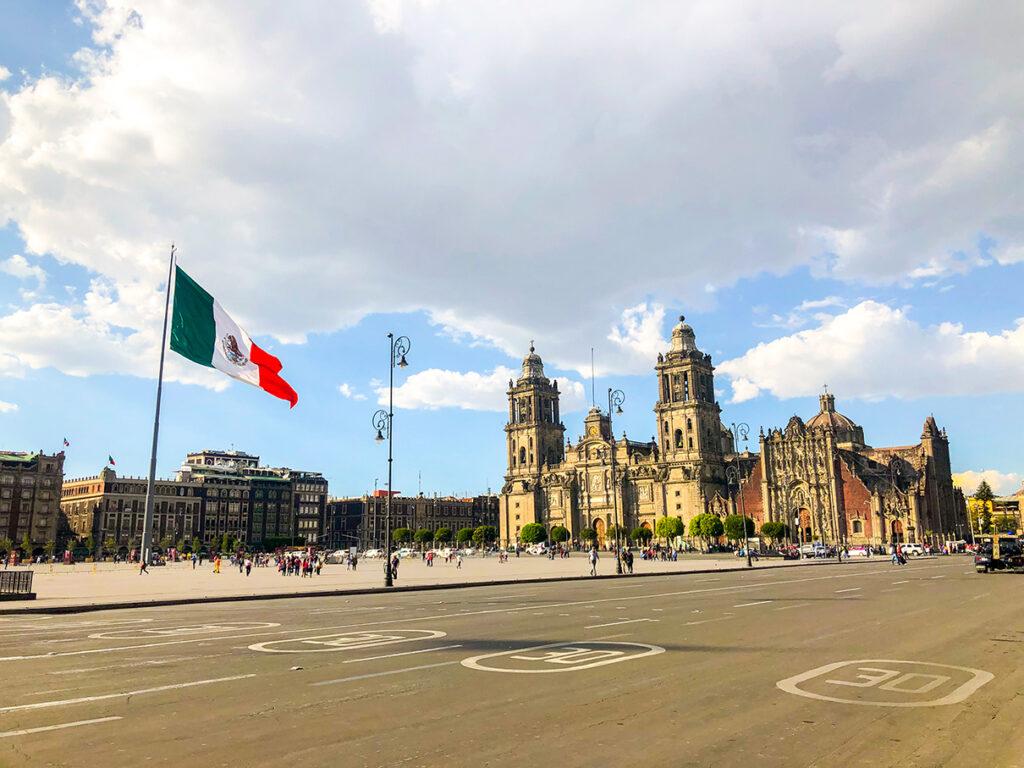
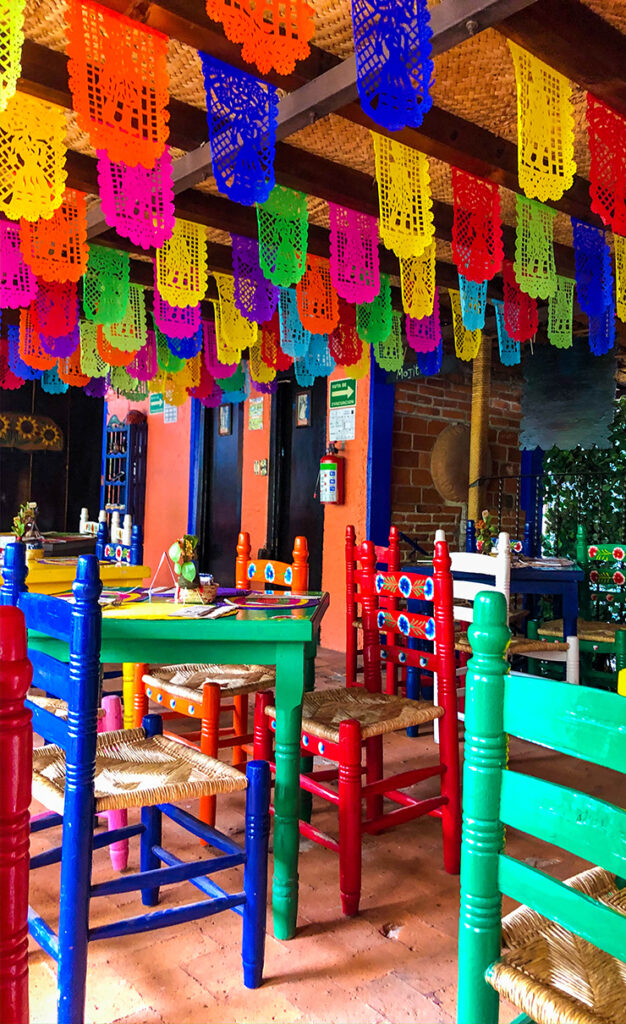
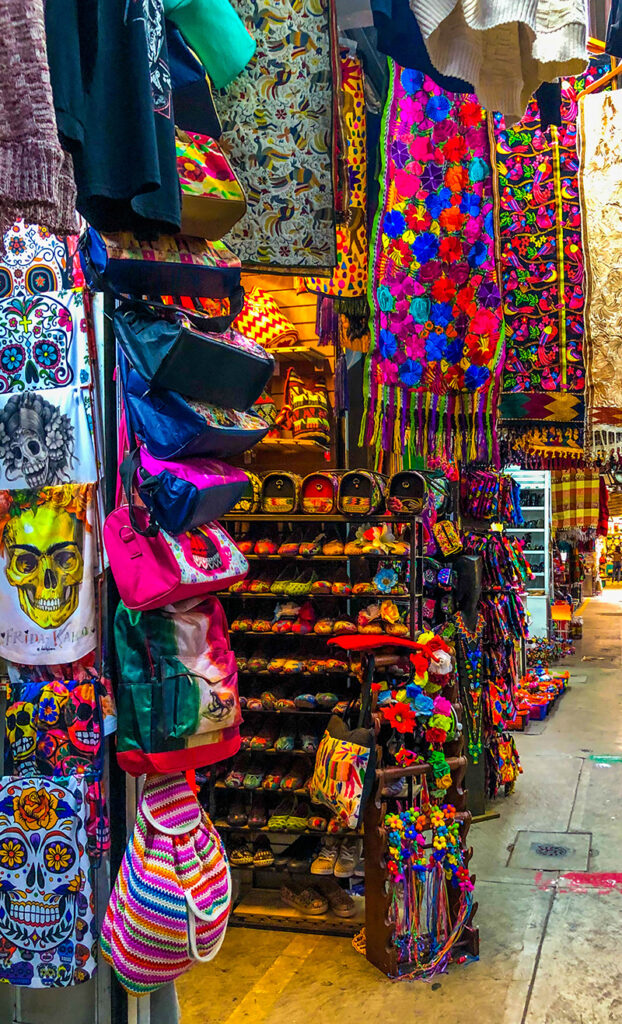
Where to Stay
Chaya B&B Boutique $
Located in the heart of Mexico City, facing the Alameda Park, Chaya Bed an Breakfast is tucked away inside a recently renovated building which provides travellers a budget-friendly hotel experience with public spaces throughout where you can meet other guests, enjoy the rooftop views across Mexico city or just relax on the hammocks after one of the many incredible meals you’ll have in this city. Prices are listed as $145 for the standard room, but I’ve found that on sites like booking.com or Expedia they are often on offer for as low as $91/night!
AR218 – $$
AR218 is located in my favourite neighbourhood, La Condesa, inside an old 1930’s bungalow which still is decorated with the original talavera floorings while the rest of the hotel has been given a modern update with sleek urban designs. Every room is spacious and contains luxurious amenities that include state-of-the-art technology, cosy and comfy living rooms which make relaxing back at the hotel a joy. If you like to cook some meals they even have fully equipped kitchenettes for your convenience. AR218 is a full-service hotel and offers free bike rentals as well as a slew of technological devices great for travellers like extra battery packs and charging cords. Prices online range but I’ve found rooms for as little as $150 a night.
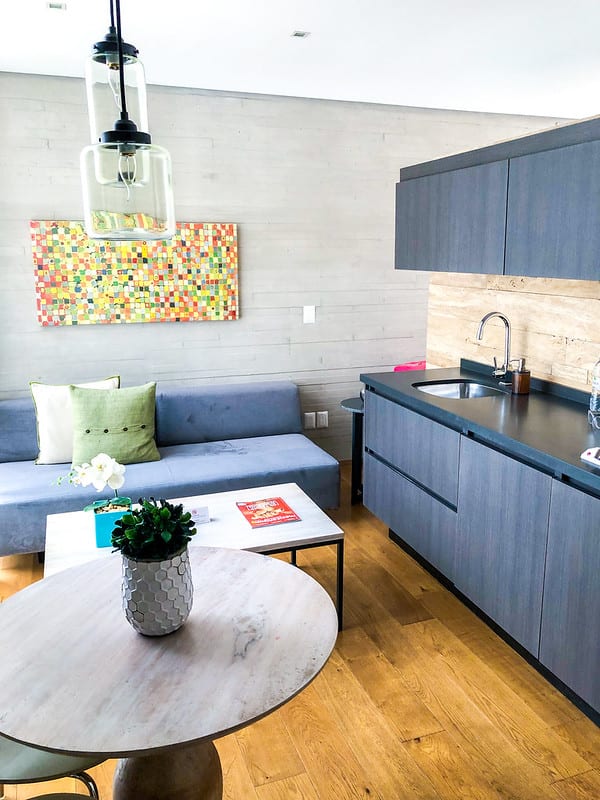
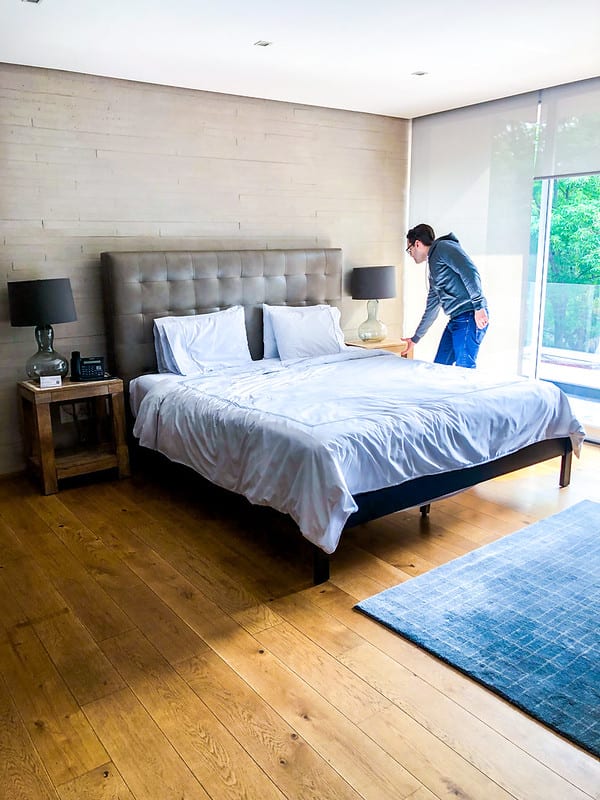
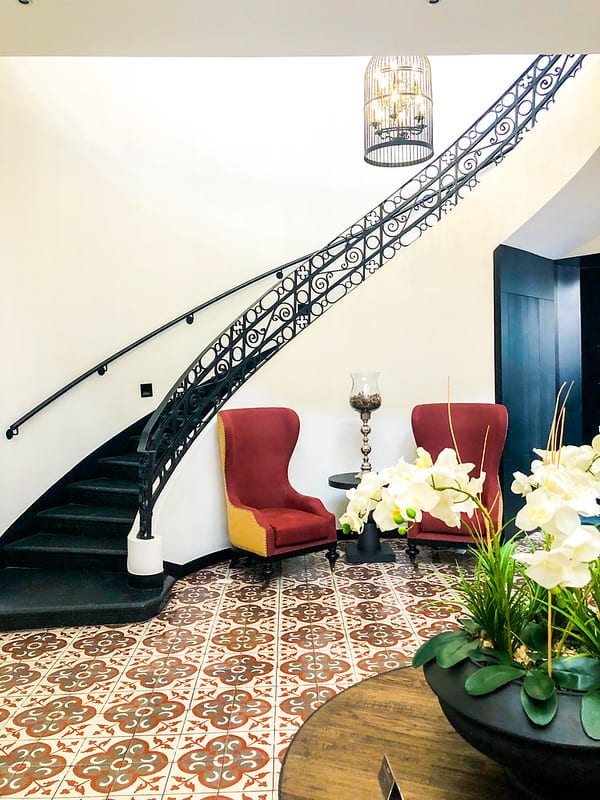
Ignacia $$$
Ignacia Guest House is technically located in Roma Norte but is just on the edge of the Southern borders. Under the purple blossoms of the Jacaranda tree lining the streets, you will be welcomed home. The house was originally an old 20th-century mansion that has been transformed into just six elegant suites. Since there are so few rooms, everyone who stays here feels like family.
Day One – Take it Easy
Adjust to the Altitude
Mexico City is located 7,200 feet (2,200 metres) above sea level! So you’ll find it’s worth giving yourself some time to adjust to the altitude when you arrive. Even if you are lucky enough not to experience any of the severe side effects, most travellers will feel a little more tired than usual. Or you might have to exert more effort than you might be used to when walking. The best way to fight the altitude is to drink lots and lots of water. And maybe avoid those cocktails for the first night.
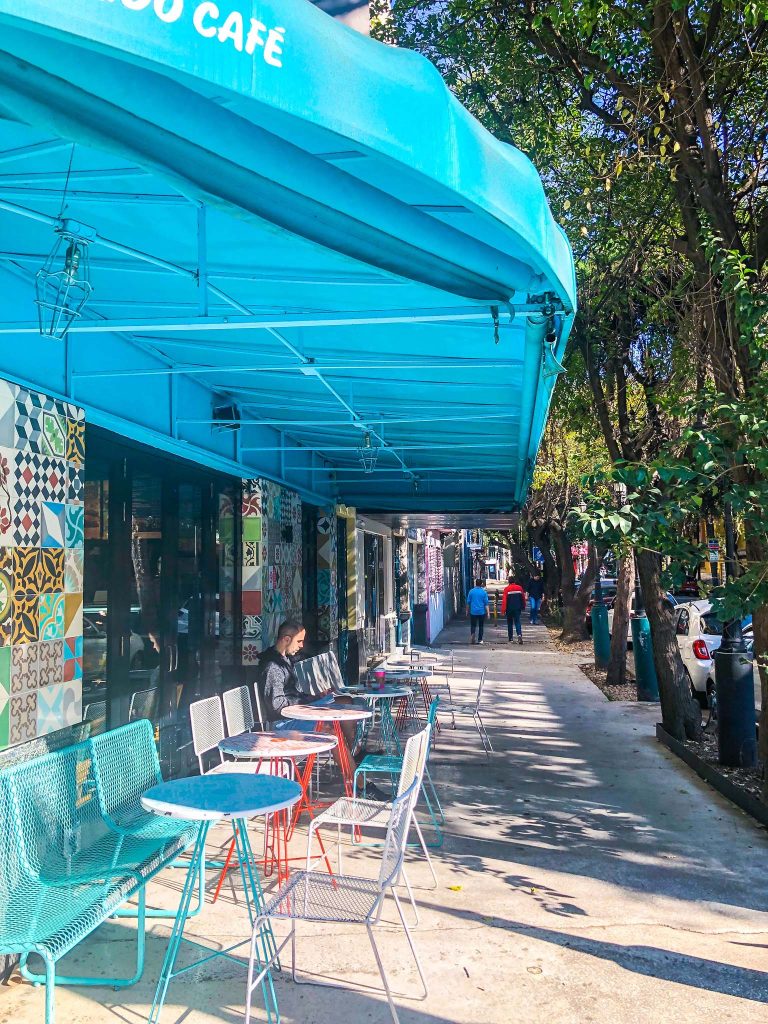
La Condesa
After dropping your bags off at your hotels, I would recommend a leisurely walk around La Condesa. La Condesa is a very tourist-friendly neighbourhood which makes it a relaxing place to explore just when you arrive.
La Condesa is famous for its tree-lined avenues with wide pedestrian sideways located in the centre of the road. Along the streets, you’ll see art nouveau mansions and art deco-inspired apartment buildings. “Condesa” means “countess” as it was named for the Countess of Miravalle. The Countess once owned all the land in this area. Wander along Amsterdam Avenue, which is a circular loop that wraps around one of the city’s best parks. On either side of the street, you’ll find incredible coffee shops and fantastic eateries. Stop into any that catches your eye to fuel up! In this area the food and drinks are so good you really can’t go wrong.
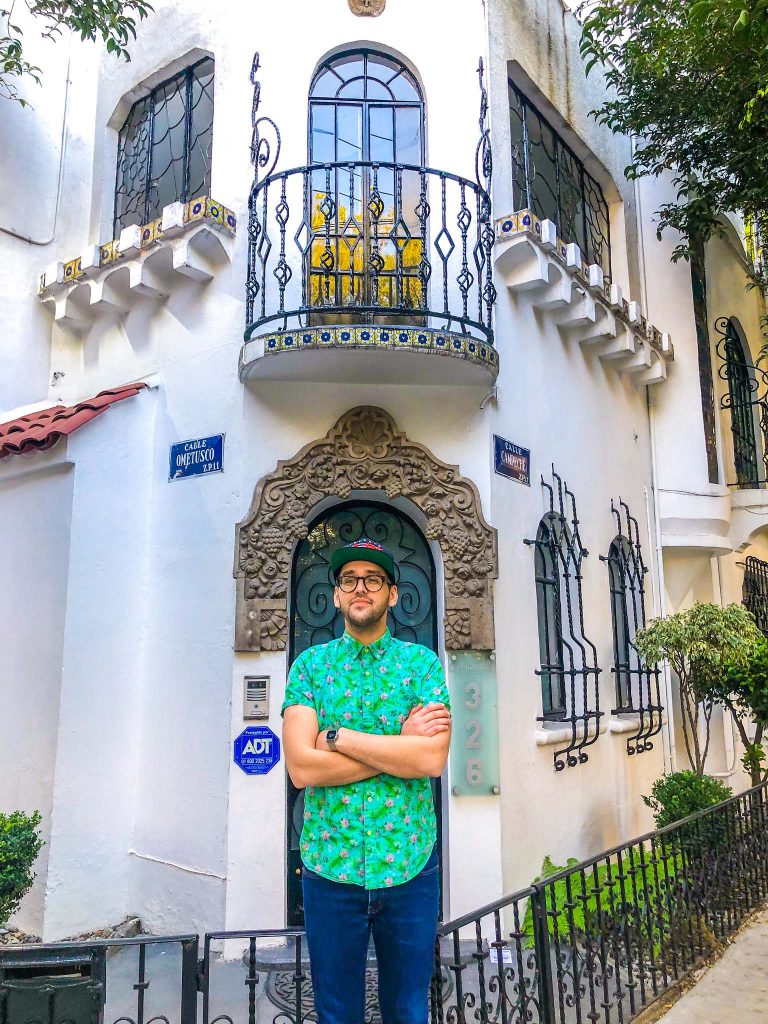
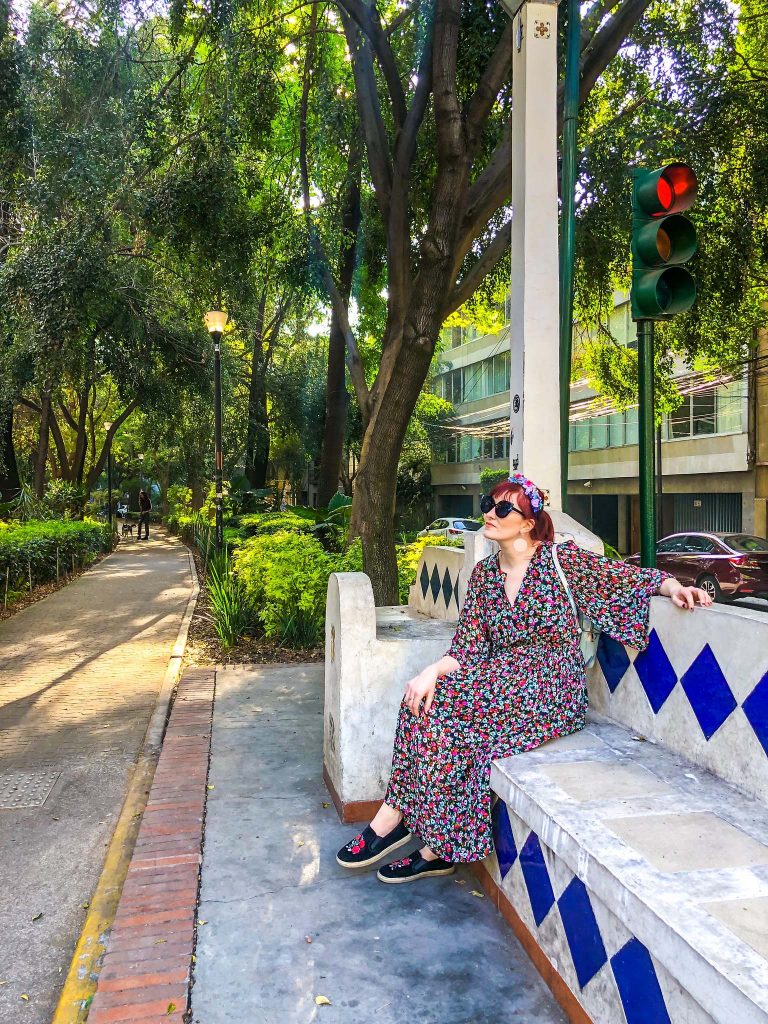
Parque México
Make your way to Parque México. If you arrived on the weekend, you’ll find that this park is filled to the brim with families and their dogs. Parque México has one of the largest dog parks and public spaces in the city. And it is absolutely vibrating with energy on the weekend. Dozens of street vendors line the outskirts of the parks where you’ll be able to try a myriad of different local street food. My personal favourite are the fresh slices of mango, topped with lime and chilli! Spicy and sweet, the perfect combination.
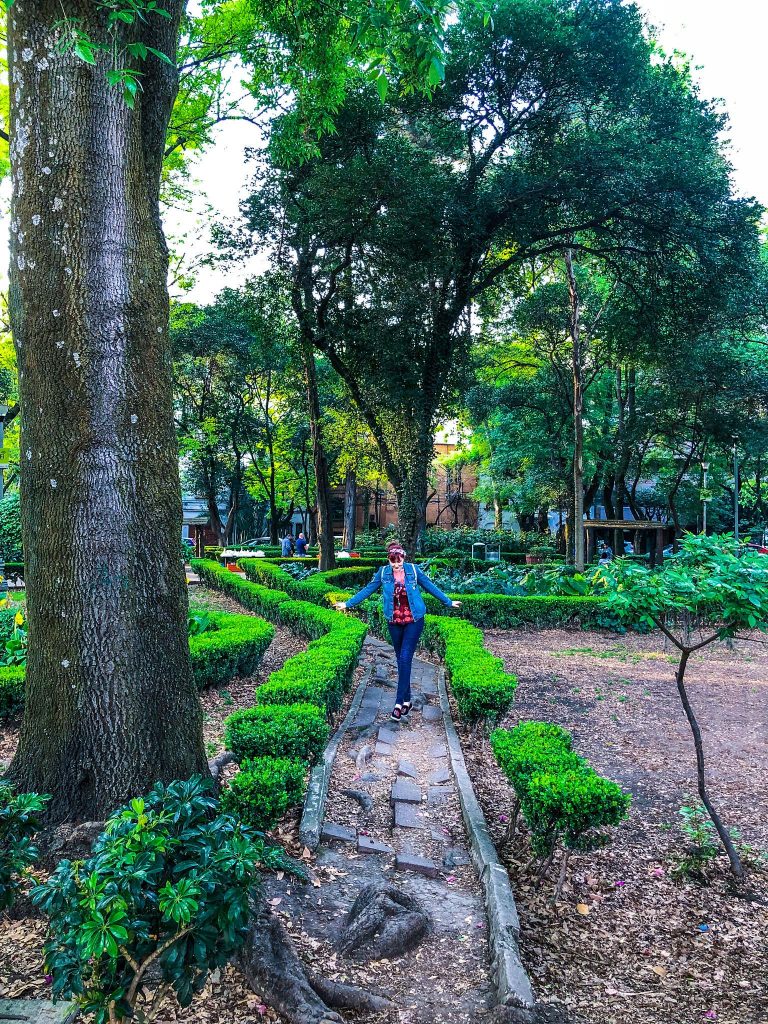
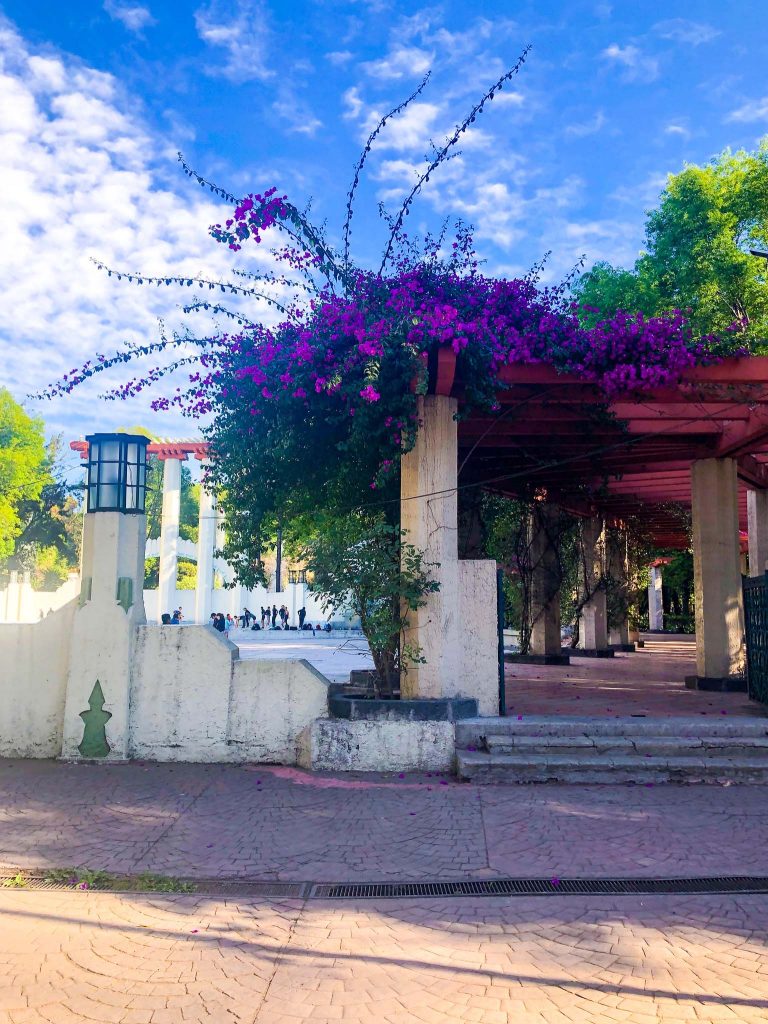
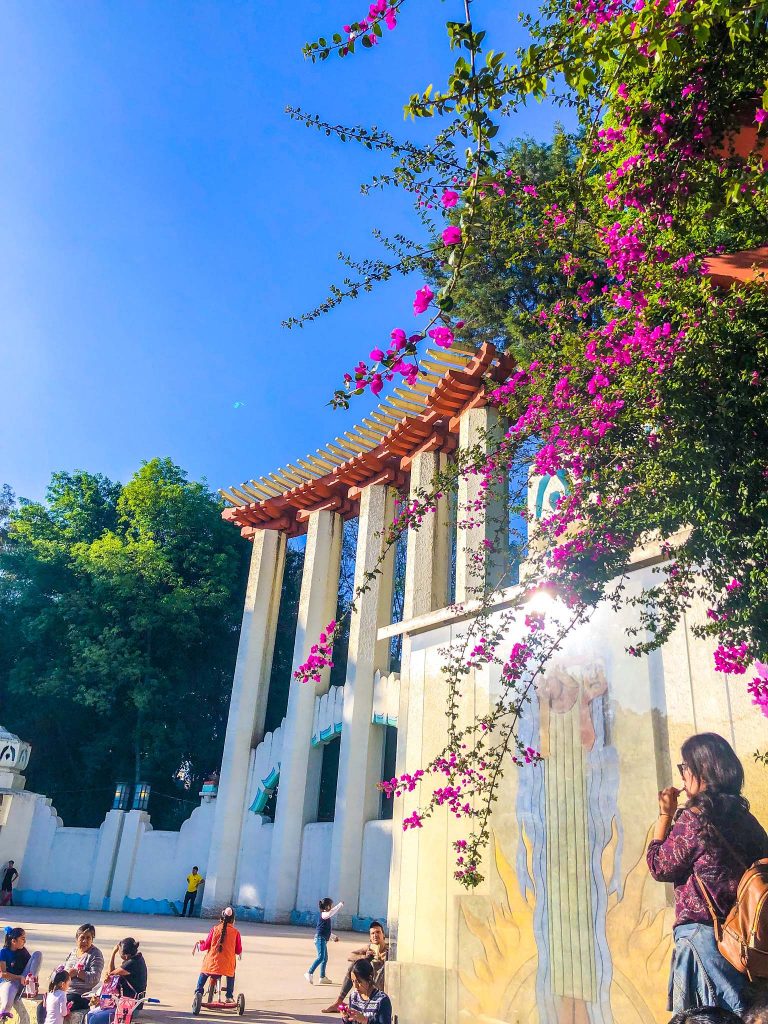
Stop for a Churro
Stop off for a churro and hot chocolate at Churrería El Moro on the corner of the park. This churro cafe has a few locations around Mexico City and is a reliable place for fresh, delicious churros. Be sure to get the Mexican hot chocolate to dip your churros into as you eat as is the custom.
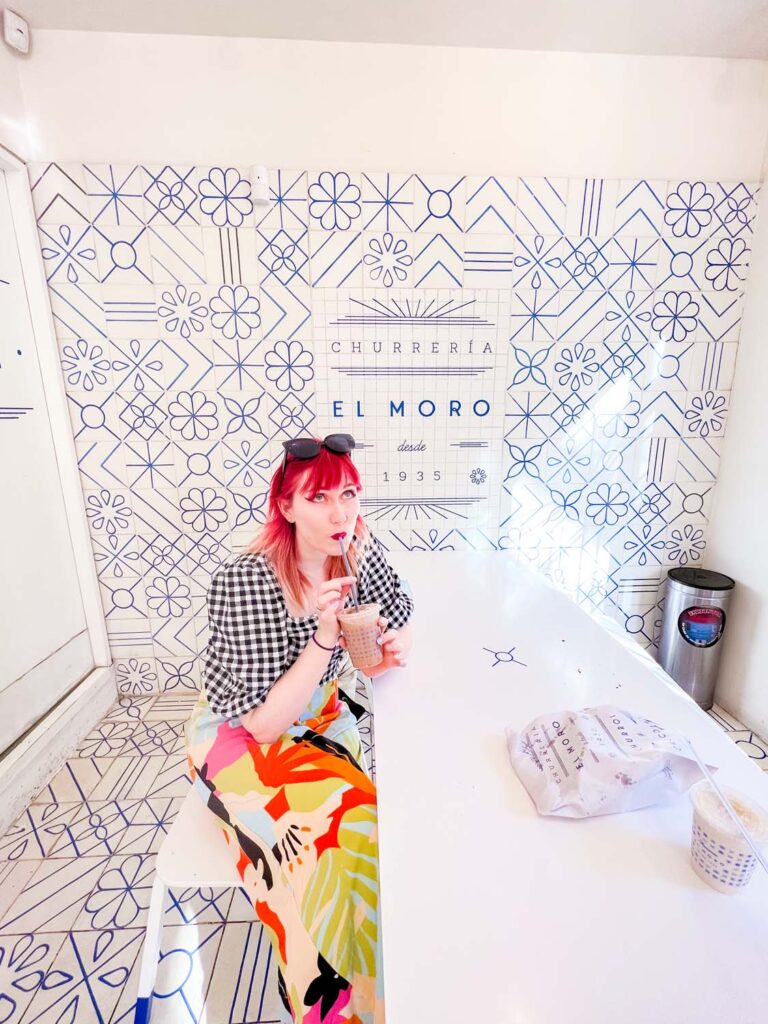
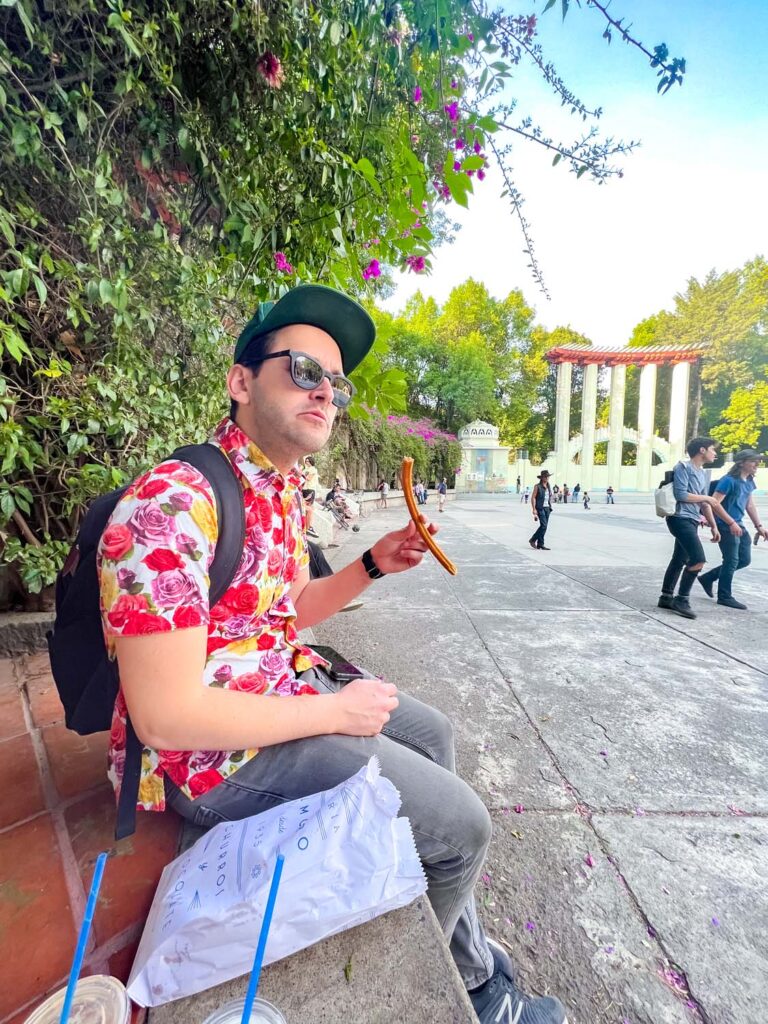
Dinner in La Condesa
To end your night in La Condesa, grab a bite to eat. As it’s our first day in town, let’s just do something quick and easy and save those luxurious dinners for later in the week. And honestly, I’m sure everyone is dying to eat what they really came to Mexico City for; TACOS! El Tizoncito is known for its incredible tacos, Al Pastor. Despite being a chain, it is my favourite place to eat tacos in Condesa. Fast, cheap and friendly! Plus, their salsas are an excellent way to enhance the flavour!
If you want to try a bunch of different types of tacos in a very unintimidating place, head over to El Farolito Altata or Taquería El Califa. These are both fast-food-like restaurants with great menus with almost every kind of taco you can think of. While there might be better versions of these tacos in street stands all over the city, this is a great place to try them and see what you like. Then, once you’re a little more settled, you can try the street food tacos!

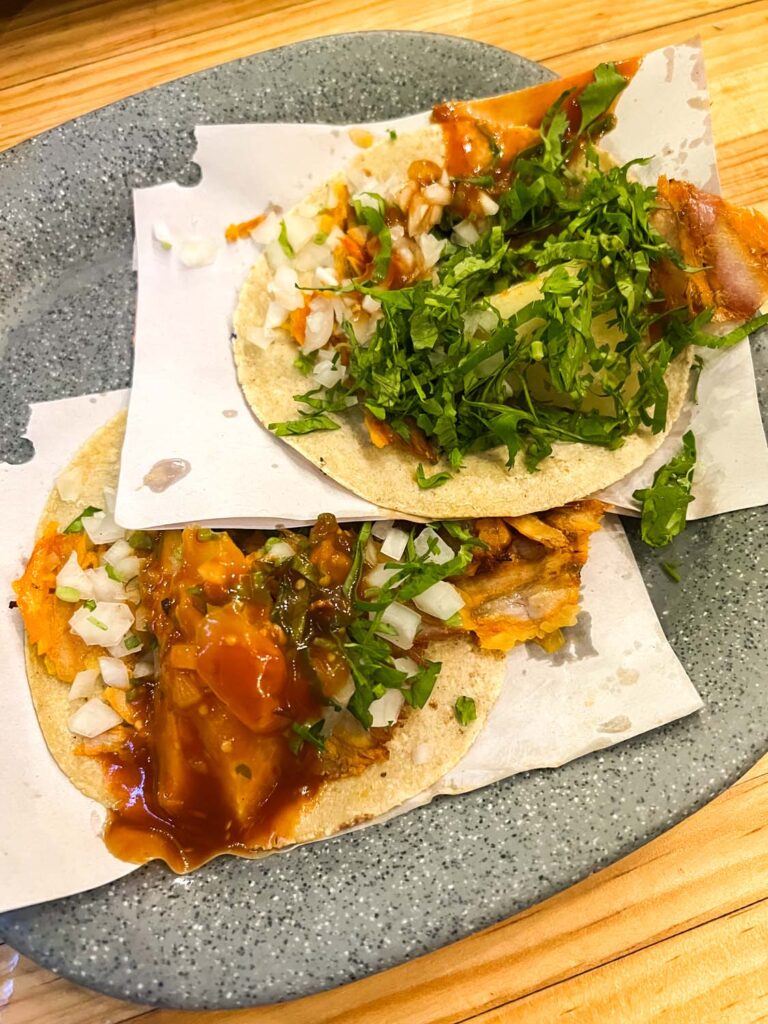
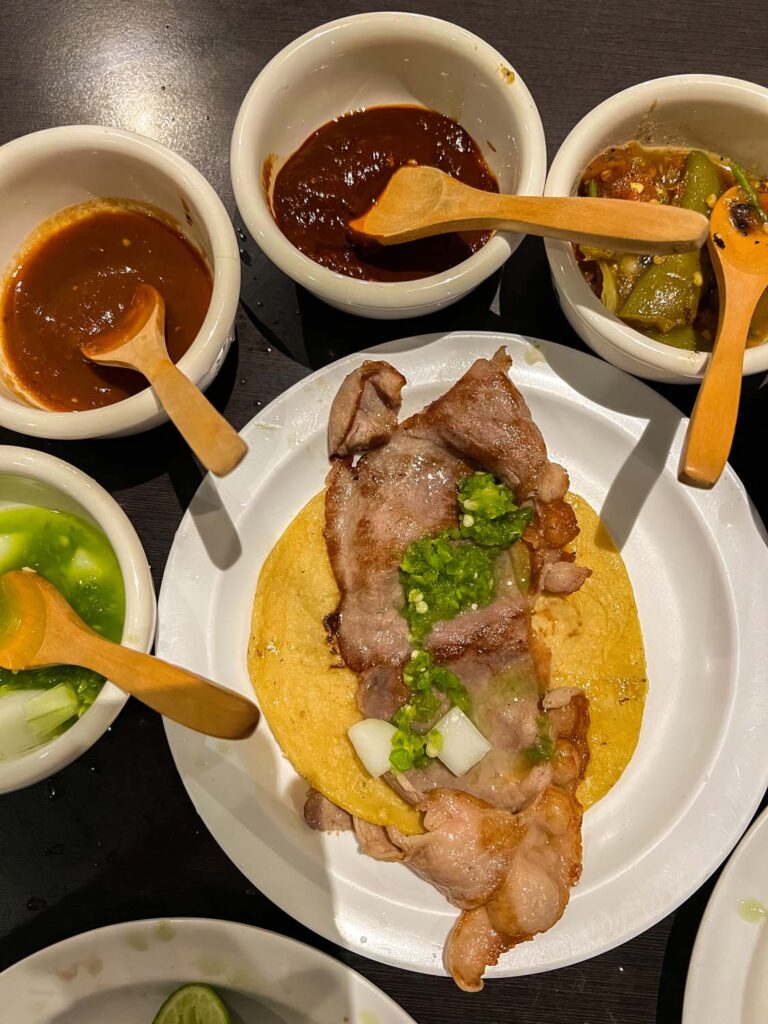
Day Two – Explore the Historic City Centre
After a leisurely first day, it’s time to hit the streets. The Historic Centre of Mexico City is one of the busiest areas of the city. I’d recommend heading to the centre early in the morning. This will result in seeing fewer tourists out and about when you first arrive to get your bearings. By the afternoon you’ll see how much more crowded it gets!
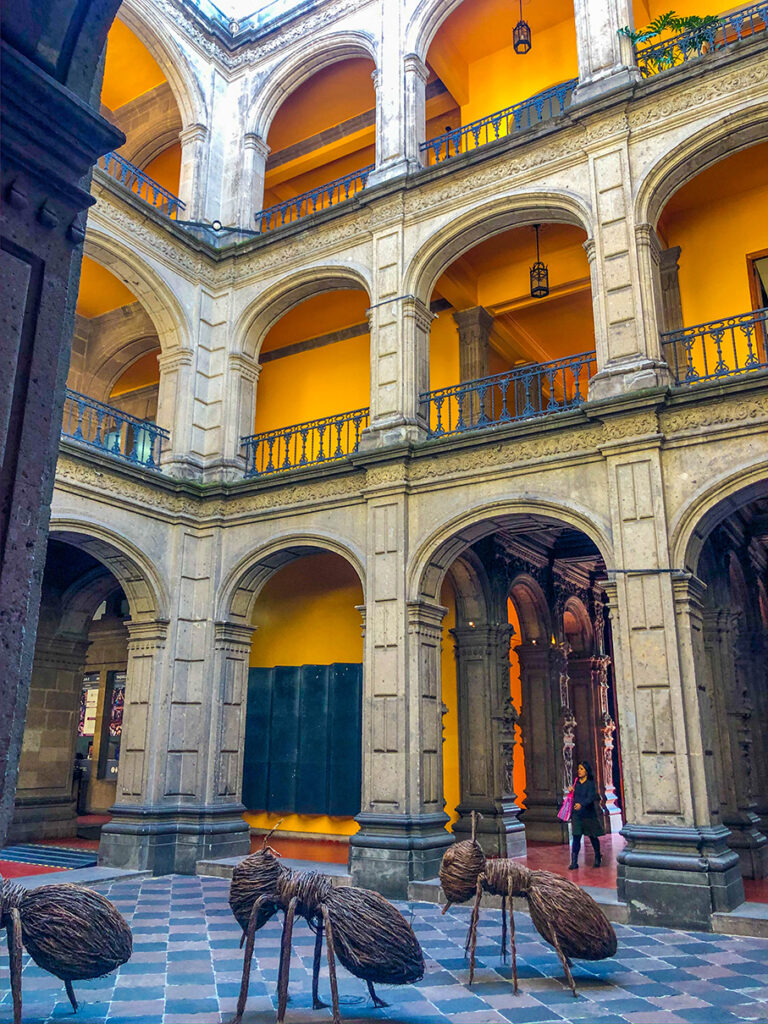
Pastelería Ideal
Start your morning at Pastelería Ideal. This bakery has been serving flaky pastries and sweet cakes for over 100 years! The morning rush in here is hectic but the bustling atmosphere is absolutely infectious! Huge carts and trays full of sugared treats rush up and down the aisles. The smell of sugar and bread fills the air as soon as you walk in the door.

Take a tray and pick a few of the best-looking sweets. Then head over to one of the counters. While they pack up your treats, they’ll pass you your receipt. You have to pay at another counter. Once you’ve paid you can show your paid stamp to the same people who packed your order and you’ll be ready to go. Seems complicated but honestly I kinda love the process as it feels so retro. Take your sweets with you and head to the Zócalo to enjoy breakfast with a view!

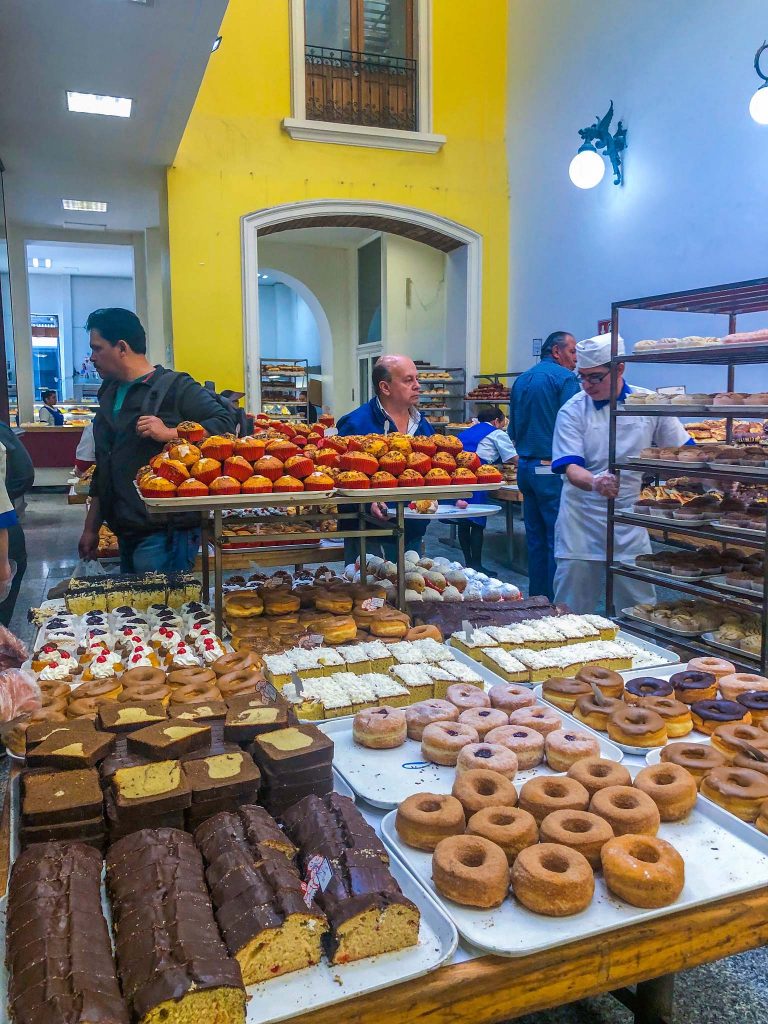
Zócalo
The Zócalo is the main square in Mexico City. Before the Spanish invasion, this was the site of important ceremonies for the Aztec people of Tenochtitlan. Still today you’ll find lots of ceremonies happening in the square. Everything from wearing in of viceroys, royal proclamations, military parades, Independence services and festivals like Day of the Dead can be found here in the square.
The Zocalo is dominated by the enormous flag of Mexico City. The Mexican flag is full of national symbolism. The green stripe represents the Independence Movement. The white stripe represents the purity of the Catholic faith. The red stripe represents the Spaniards that joined in the quest for Independence and the blood of the national heroes. The emblem-shield symbolizes the Aztec heritage. According to legend, the gods had advised the Aztecs that the place where they should establish their city was to be identified when they saw an eagle, perched on a prickly pear tree, devouring a serpent. They saw this mythical eagle on a marshy lake that is now the main plaza in Mexico City.

Cathedral of the Assumption
Across from the Zócalo is the Cathedral of the Assumption of the Most Blessed Virgin Mary into Heavens. After the Spanish conquest of the Aztec Empire, the Spaniards build their church on the site of the Templo Mayor. The Templo Mayor was the gem of the Aztec city of Tenochtitlan. Stones from the destroyed temple of the Aztec were used to build the church. And while we mourn the destruction of the old temple, it is amazing to stare up at the church and see stones from over 1000 years ago.
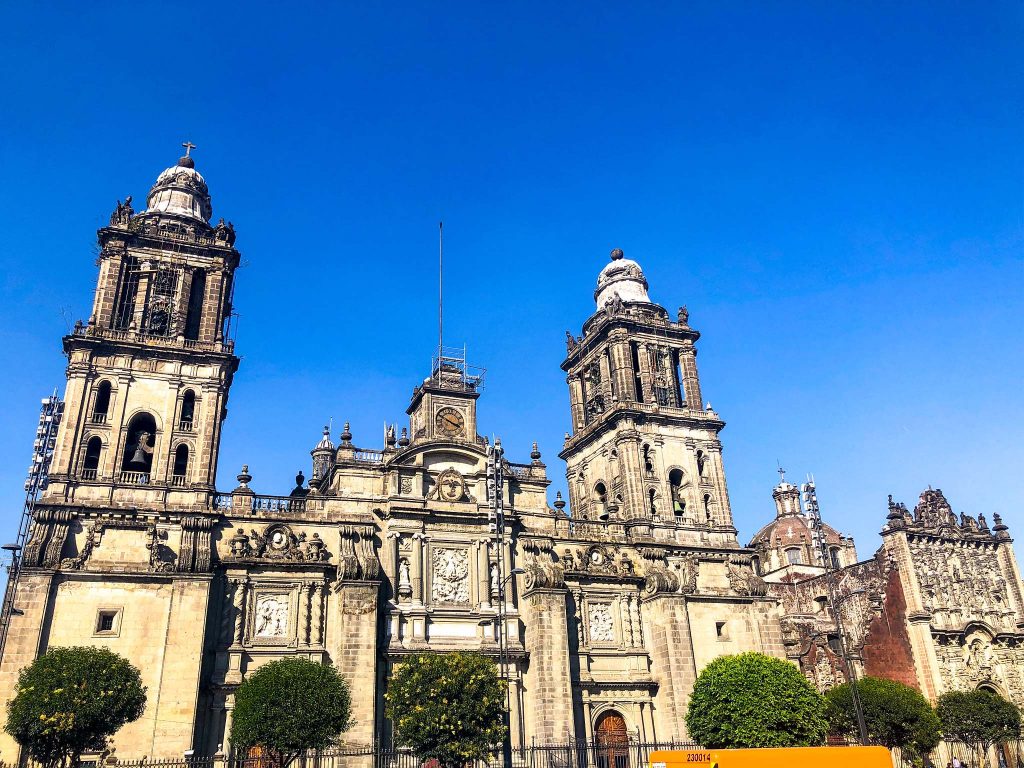
The construction of the Cathedral began in 1573 and took until 1813 to complete! The enormous cathedral is over 350 feet long and 200 feet wide. This makes it Latin America’s largest and oldest cathedral.
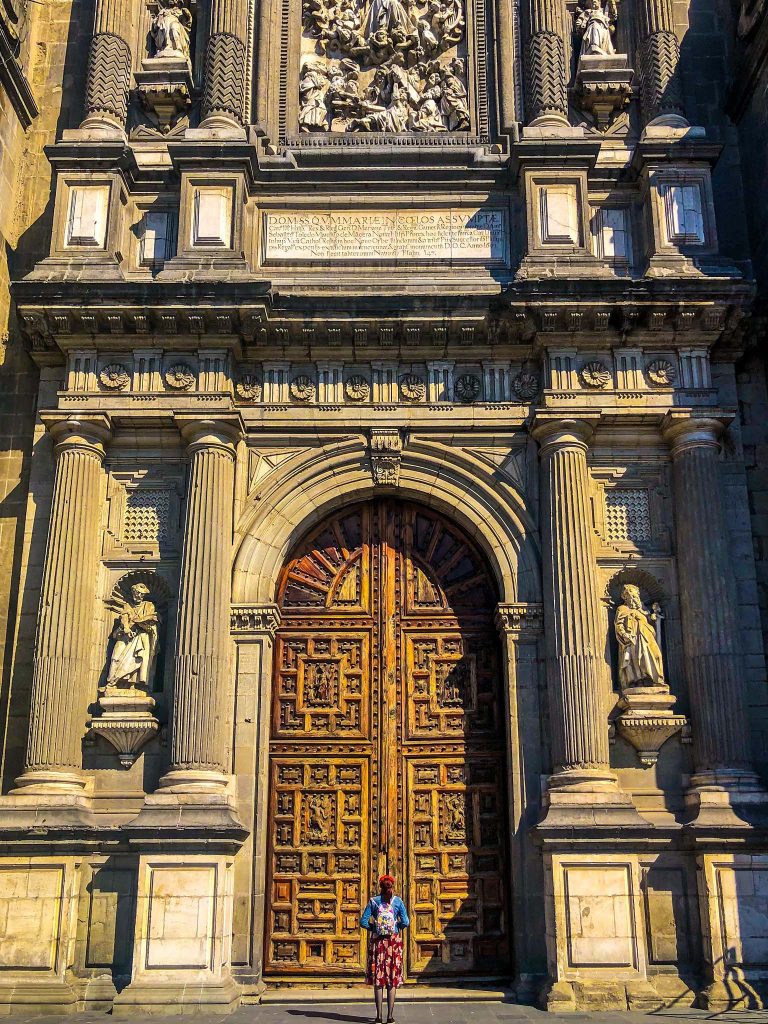
Its enormous size means the Cathedral has four distinct facades. Each facade more elaborately embellished than the next. The church is a patchwork quilt of different styles of architecture and decorations, including Renaissance, Baroque, and Neoclassic. Although the 215-foot bell tower, containing 25 bells, is proudly done up in a Mexican style of architecture.
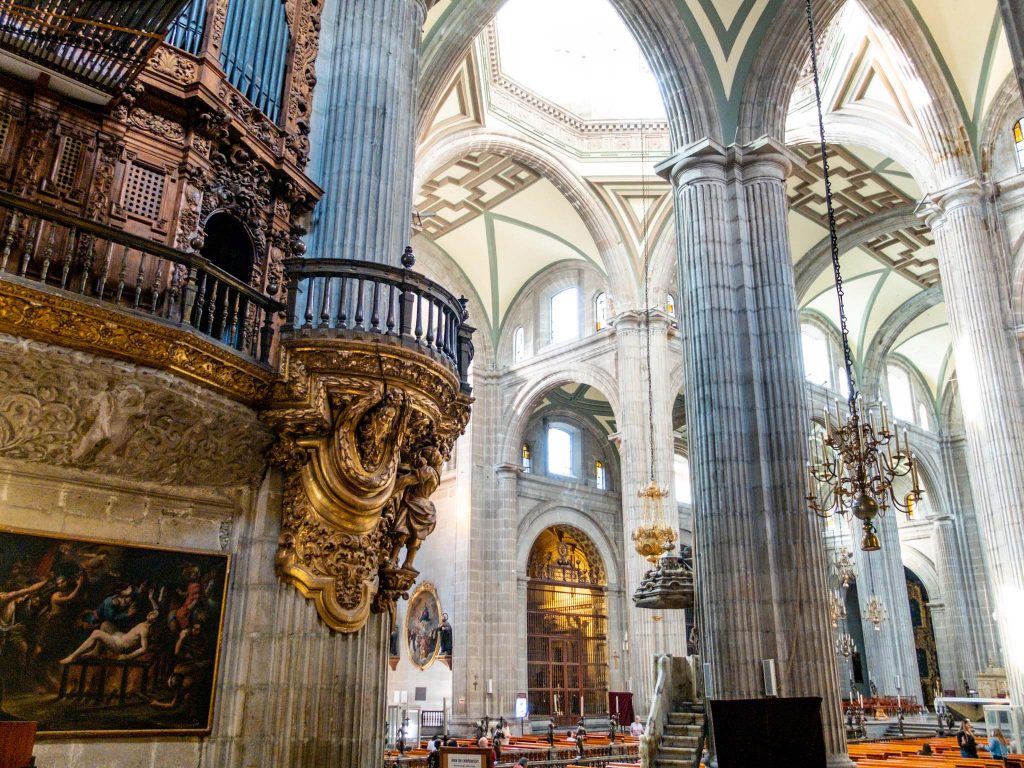
National Palace
Head down the street towards the entrance to the National Palace. This place is an enormous museum and art gallery featuring many famous works of art. It’s free to enter, you just need to leave a piece of ID at the gate. And don’t worry, they keep it safe and you’ll get this back when you leave. Because it is free to entre, I would recommend keeping things short, and picking one part of the museum to explore. My recommendation would be the series of murals by Diego Rivera inside the main courtyard. Seeing everything can be pretty overwhelming and I always feel like a shorter visit makes the information more digestable.
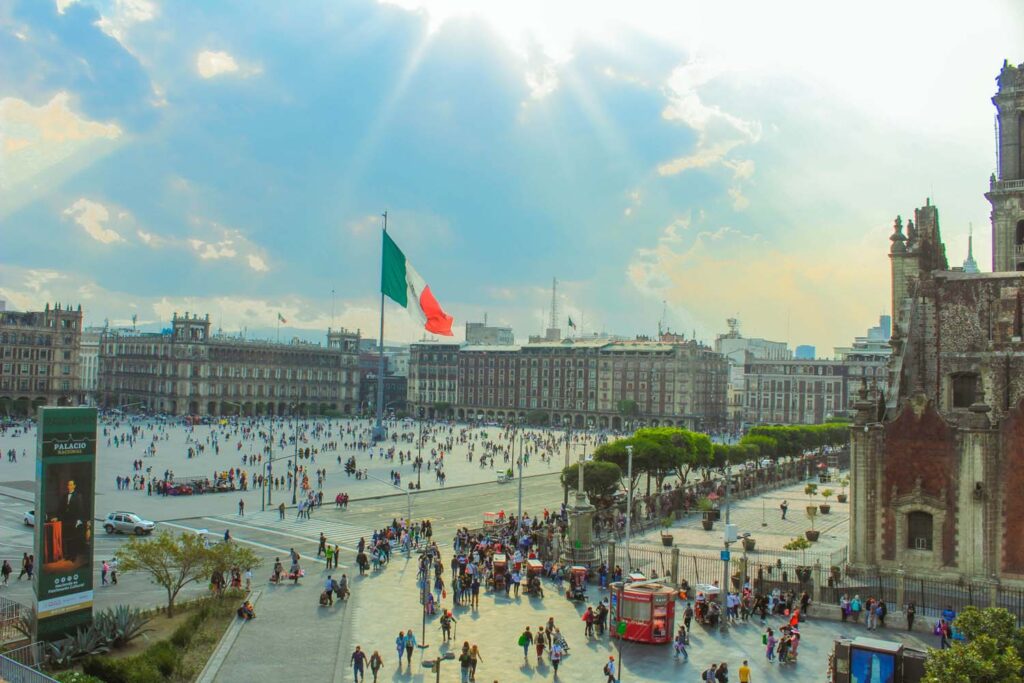
The History of Mexico
The murals which encompass the courtyard are called ‘The History of Mexico‘ painted on the main stairwell. Diego Rivera began painting it in 1929 and took over six years to complete. The subject of the mural is Mexico’s history from ancient times to the present day. From north to south the mural depicts the struggles of the indigenous Mexican people against foreign invaders and local dictators.
My favourite aspect of the mural are the depictions of the Aztec people and their rich culture. You can see every day Aztecs at work and play. See images of their icons of worship as well as images of their traditional dress. On the south wall, you’ll see an image of a woman holding the communist manifesto. This is Frida Kahlo, Diego Rivera’s wife. Although at the time Frida was only the woman behind Rivera, she would go on to be even more famous than Diego himself. More on her later!
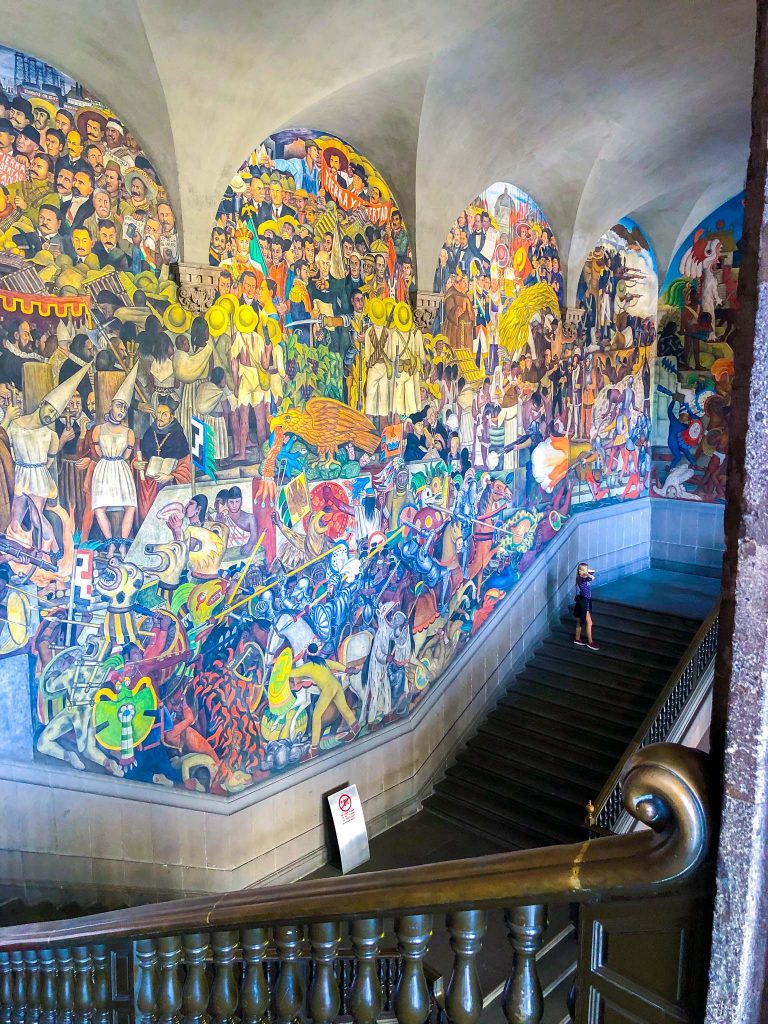
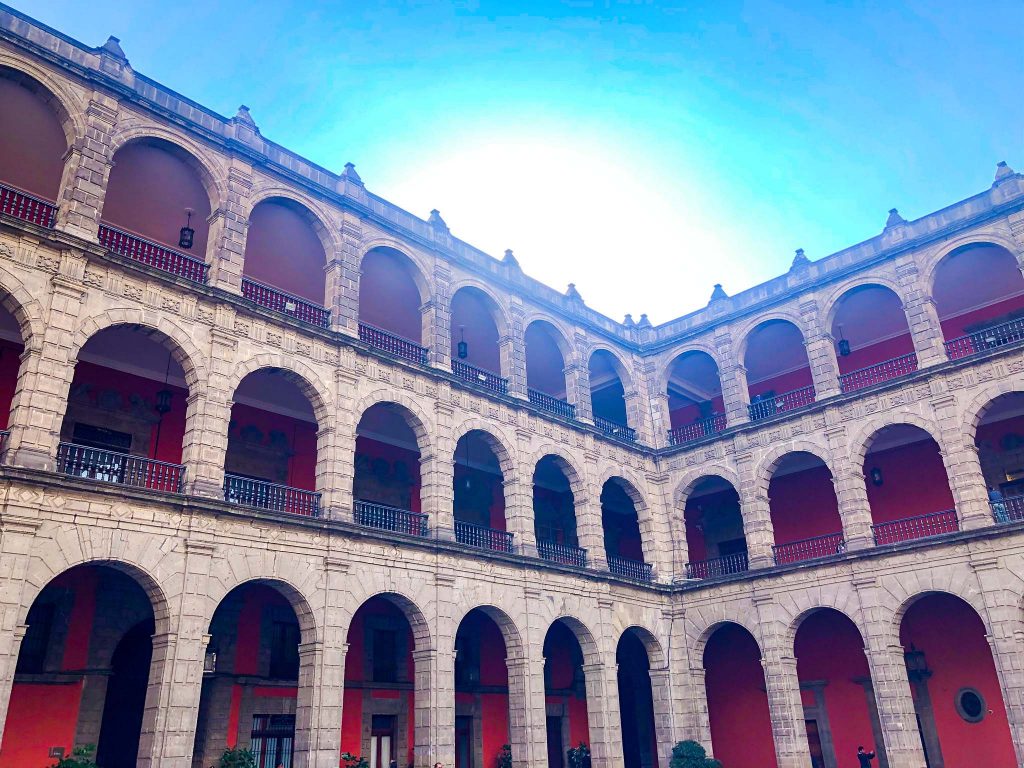
Azul Historico
After finishing at the museum, wander down the long pedestrian avenue Francisco I. Madero. This street is filled with incredible old historical buildings. If you’re looking for something to eat head to one of the city’s most sought-after restaurants, Azul Historico. This restaurant features an indoor-outdoor courtyard where you’ll eat under a tree canopy. The restaurant serves up traditional Mexican cuisine with its own unique flair. One of the most popular dishes is the guacamole with fried crickets, absolutely delicious and a must-try!
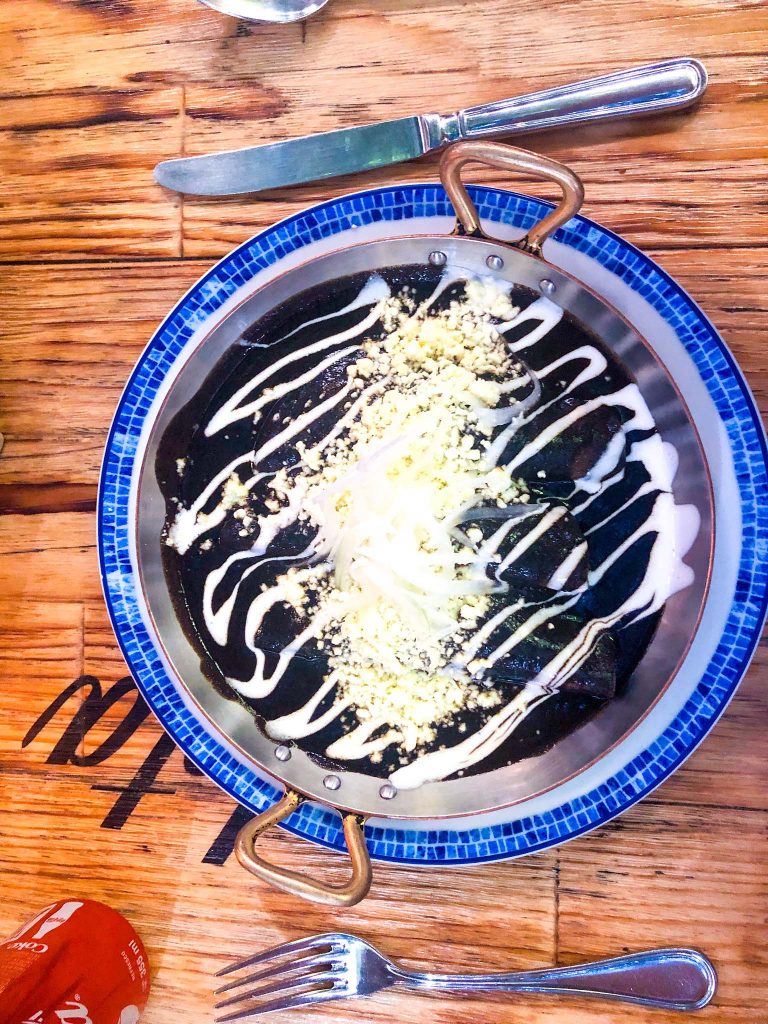
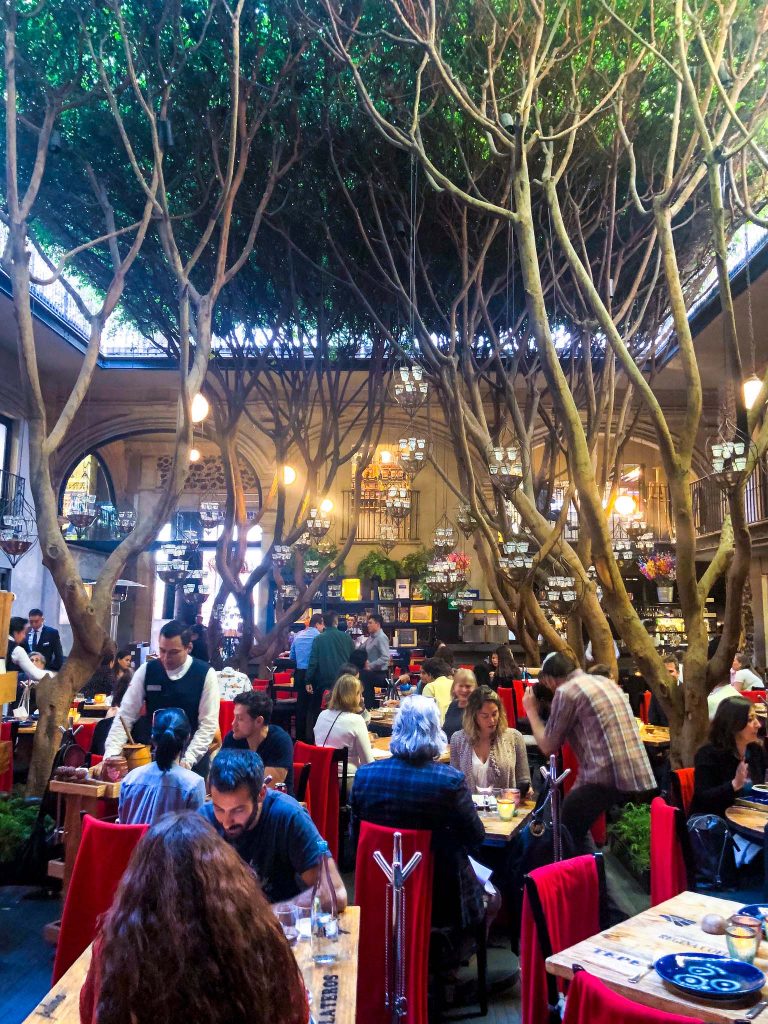
Torre Tower
To cap off your lunch, head to the Torre Tower for a view over Mexico City. The tower requires admission for the viewing deck but it’s free to access if head up to the restaurant or bar. If you get a drink at the bar or snack at the restaurant you’ll be able one of the best views in the city! It might be a little pricier than other places in Mexico City, but think of it as a viewing tax.
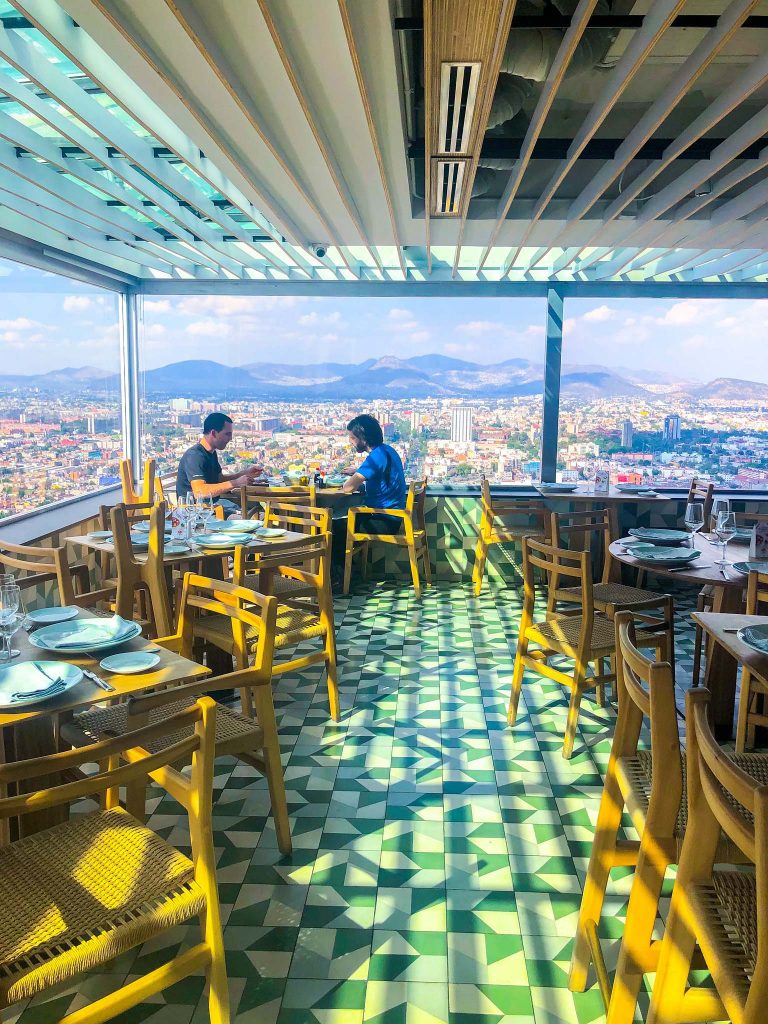
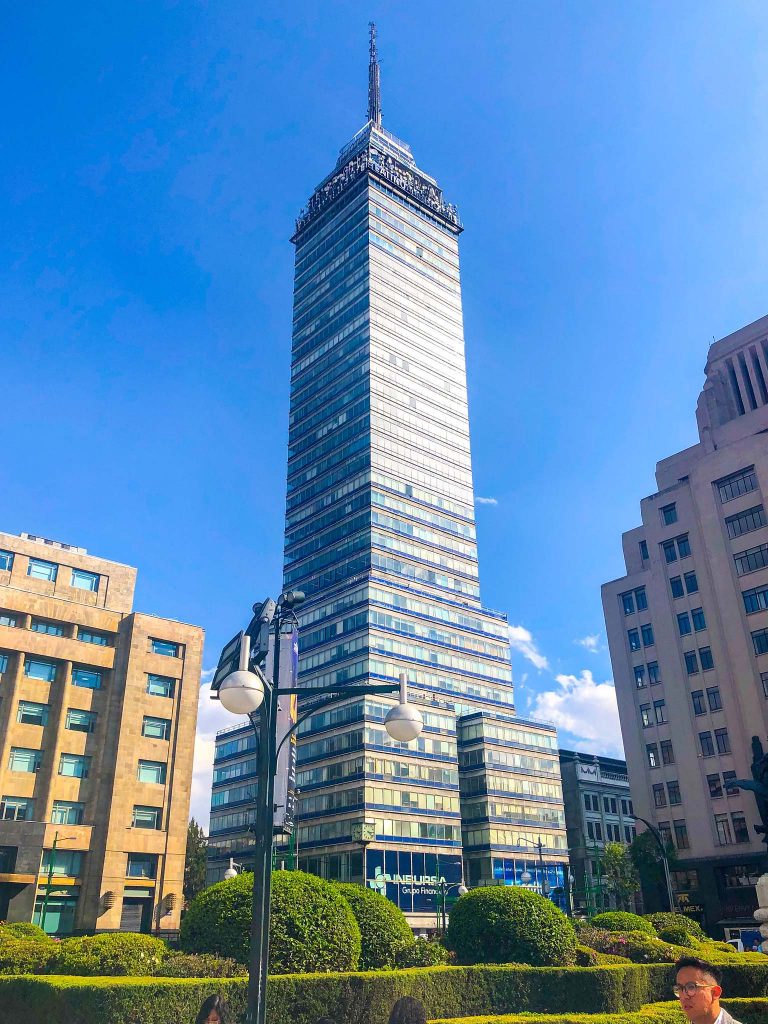
Palacio de Bellas Artes
After looking at it from above, head down to see the Palacio de Bellas Artes. The Palacio de Bellas Artes hosts events in music, dance, theatre, opera and literature. Therefore it was aptly nick-named the “Cathedral of Art in Mexico“. The exterior of the building is primarily Neoclassical and Art Nouveau and the interior is primarily Art Deco. If the line up isn’t too long, head inside to see the iconic murals by Diego Rivera as well as other famous Mexican artists.
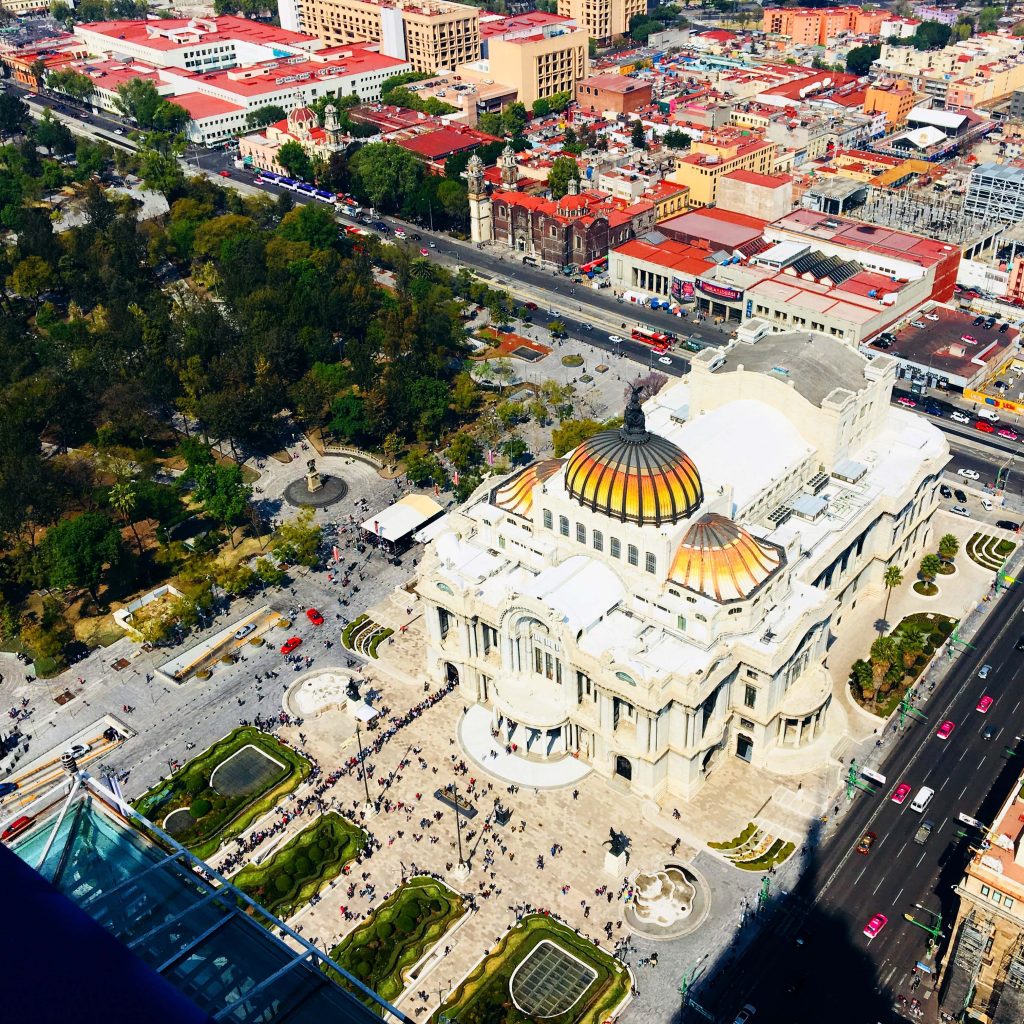
Diego Rivera Mural Museum
If the line up is really long you can always opt to go the Diego Rivera Mural Museum down the road instead. This museum houses one of Diego Rivera’s most famous painting, Dream of a Sunday afternoon in the Alameda.

National Post Office
Across from the Belle Arts building is the National Post Office. While it might seem strange to visit a post office, this one is truly spectacular. The Postal Palace of Mexico City was designed at a time when the post office became a separate government entity. They wanted to show off their power and designed a building with a very eclectic style for the time.
It blends Art Nouveau, Spanish Renaissance Revival, Plateresque, Spanish Rococo style, Elizabethan Gothic, Elizabethan Plateresque and Venetian Gothic Revival all together. And while trying to blend that all together would result in a mess, it is anything but. This building is so iconic to Mexico’s architectural style that it inspired the design for the Department of Family Reunions in the Pixar film, Coco.
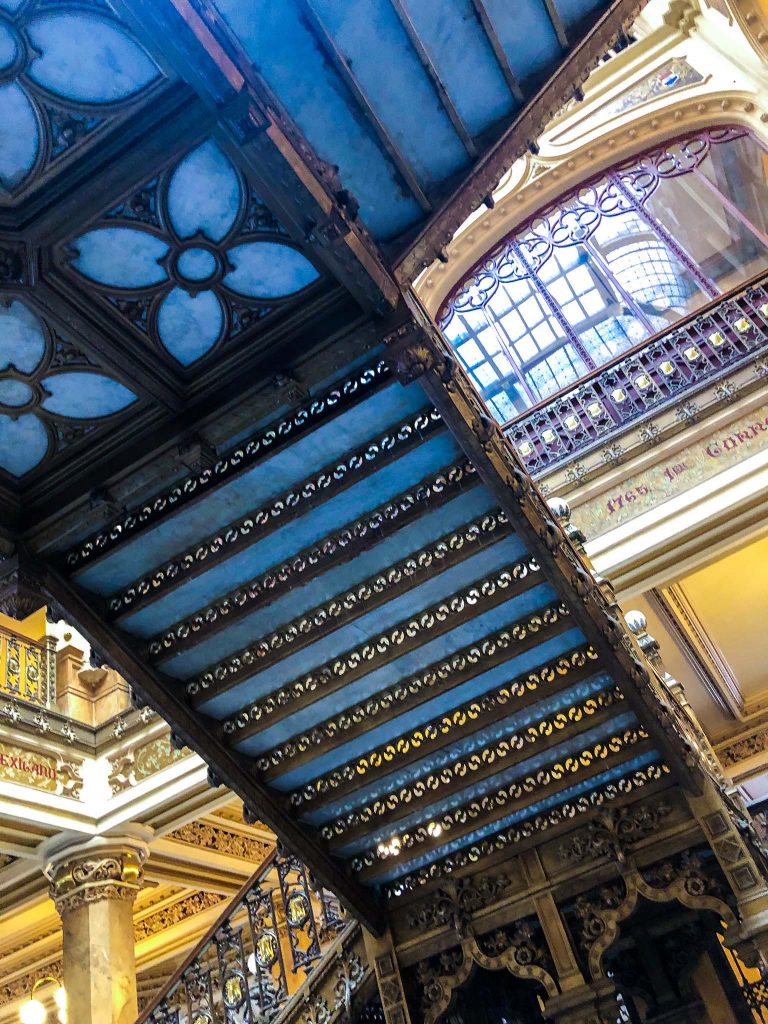
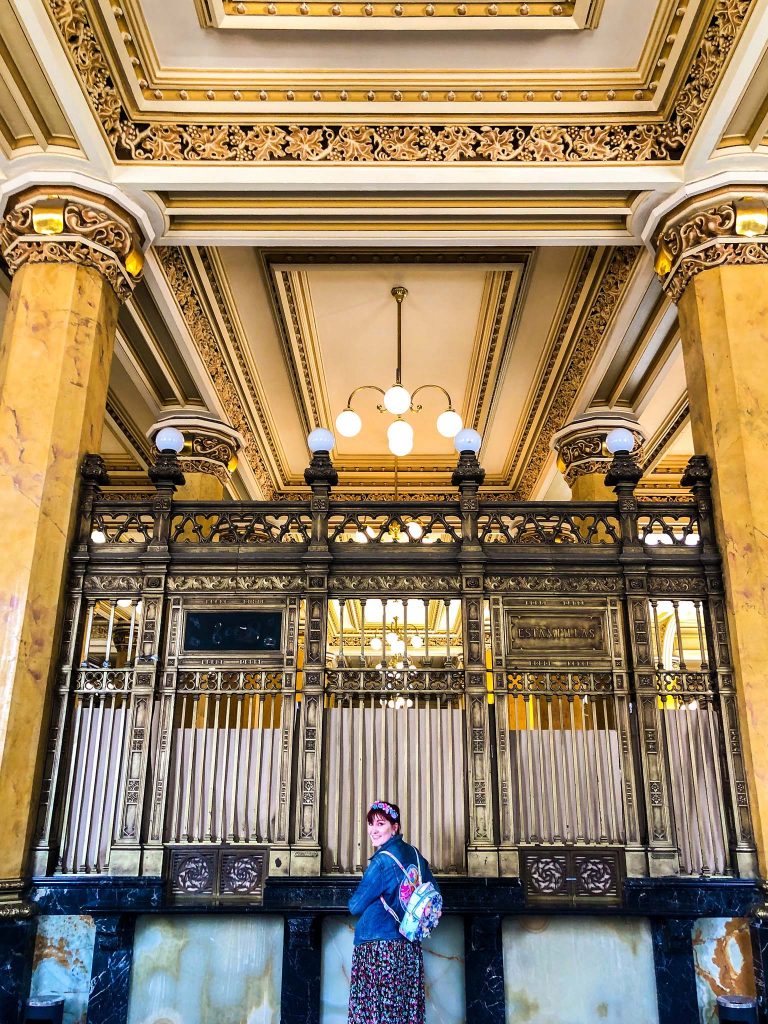
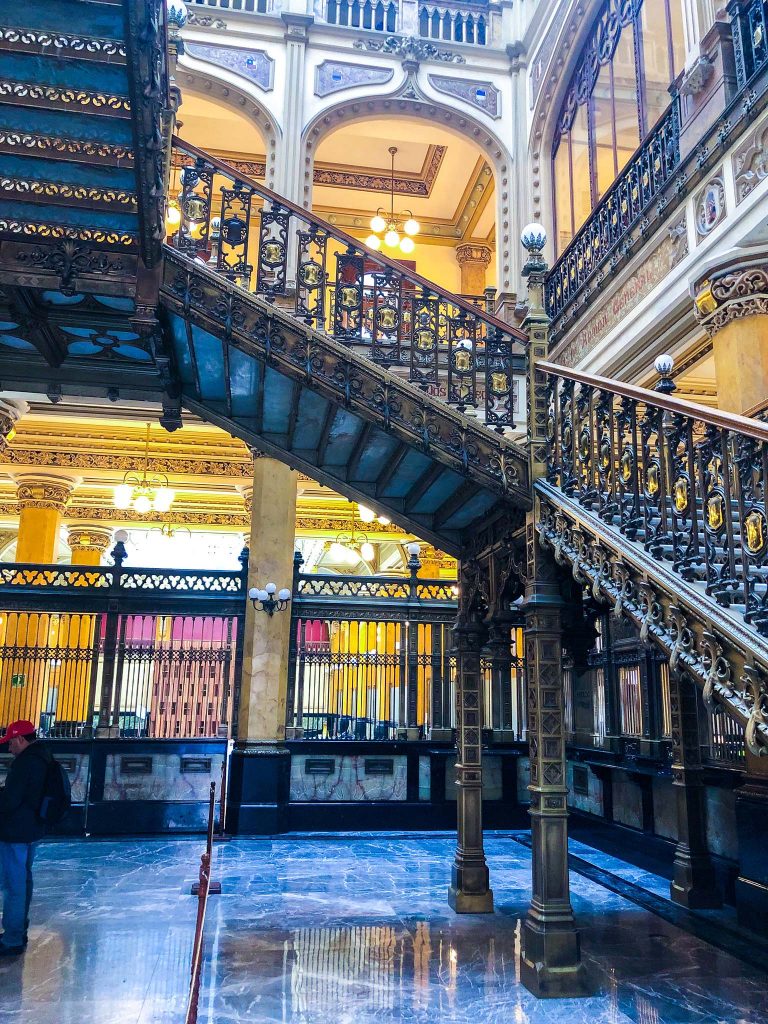
Mercado de Artesanías La Ciudadela
Spend the rest of the afternoon shopping at the nearby Mercado de Artesanías La Ciudadela. This is the best market to shop for handicrafts and souvenirs. The market looks like a veritable rainbow and even if you walk away with nothing (which I doubt you will) it’s still an incredible place to explore and enjoy. I have an entire post of the best items to buy when you’re visiting if you want to make a checklist! Trust me, this is super handy since it’s so easy to get lost or carried away in this place.
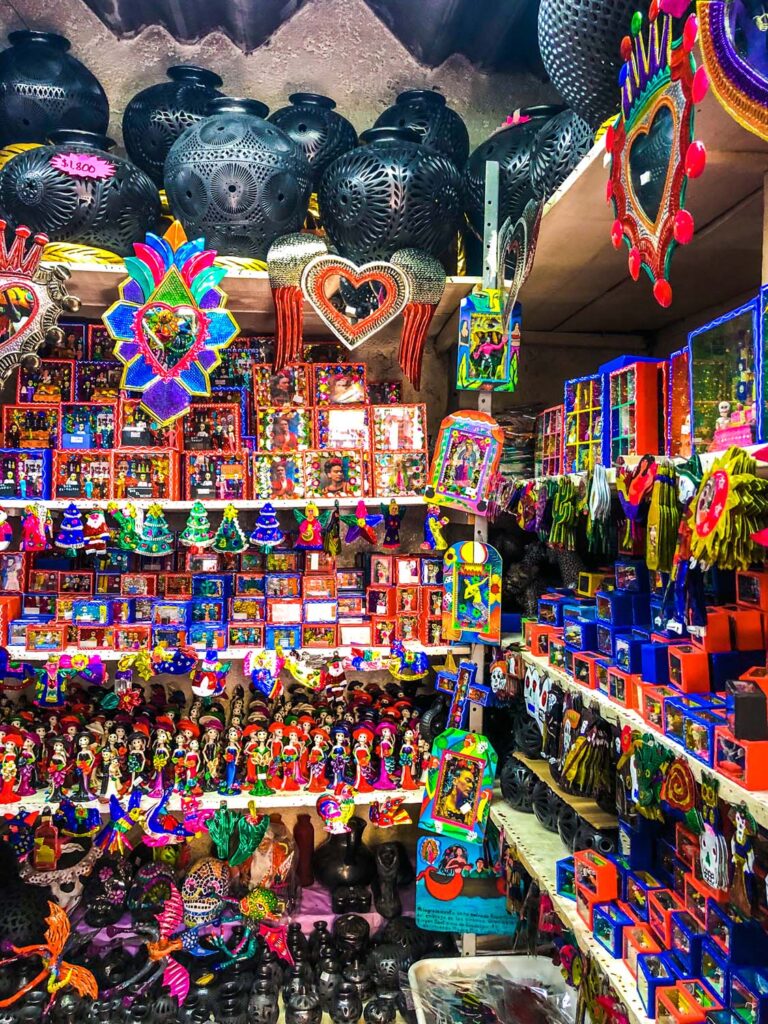
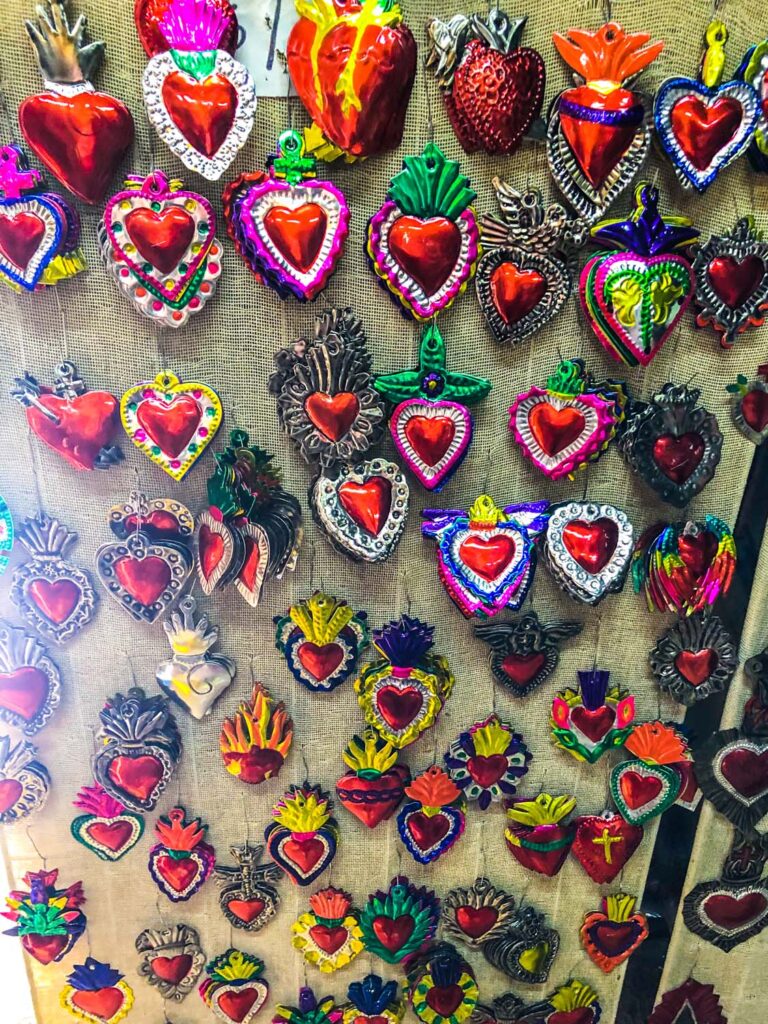
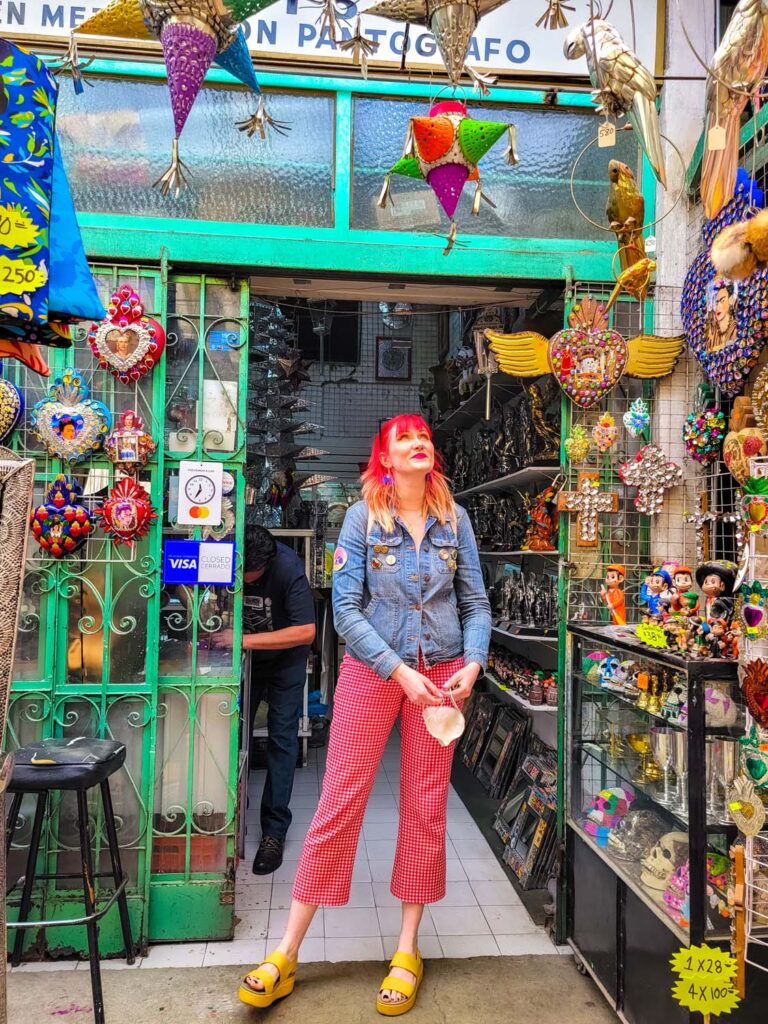
Roma Norte Dinner
Make your way to Roma Norte for dinner. Colonia Roma, as it is also known, was established as an upper-class neighbourhood in the 1900s. At the time, Mexico City wasn’t as large as it is today, and this neighbourhood was considered the newest suburbs of the capital. The design of this European-inspired neighbourhood was meant to appeal to the noble aristocrats. Since the area was badly damaged in the huge earthquake of 1985, many of the buildings were not subjected to modernization. Today it remains as a vestige of another time from Mexico City’s history. Today, Roma is the epicentre of hipster culture in the city with streets lined with restaurants, bars, clubs, shops, cultural centres, and galleries. This is where you can find some of the best sit-down restaurants in the city.
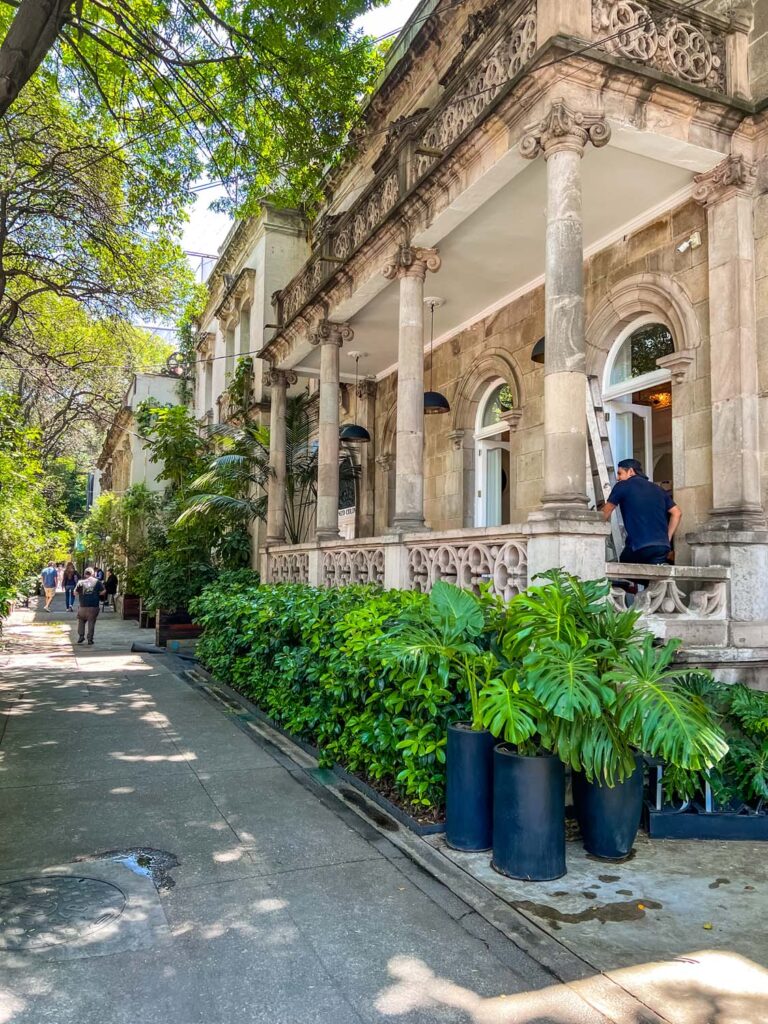
For a gorgeous meal in a modern setting check out Rosetta. Reservations are recommended well in advance for a spot at this hot-spot. For something more laid back and experimental check out the Mercado Roma. This spot is designed to feel like an upscale market. Here you’ll find a series of different vendors spread out so you can try a sampling of different dishes.
After dinner, head to the stylish Gin Gin bar for a few drinks to cap off the night. Not only is the bar incredible chic, I love gin and this is the place to go for some amazing gin cocktails.
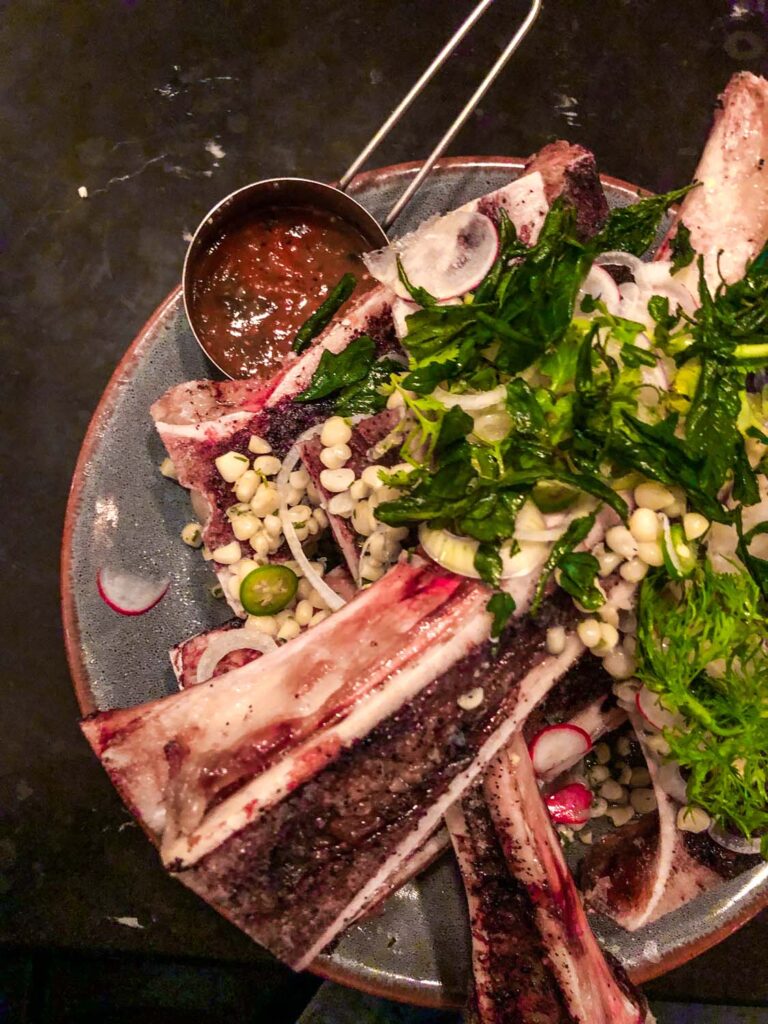
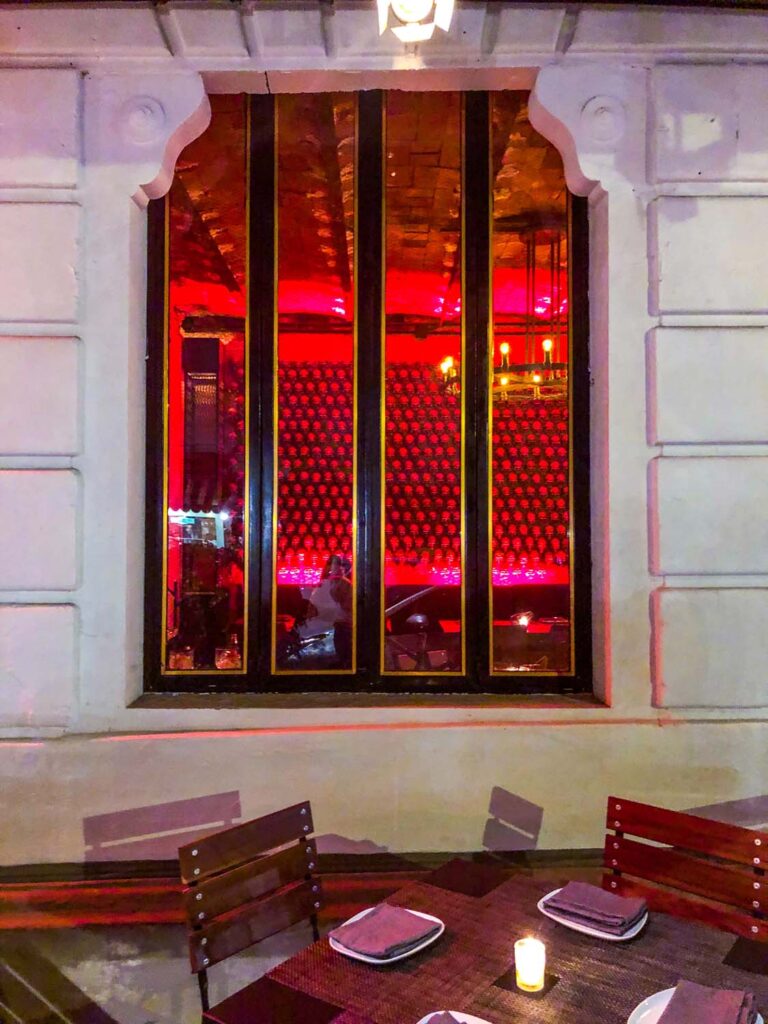
Day Three – Chapultepec Park
Bosque de Chapultepec
After a busy day in the historic district, it’s time to slow down and relax in Chapultepec Park. Chapultepec or “Bosque de Chapultepec” is one of the largest city parks in the Western Hemisphere. The entire park is over 1,600 acres! A city this dense and populated needs fresh air and this park act as its lungs. The vast forest of trees replenish fresh air throughout the Valley of Mexico. The name Chapultepec stems from the Nahuatl word chapoltepēc which means “at the grasshopper’s hill”.
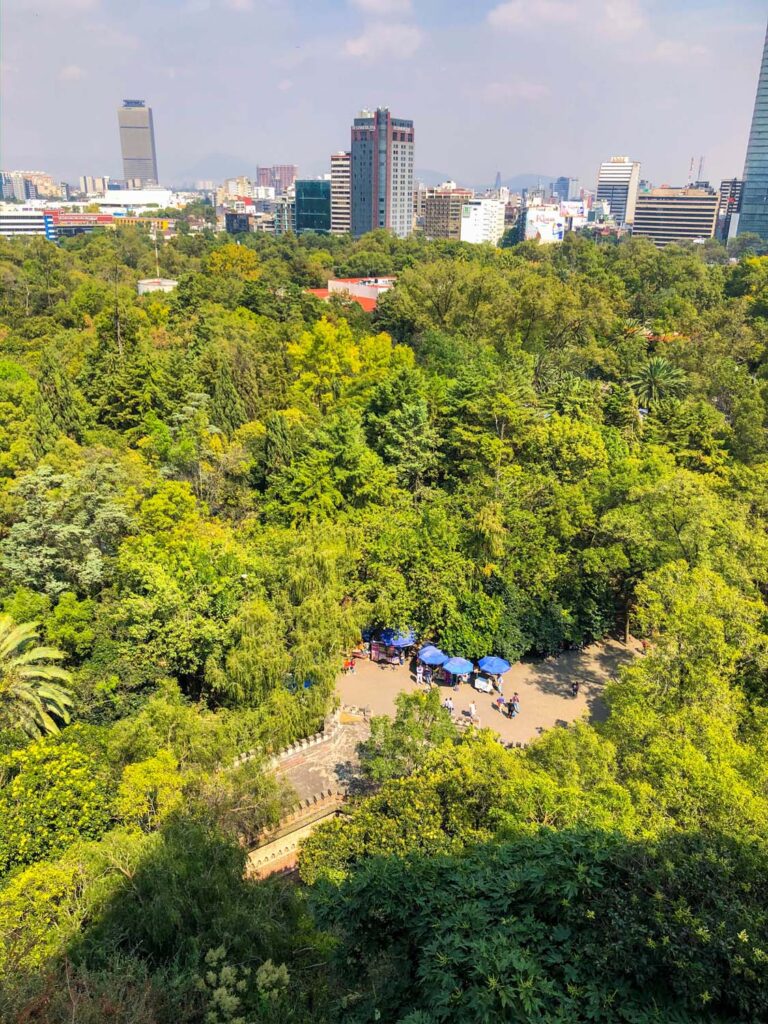
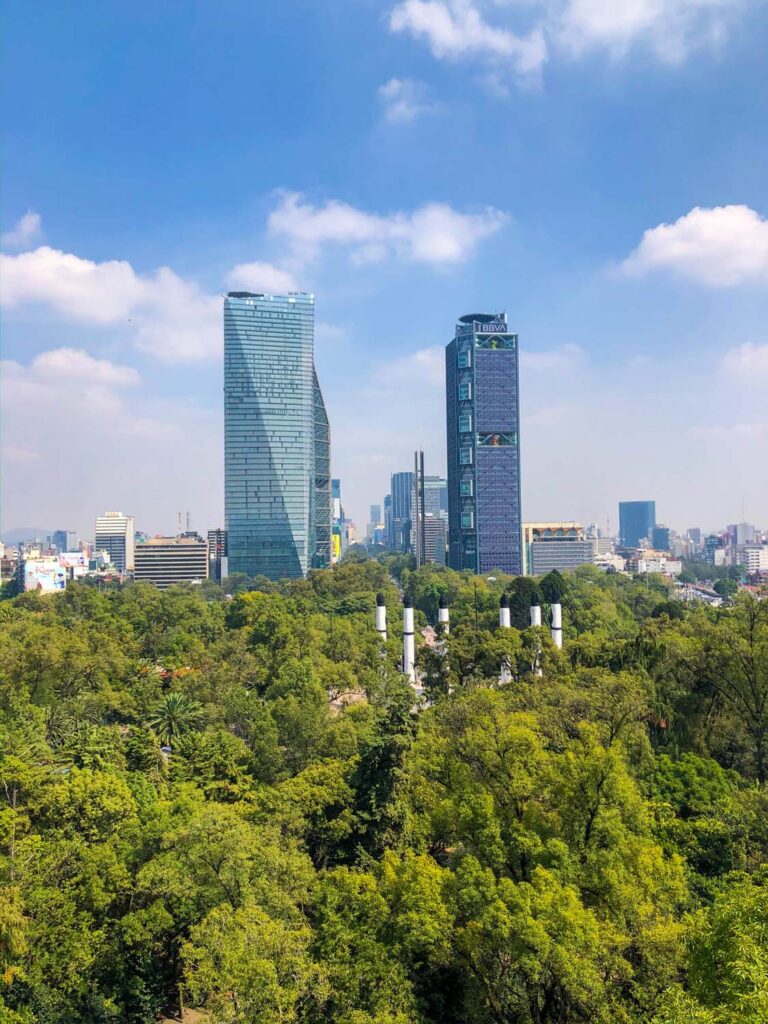
Chapultepec Castle
Start your day at Chapultepec Castle. Chapultepec Castle is the ONLY true royal castle in the Americas, as it was actually the residence of the viceroys when the country was ruled by Spain. It was built in 1785 as a summer house for the royals. Not only is this castle a marvel of Mexican-Spanish architecture and interior design, but the view from the terrace over the park and the city are unrivalled.
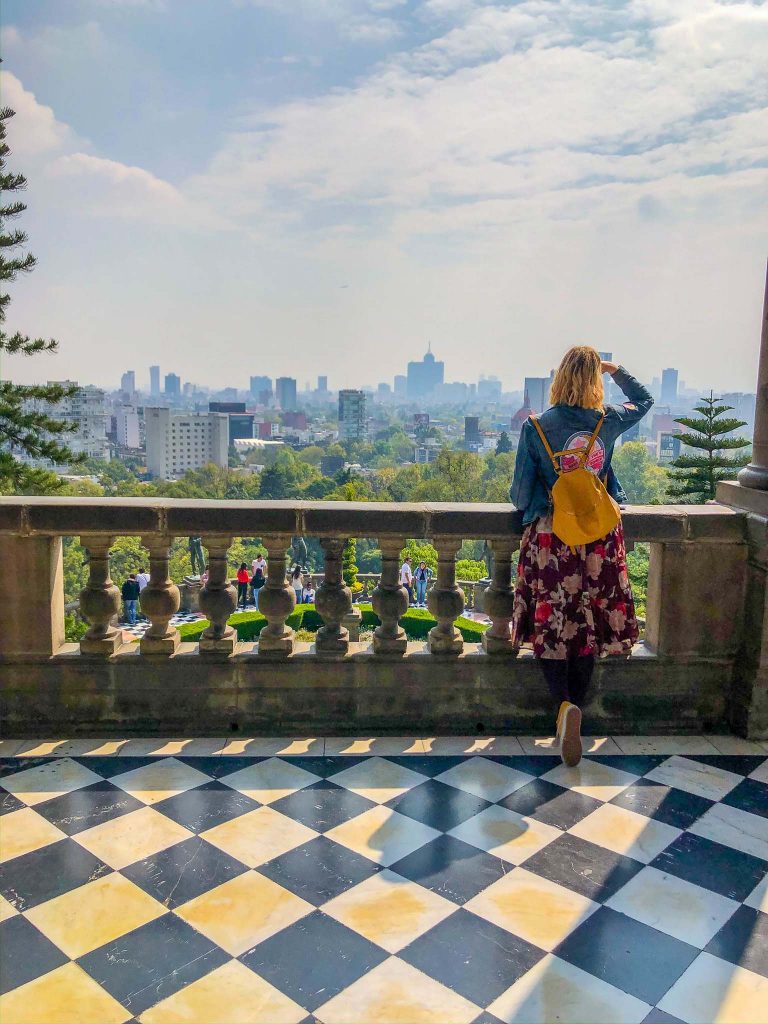
You can spend hours wandering this home and discovering secrets around every corner. My favourite part is all the incredible stained glass filtering in that beautiful morning sunlight.
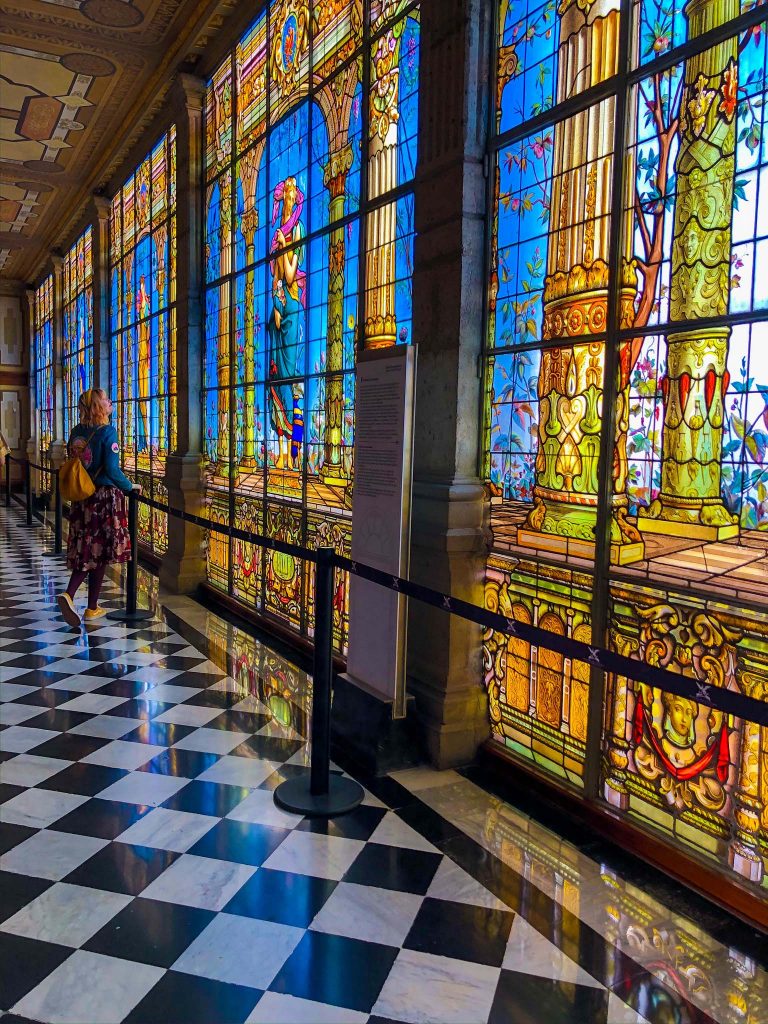
Street Food
After finishing up at the castle, walk back the hill towards Avenue H. Colegio Militar. This road will weave its way through the forest towards the best lookout point across Chapultepec Lake. This avenue is absolutely packed with street vendors! Although there is a larger “food court” beside the lake, I would avoid this area. Perhaps since they have more permanent booths, the food can be left inside and therefore isn’t of the highest quality. But the food vendors that flank the roadways are really delicious. So stick with them! These might not be as filling as the meals on offer in the food court area, but you’re better off with a safe bet.
Below are a few of my favourite street snacks so you can keep your eyes out for these reliably delicious traditional treats.
- Chicharron: deep-fried pigskin doused in chilli sauce and freshly squeezed lime juice. Duritos: Duritos (not to be mixed up with Doritos) are a wheat-based pinwheel-shaped snack topped with hot sauce and lime.
- Dorilocos: If you’re looking for something more like a meal, find your way to the Dorilocos vendor. This dish is made by taking a bag of Doritos and slicing it down the long edge, so it opens like a bowl. Then they top it with Mexican radish, shredded cucumber and carrot and Japanese peanuts. Then, of course, it’s topped with lime juice and hot sauce on top.
- Papas: freshly made potato chips served with hot sauce and lime.
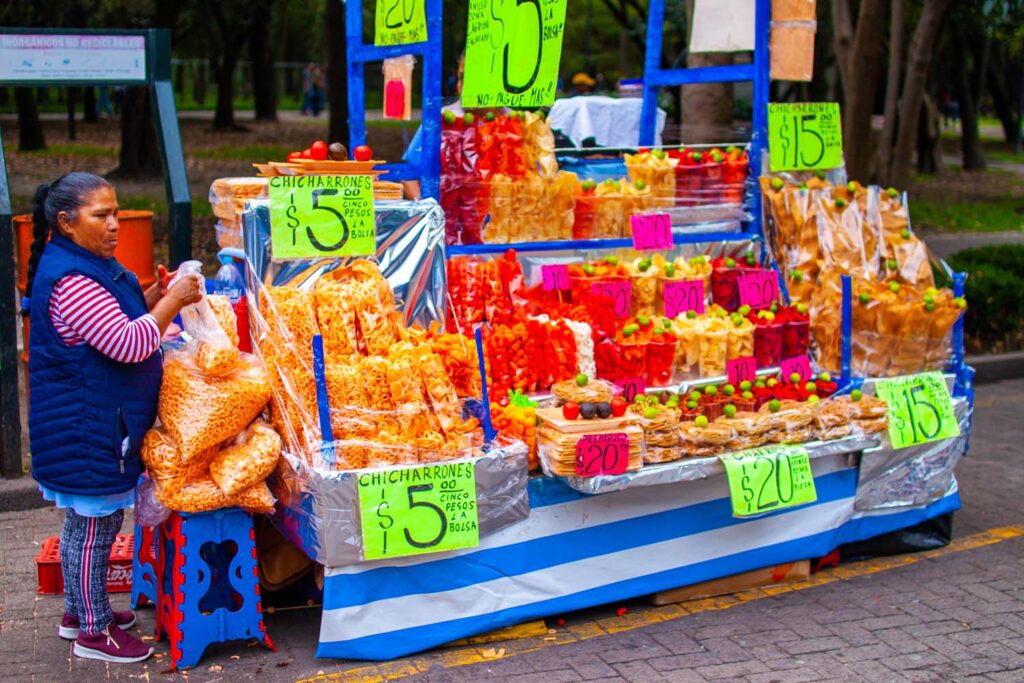
National Museum of Anthropology
After lunch head over the National Museum of Anthropology. This museum contains archaeological and anthropological artifacts from Mexico’s pre-Columbian heritage. It’s is perhaps one of the most powerful and interesting museums I’ve seen. The enormous artifacts from the Aztecs cultures, as well as lesser-known indigenous cultures like the Toltec, Mixtec, Zapotec, and Olmec are larger than life and command your attention. If you don’t know much about the pre-hispanic history of Mexico, this is a wonderful place to start learning.
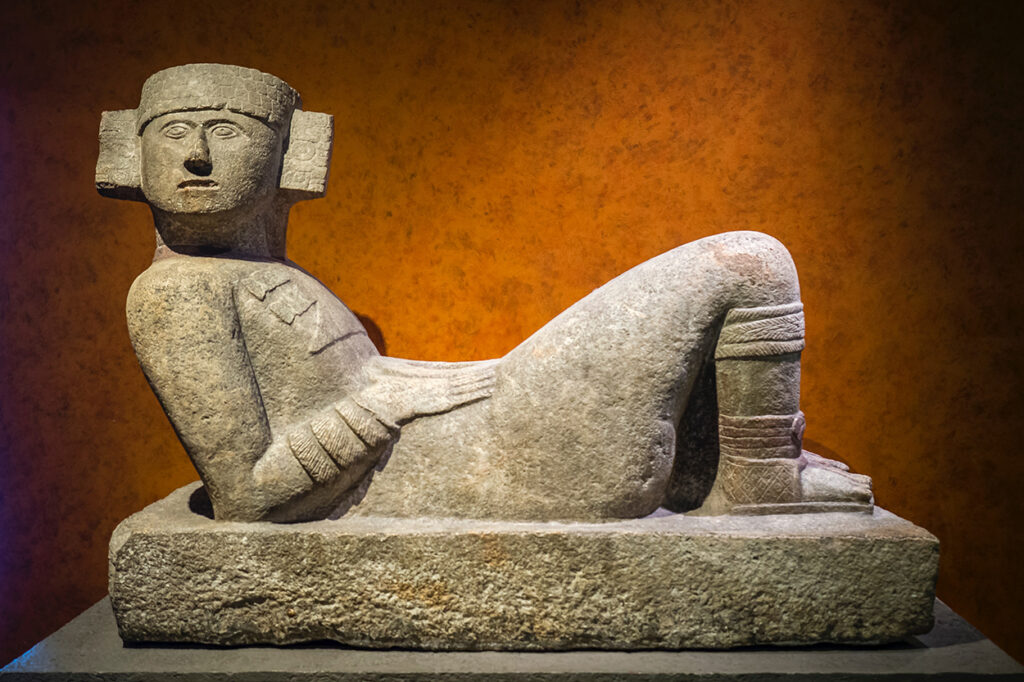
El Lago de Chapultepec
Finish your day in the park with a padel around El Lago de Chapultepec. This man-made lake is one of the most picturesque places to take a little blue paddle boat and take in the scenery. The views from the middle of the lake are fantastic and even look out at the Colonia Polanco. The boats cost 60-100 pesos/hour (around the U.S. $3). Normally, such a touristy activity would price gouge visitors but not here in the park. The locals enjoy a ride as much as the tourists, so prices are kept low to ensure everyone can enjoy a day out!
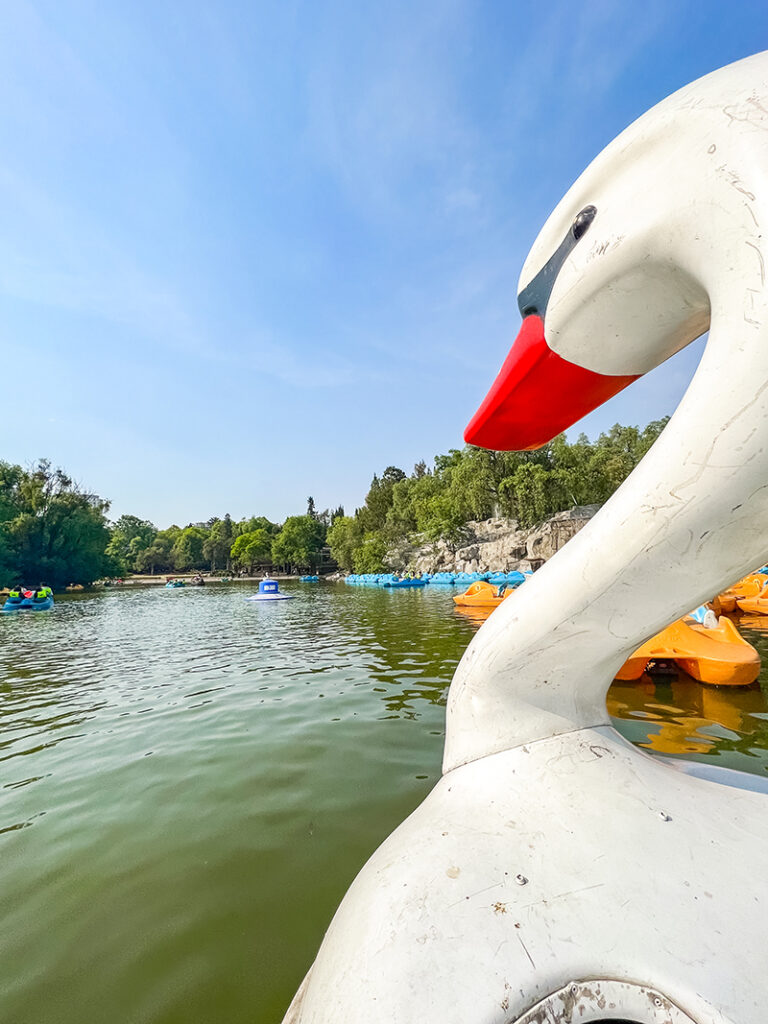
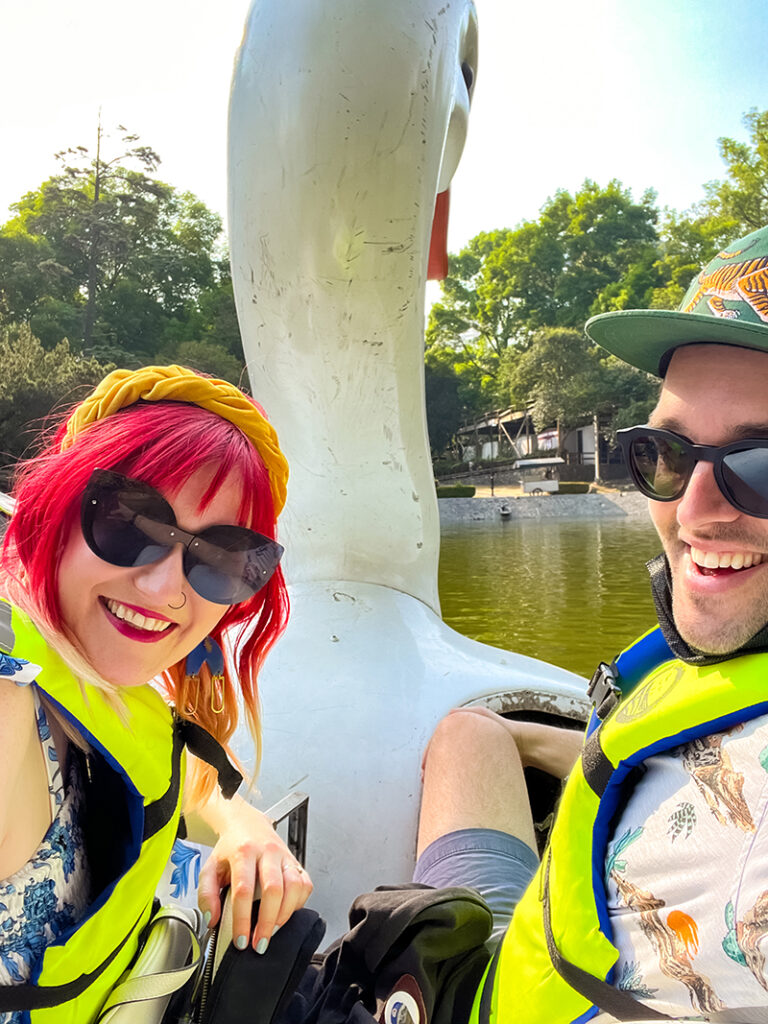
Dinner in Polanco
For dinner, let’s head just north of the park to the fanciest neighbourhood in Mexico City; Polanco. Polanco is known for its upscale boutiques and luxury stores. But it also had great food hidden amongst the otherwise ubiquitous shops. If you want to go all out, make reservations at the famous Pujol restaurants. As of 2022, Pujol stands at #9 on the list of the world’s best restaurants! Reservations book up months and months in advance so be sure to get yours as soon as you can. But if you find there are no spots lefts, keep checking as sometimes people make cancellations and something will pop up out of the blue.
If you can’t snag a reservation at Pujol or don’t wanna spend that kind of cash there are lots of other options. One of my faves is El Turix, a little hole in the wall that sells Cochinita Pibil in a multitude of ways. My pick is always the taco but the torta and tamale are also great choices! Cochinita Pibil is best known as a dish from the Yucatec Mayan peninsula and this is the best place to try it outside of the Yucatan!
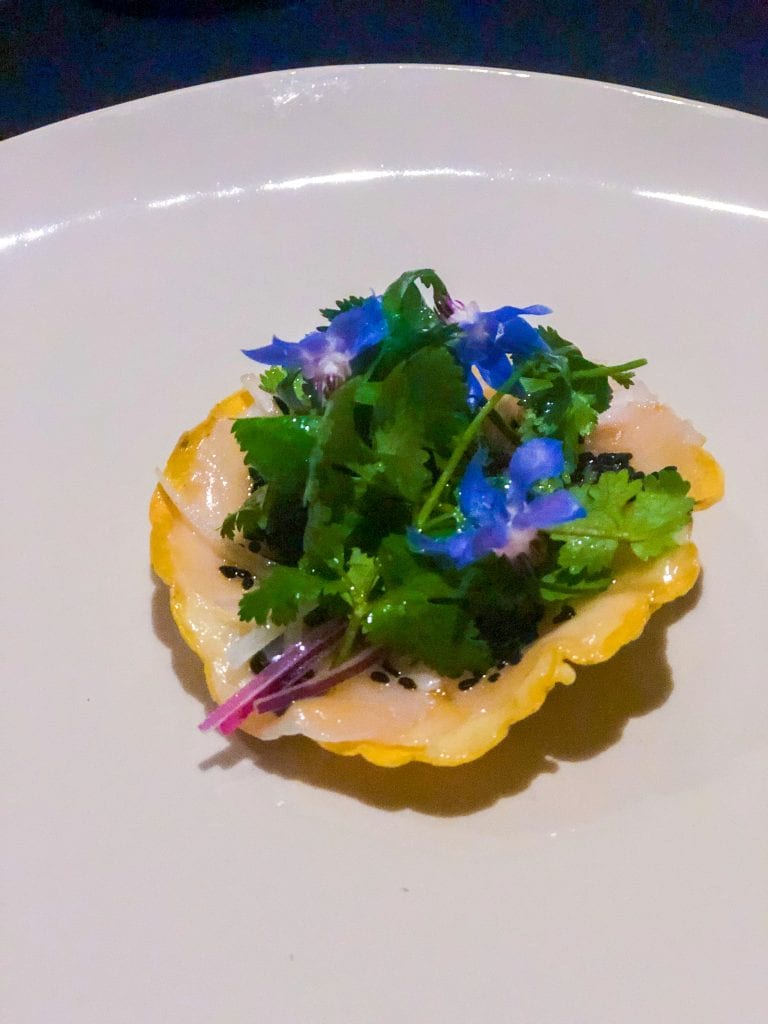
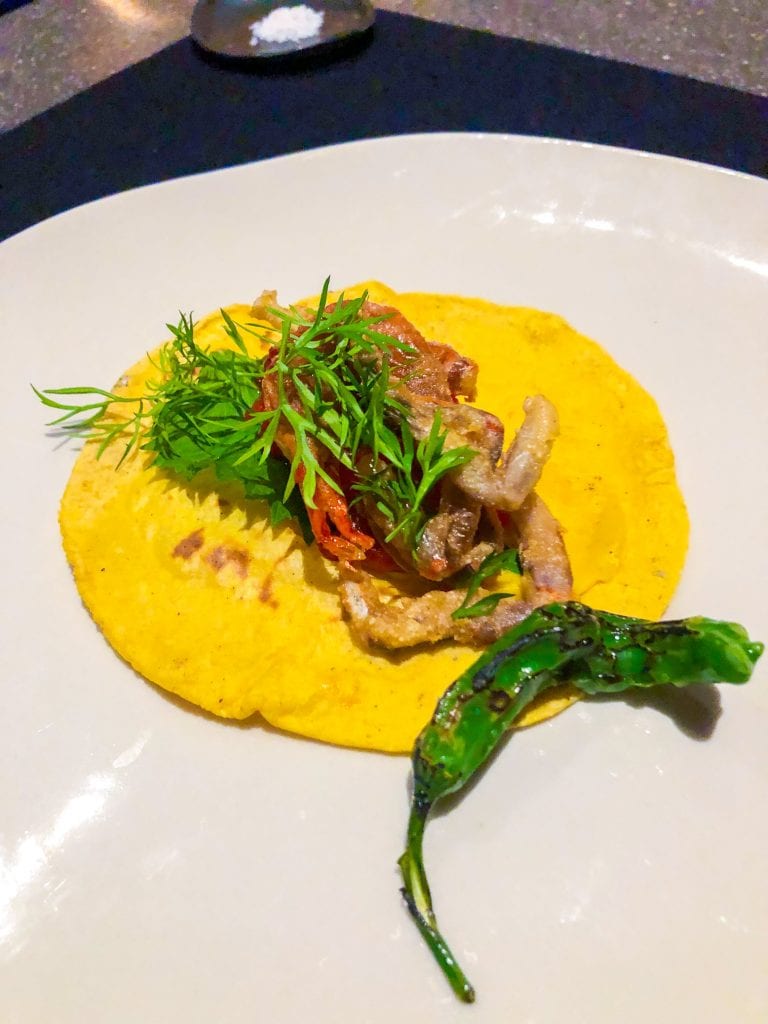
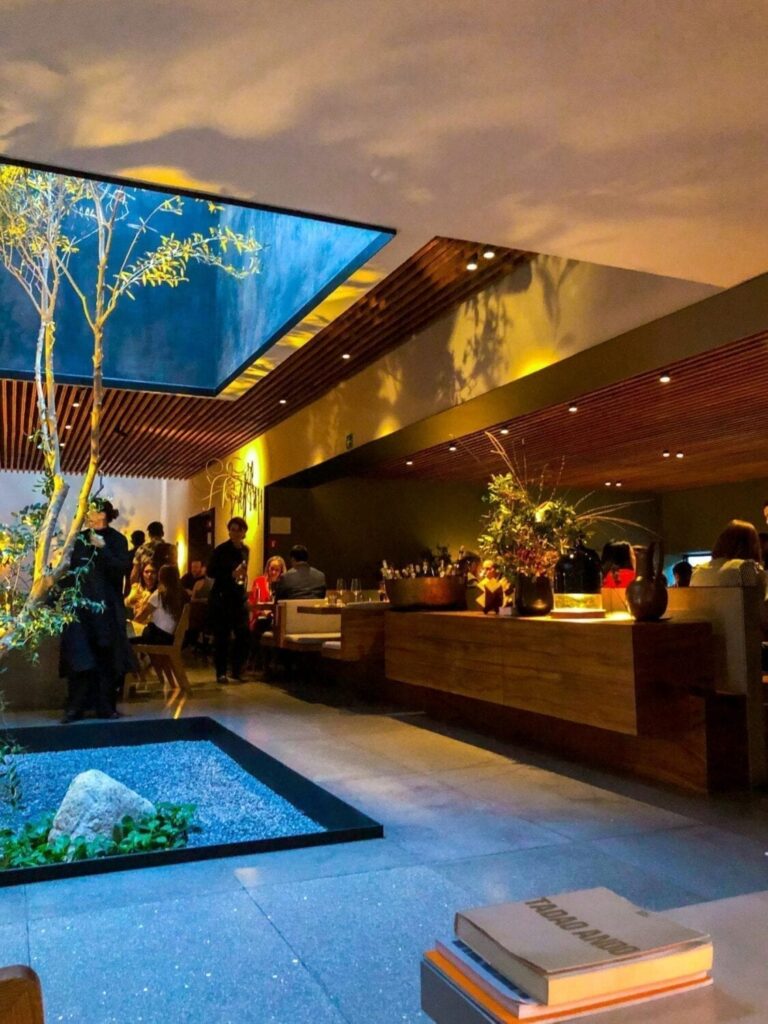
Day Four – Frida Khalo’s Coyoacán
Coyoacán is one of the most vibrant neighbourhoods, just south of the centre of town. The name comes from the Nahuatl word meaning “place of coyotes.” Today, Coyoacán is most notable for its amazing marketplace, brightly coloured yet quiet streets and gorgeous greenery. But most importantly, it’s where you’ll find the Casa Azul; Frida Khalo‘s home which has been preserved as a museum.
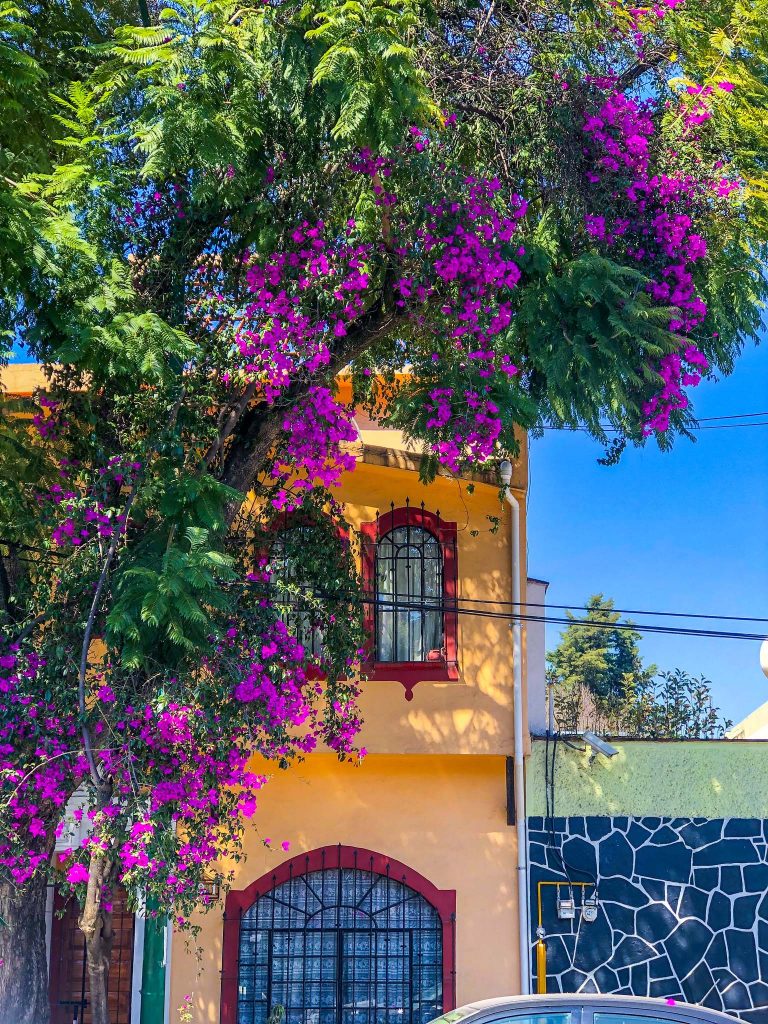
Café Avellaneda
Because this sleepy village doesn’t rise early in the morning, head over to Café Avellaneda for a late brunch. This small but charmingly decorated cafe serves up some inventive, and cosy meals. Give the Chilaquiles Verdes a try or opt for the waffles covered in their selection of seasonal fruit! Great way to try some of the best produce from the marketplace!
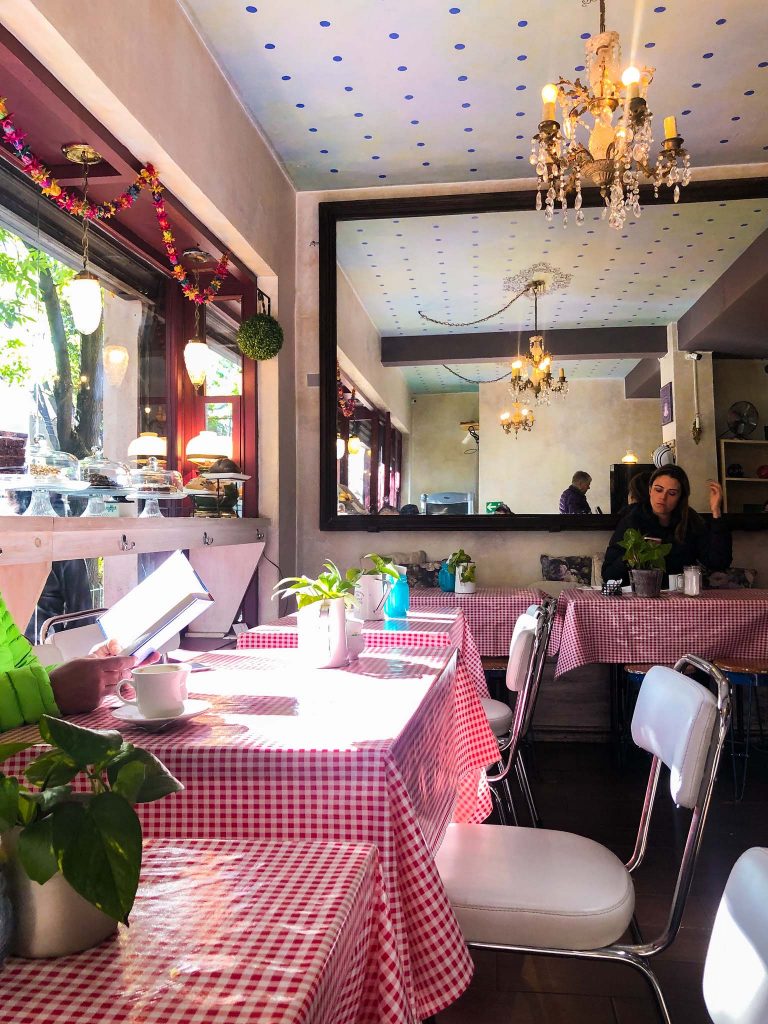
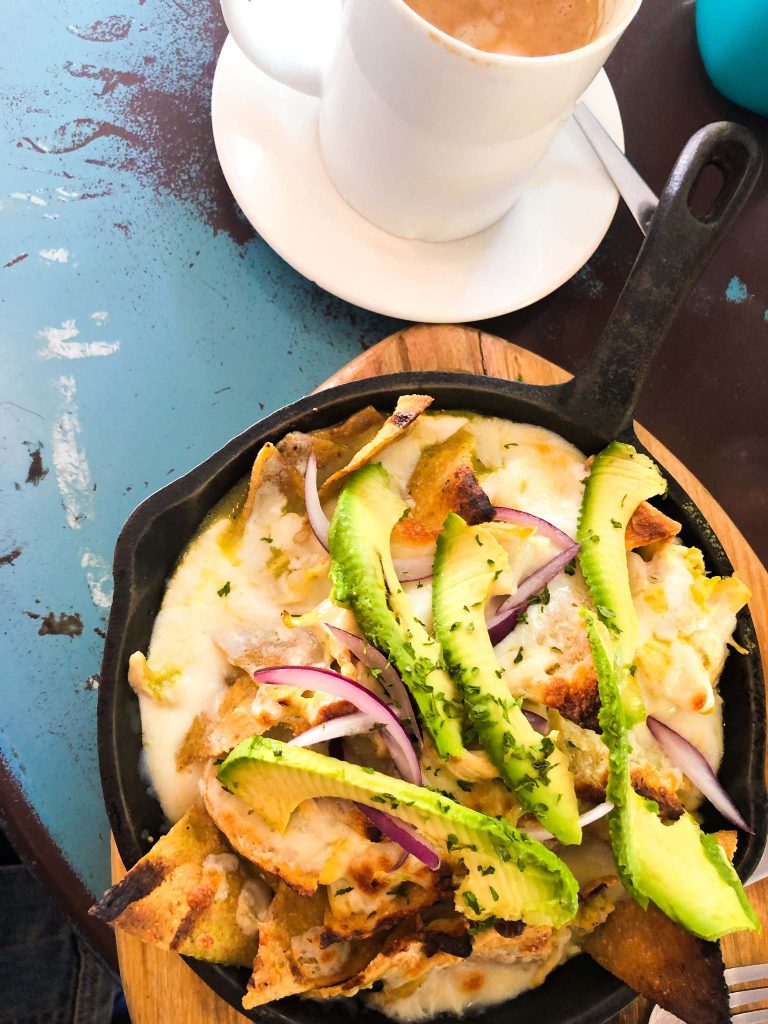
Iglesia De Coyoacan
After filling your belly with food, head over to the Iglesia De Coyoacan. The first church was built here in 1577. The site was given to the Franciscan parish by Hernan Cortes, a Spanish Conquistador who led an expedition that caused the fall of the Aztec Empire. Over the years the church has changed appearance from its original form. Renovations and fires continued to shape its evolution but the current church is no less beautiful than all its predecessors.
The facade is a classical herrerian design with geometric rigour and an overall absence of decorations. This is so that when you enter the church there is a huge juxtaposition to what you find walking through the large wooden doors. The interior is covered in baroque gilded decorations, mindblowing ceiling frescos of the Immaculate Conception of Mary, a fantastical work of Juan de Fabregat. The interior feels grand and yet at the same time very intimate. When we visited there were a large group of locals, praying on their way to work.
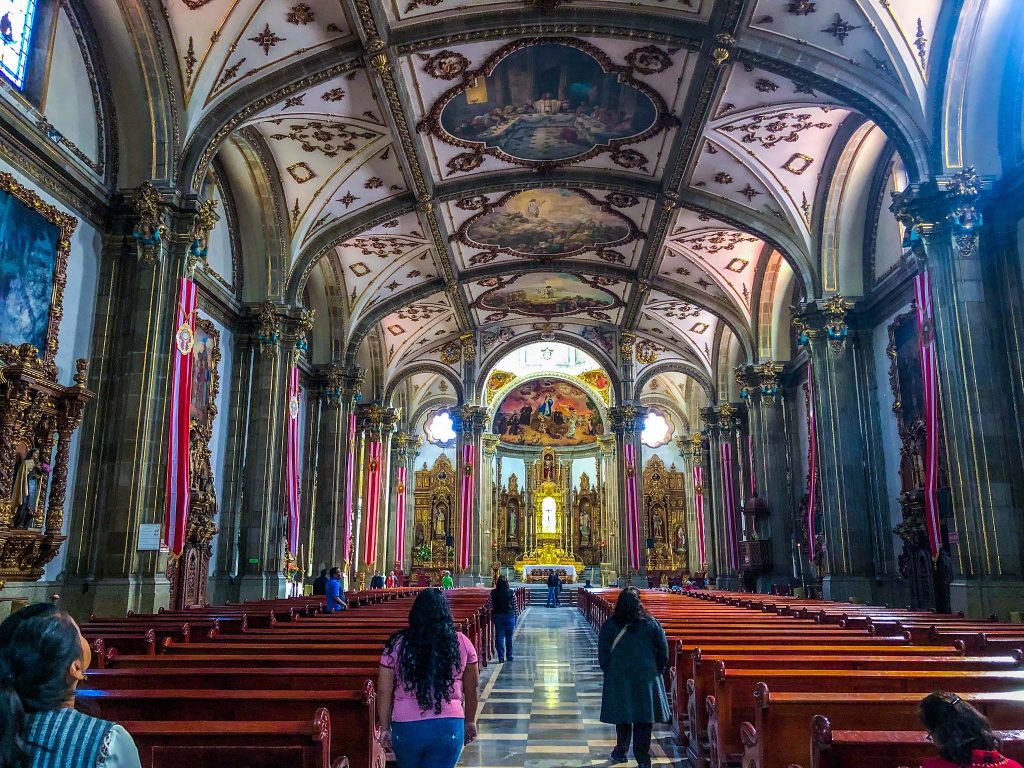
Centenario Garden and Hidalgo Garden
Outside of the church spend some time wandering the two adjoining parks; Centenario Garden and Hidalgo Garden. In the middle of these gardens is a large canopied rotunda where on the weekend you’ll often hear music being played.

Children are seen playing in the square, and brightly coloured balloons and toy vendors decorate the surroundings. In the centre of the park is a fountain which contains a bronze sculpture of two coyotes. In reference to the original meaning of the borough’s name.

Cafe El Jarocho
For a little pick me up on your way to the market, head over to Cafe El Jarocho. This place has been serving customers in Coyoacan for 63 years and is a veritable piece of history. It’s an unpretentious coffee shop and a great alternative to just another Starbucks. Give their mocha a try since it’s famous for being made with traditional Mexican chocolate and some of their locally grown beans.
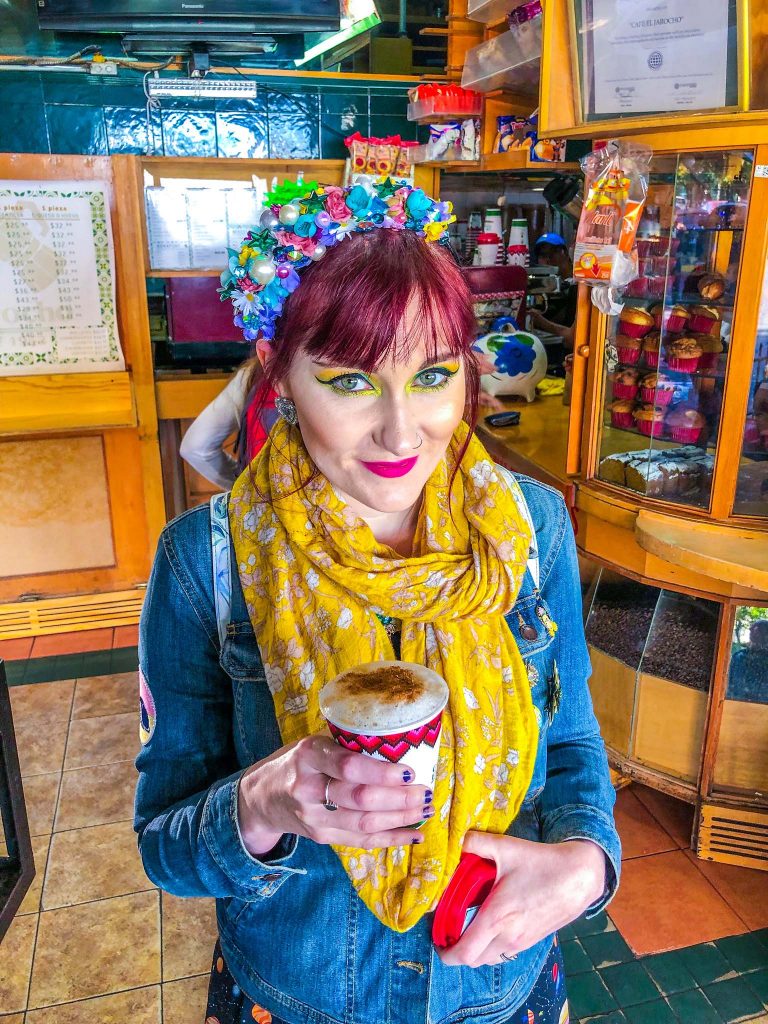
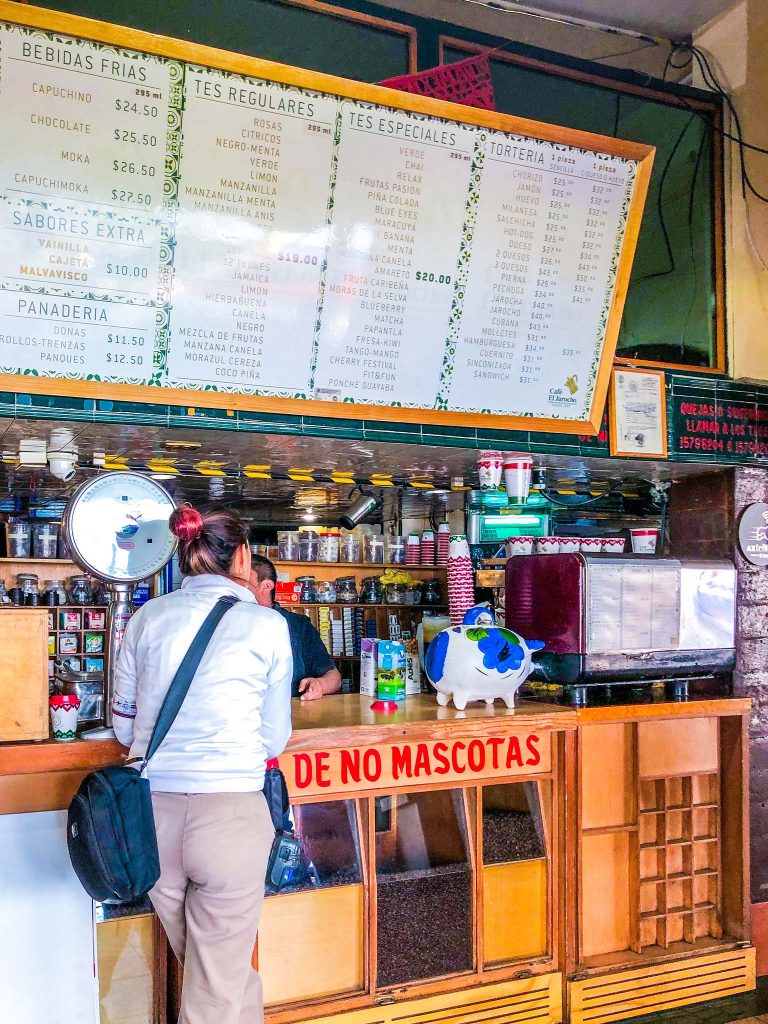
Mercado de Coyoacán
Next, you’ll finally arrive at the golden yellow facade of the Mercado de Coyoacán. The interior of this busy market is tightly packed with spices, toys, fruits and vegetables and wonderfully smelling flowers. But the main reason for visiting this market is for their famous tostadas! At lunchtime, the lines can get pretty long, but it moves quickly and gives you time to scope out what you want. The ceviche tostadas with a thick slices of avocado to cut the acidity of the fish are absolute perfection!
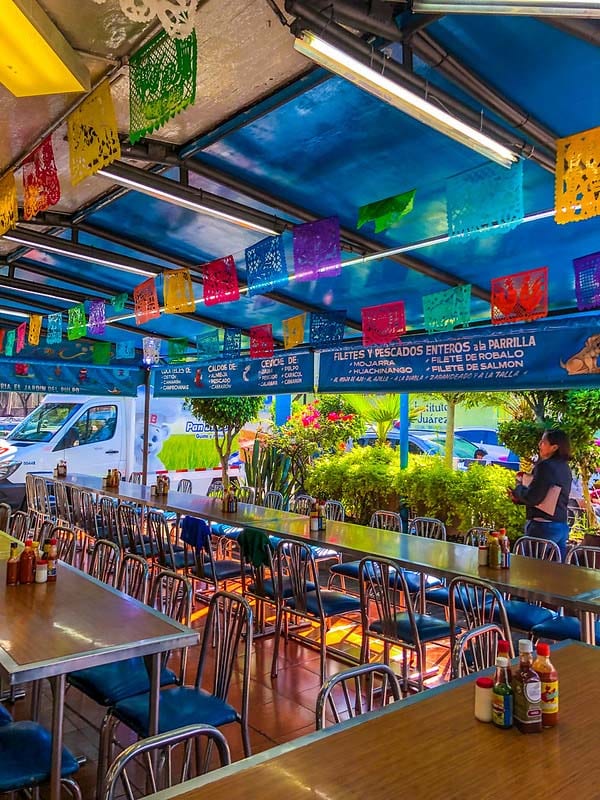
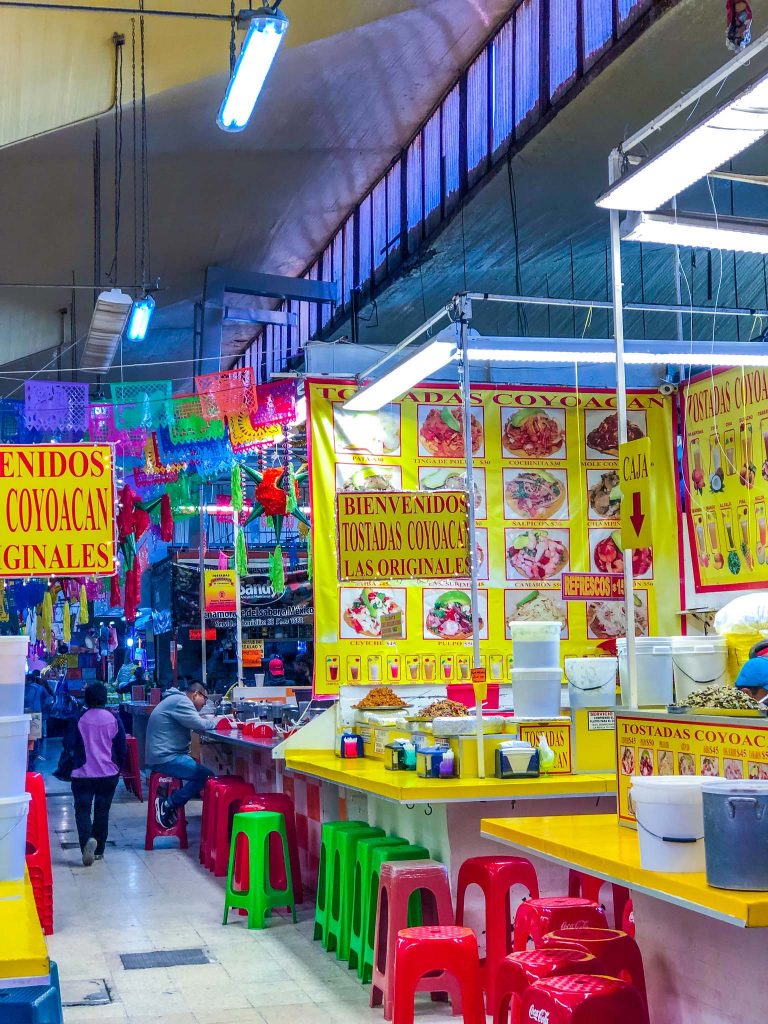
Casa Azul – Frida Kahlo Museum
But what most people come to Coyocan for is the Casa Azul, also known as The Frida Kahlo Museum. This was where Mexican artist Frida Kahlo and her husband Diego Rivera lived. Frida herself grew up in this family home when her parents owned it. She would later return here to seek refuge from her pain and from the public. Frida is one of the most influential surrealist artists. Her work was inspired by her life, the natural environment and many elements from her Mexican hertiage.
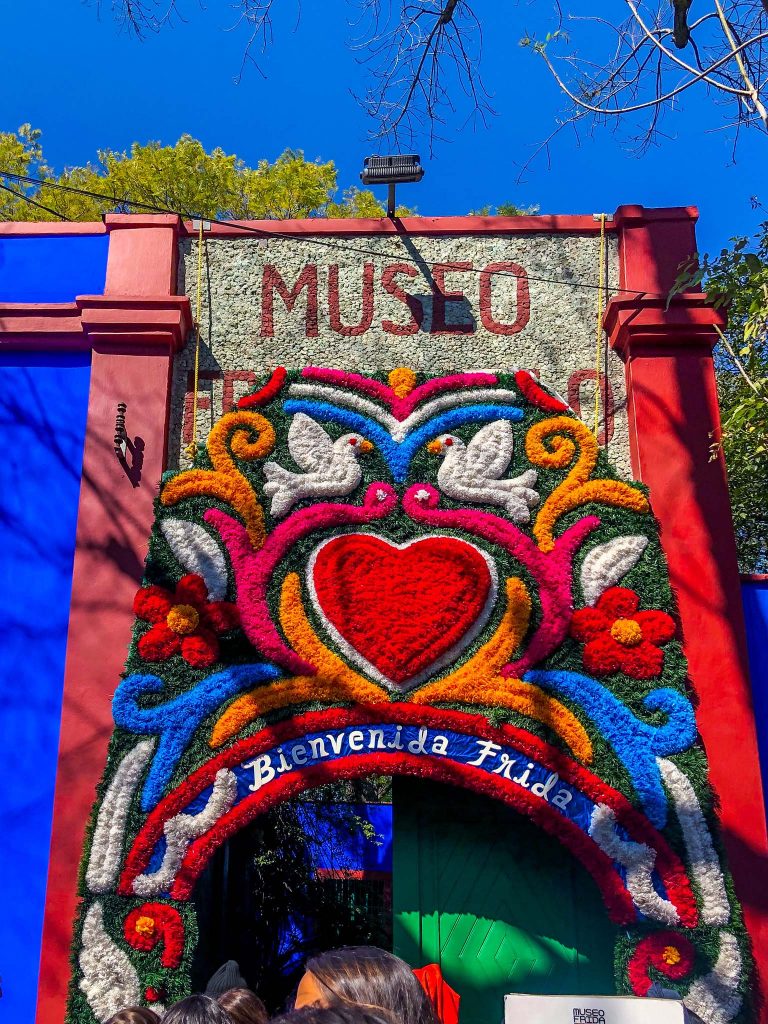
The museum is less of a simple art gallery and more like an inside look at her private world. Although there are a few paintings from both artists, the main focus of the Casa Azul is the couple’s Mexican folk art, pre-Hispanic artefacts, photographs, memorabilia, personal items, and more. You feel a deep connection with these artists by literally walking in their footsteps. This is an unmissable experience for anyone interested in art or Frida herself.
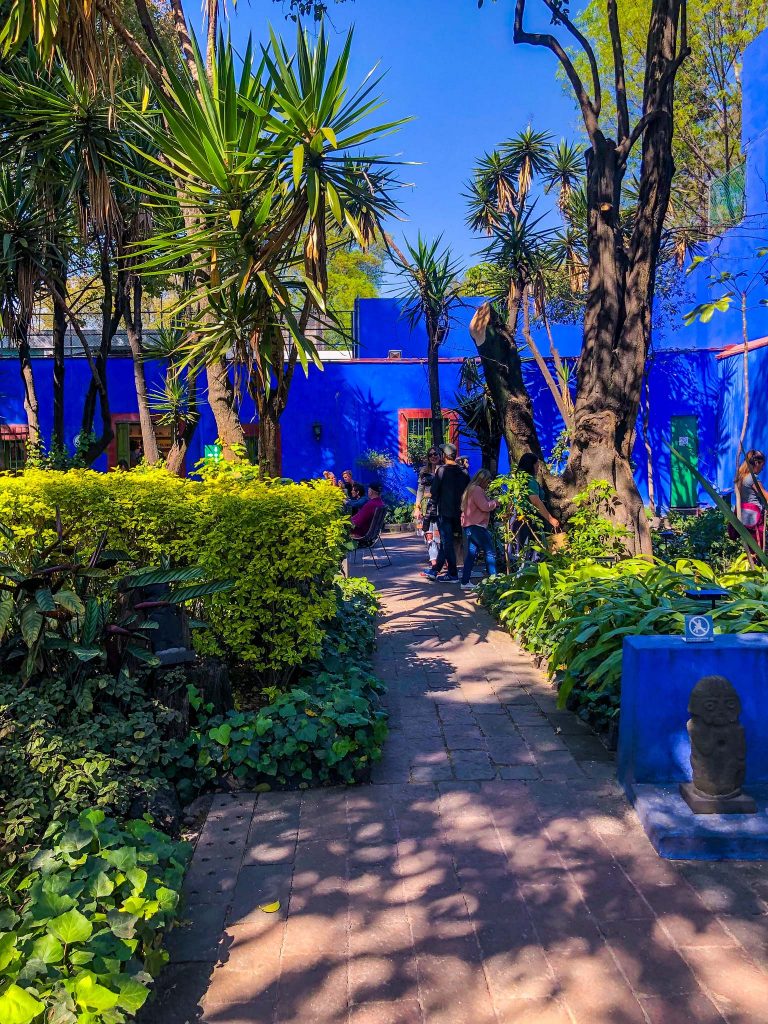
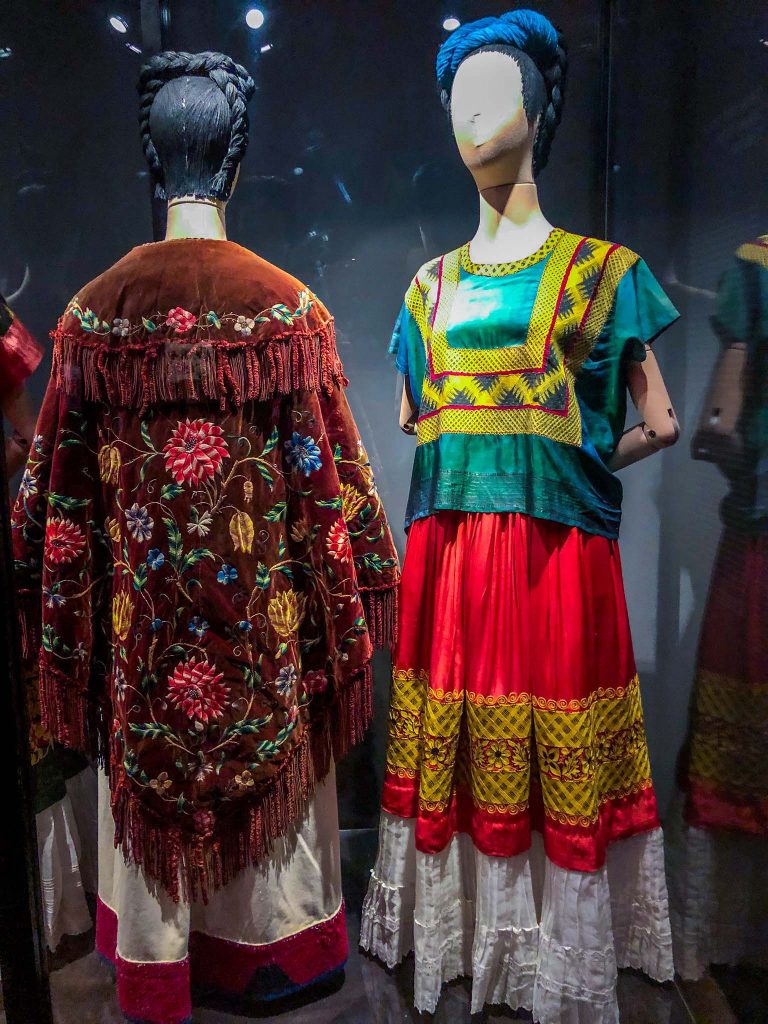
Parque Santa Catarina
As you head towards where you’ll have dinner, stop off in the Parque Santa Catarina. This lovely parkette is dominated by the marigold painted church of Santa Catarina. The square is often a site for party and, and there is usually a remnant of those events still holding onto the sunlight.
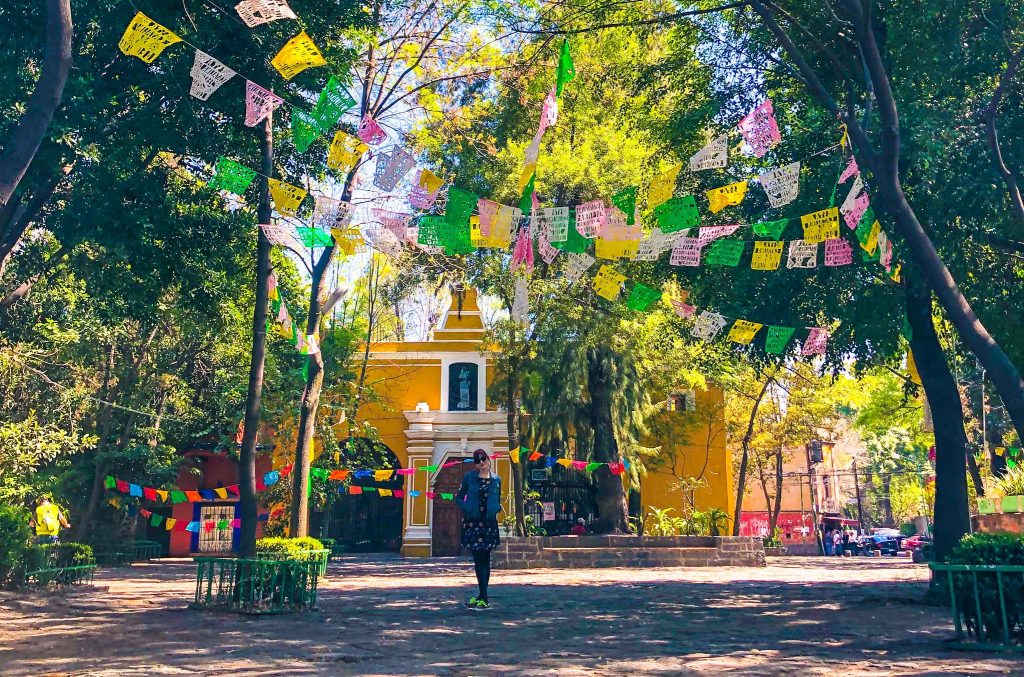
Casa de Cultura Jesús Reyes Heroles
Across from the park is the Casa de Cultura Jesús Reyes Heroles. This centre is free to enter and a beautiful place to rest your feet and explore. The “House of Culture” was named in honour of the distinguished historian and political scientist, Jesús Reyes Heroles. In this public centre, you’ll see people writing an essay, practising dance, earning music, having meetings and more!
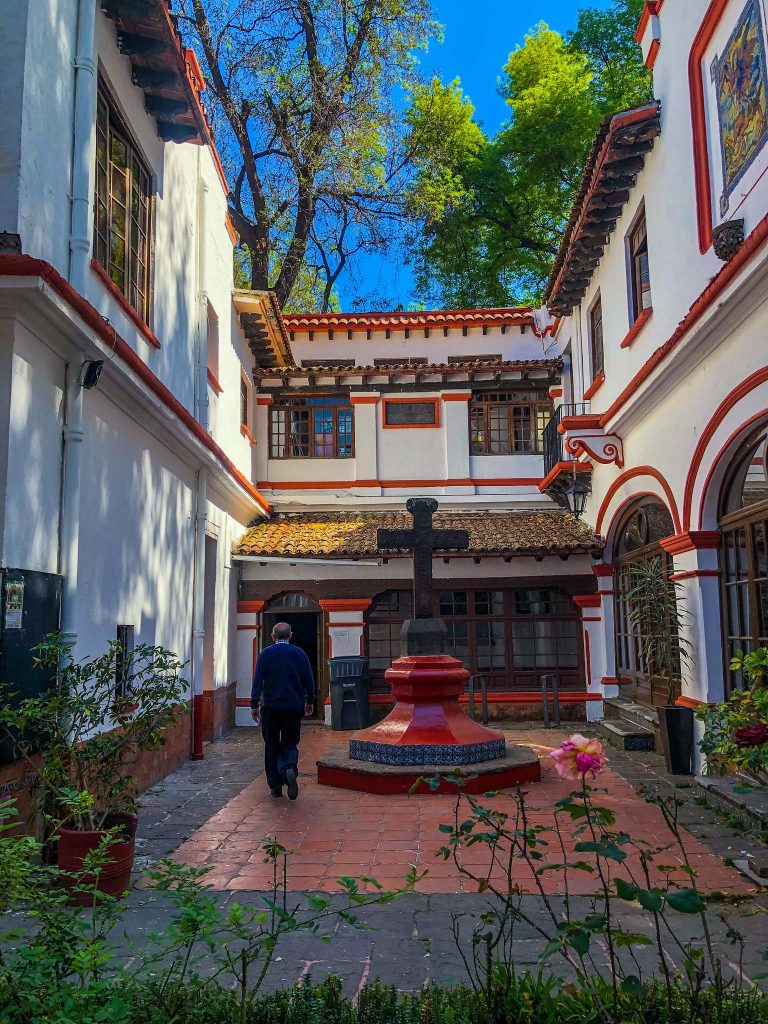
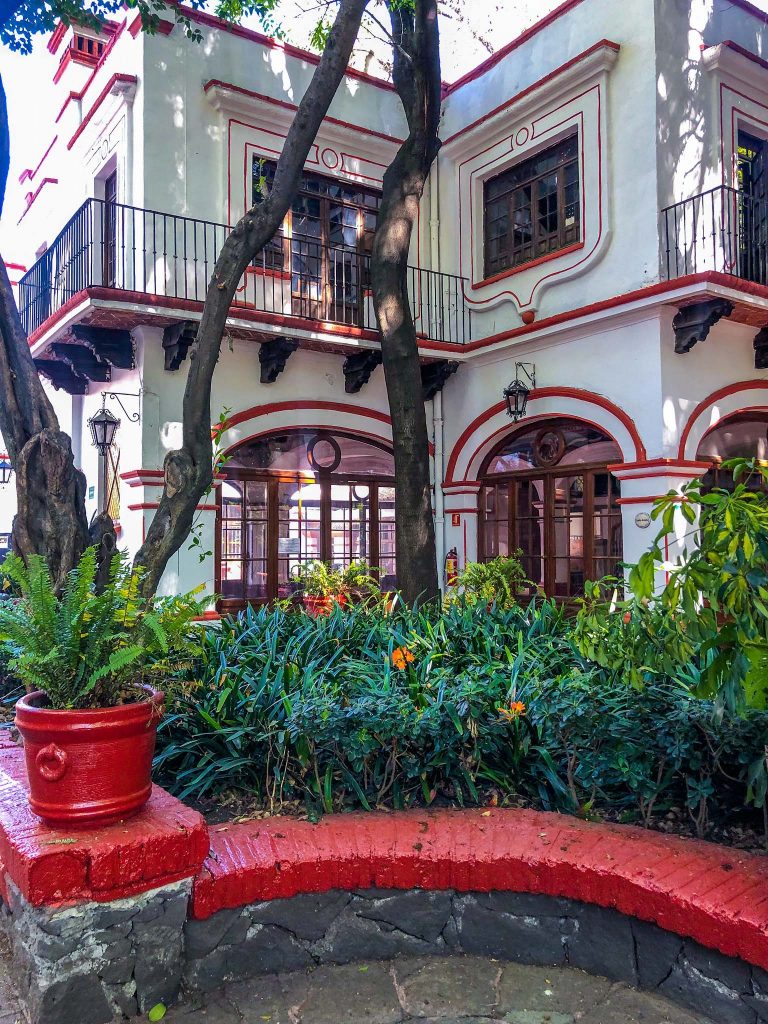
Mesón Antigua
Across from the Casa de Cultura Jesús Reyes Heroles is the Mesón Antigua. This cosy and welcoming restaurant serves up traditional Mexican food in a charming environment. It’s a great place to try some traditionally made mole and while away the evening on the terrace, watching locals on their way home from work and lovers meeting the park. People watching at its finest.

Go to a Lucha Libra Show
If you feel up for some evening entertainment I would highly recommend going to a Lucha Libre show! Lucha Libre is basically Mexican Wrestling and even if you aren’t even the slightest bit of a wrestling or sports fan, going to these shows is soooo much fun. We’ve gone both with a tour group and on our ownand its a blast either way. Going on your own is much cheaper, as tickets are only about $25 USD but going with the group is a wonderful experience for first-timers. They teach you all about the history of the sport and why it has become such an important part of the Mexican identity. Everywhere you go in Mexico City you’ll see Lucha masks for sale and everything from t-shirt to magnet with famous wrestlers on them so it’s good to find out for yourself what this is all about.

Day Five – The Old City of Teotihuacan
Teotihuacan is one of those places you hear about, and everyone tells you to visit. I was a bit on the fence when I first heard about it, the pictures never really do a place that vast justice, and I didn’t know what to expect. But after going I can tell you, it is indeed a must see part of Mexico and somewhere which taught me a lot about the culture and the history of this country. Teotihuacan is an ancient Mesoamerican city where over 125,000 people once lived in around 100 BCE! At the time it was one of the largest cities in the entire world. Teotihuacan’s pyramids are its most famous site. The Temple of Quetzalcoatl and the Pyramids of the Sun and the Moon were laid out in a geometric and symbolic plan which mirrored the stars.
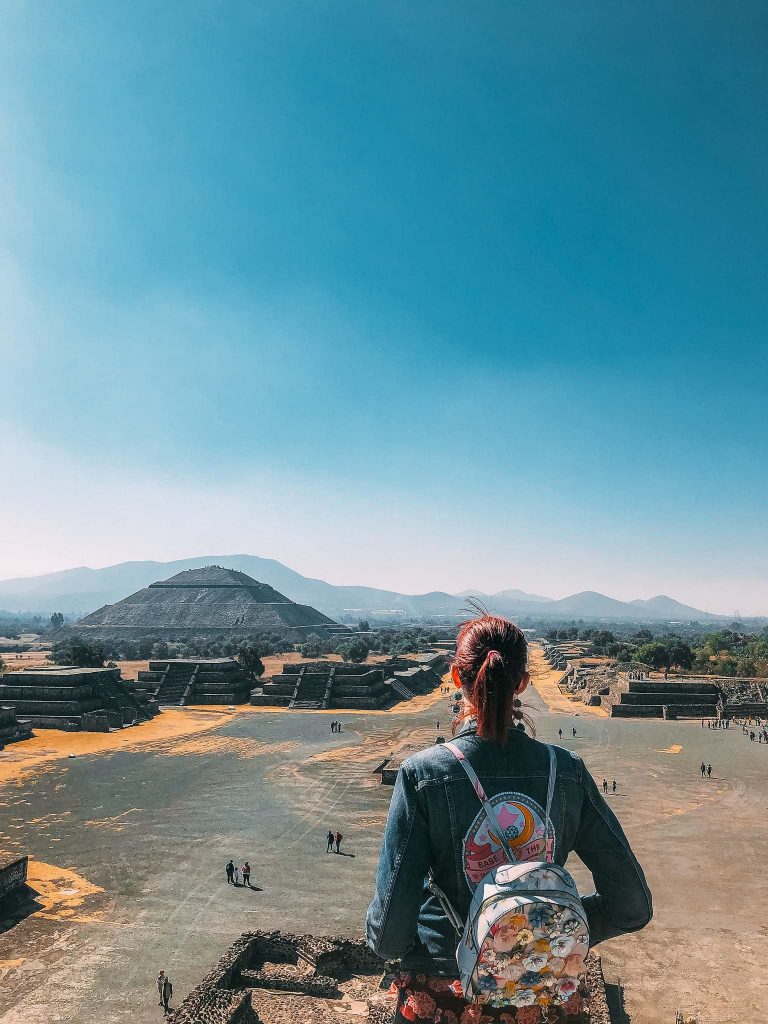
Pyramids
Climbing up the Pyramid of the Sun is a challenge, especially on a hot day, so arriving early is key! Not only did we find the pyramids were way less crowded than later on in the day, but it was the perfect temperature. The Pyramid of the Sun is 140-feet (43-meters) high with a base measuring 426 by 511 feet (130 by 156 meters). Its the largest of the pyramids and gives you the best view from atop of the surrounding landscape and other ancient structures.
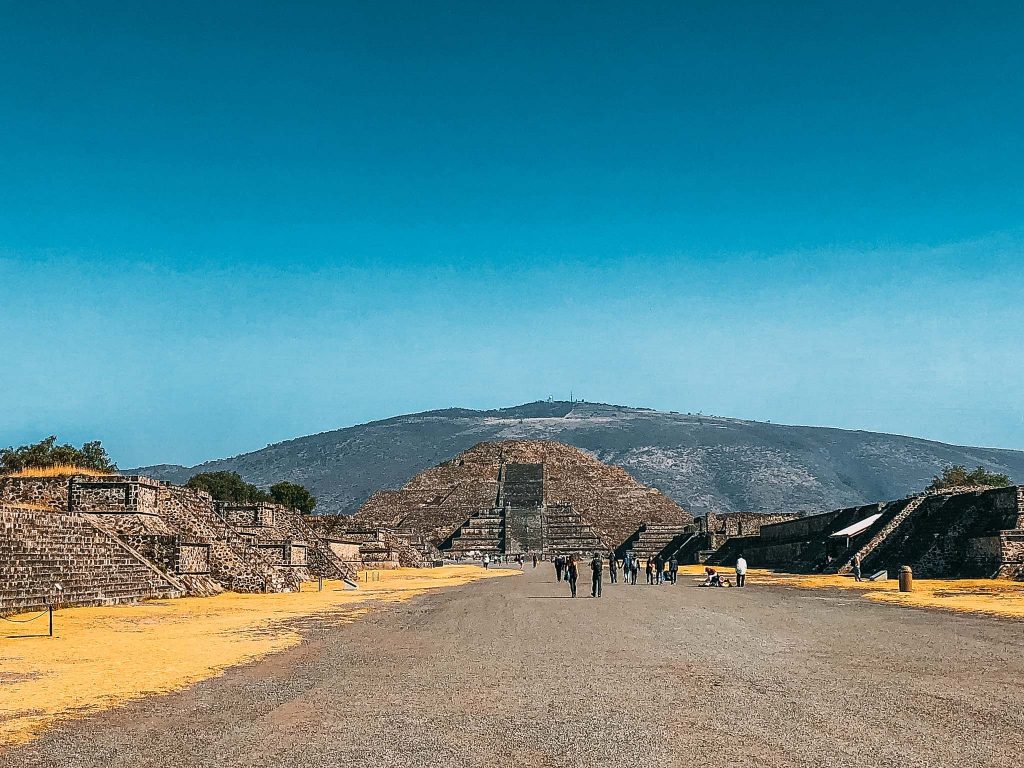
In addition to seeing the pyramids, you’ll also have the chance to explore the multi-family residential compounds, the Avenue of the Dead and the amazingly vibrant murals which reflect how bright and colourful all these structures once were. These incredible pieces of history have been incredibly well-preserved after all this time and looking at them you are blown away by the seemingly modern designs they were making thousands of years ago.
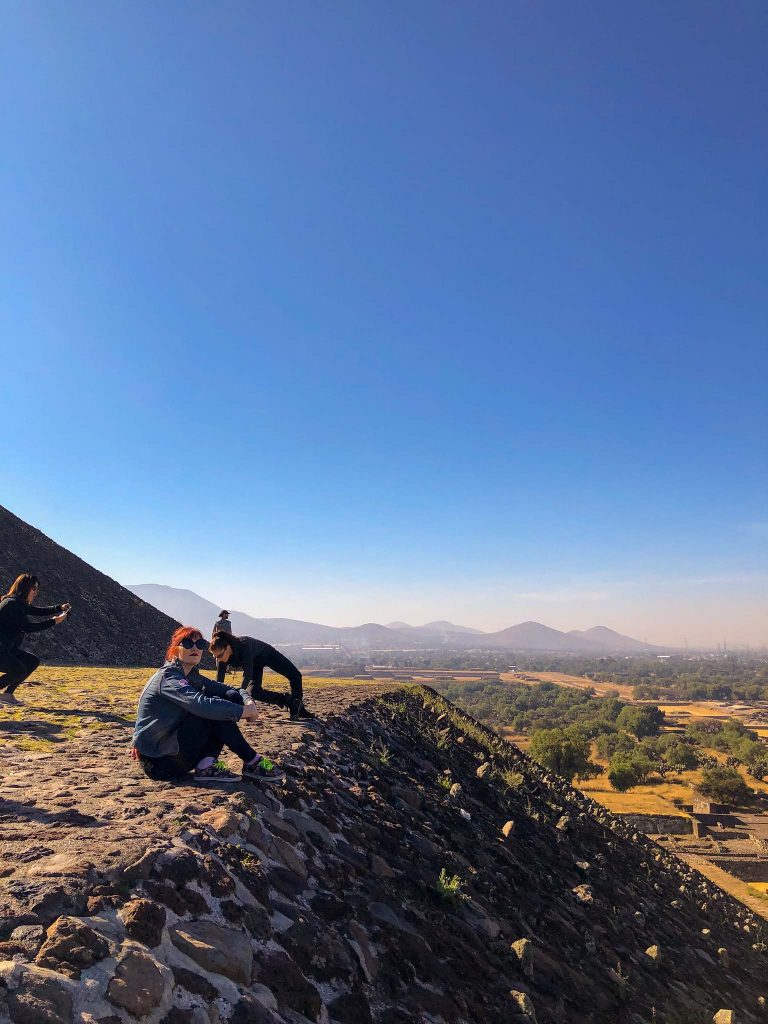
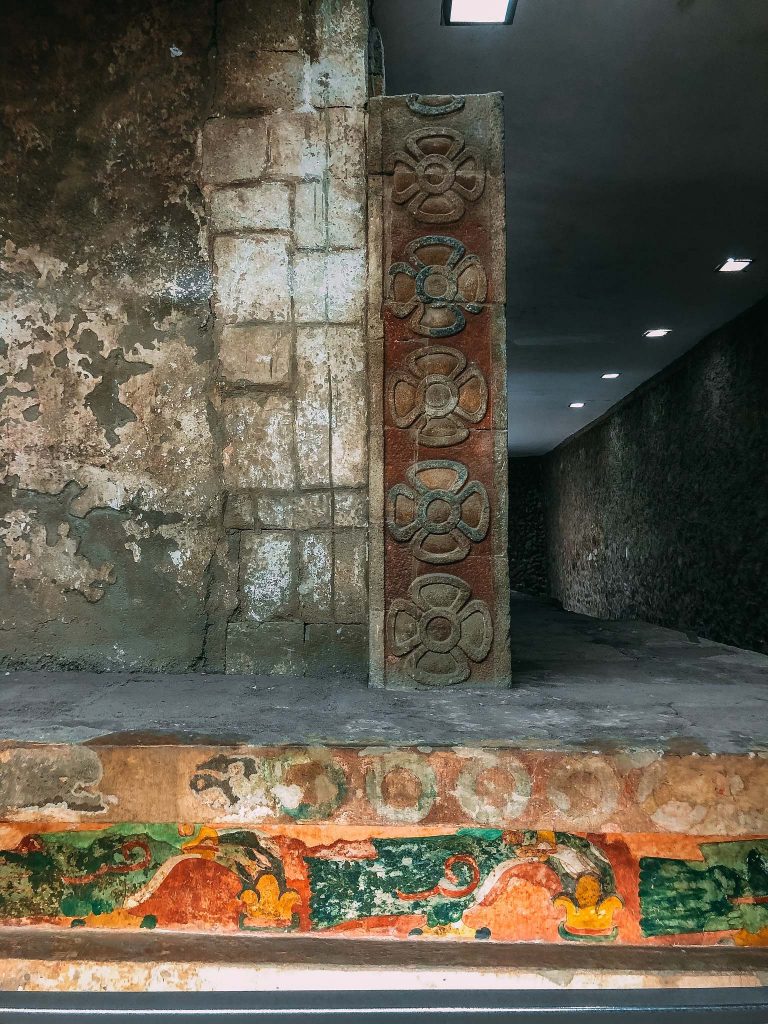
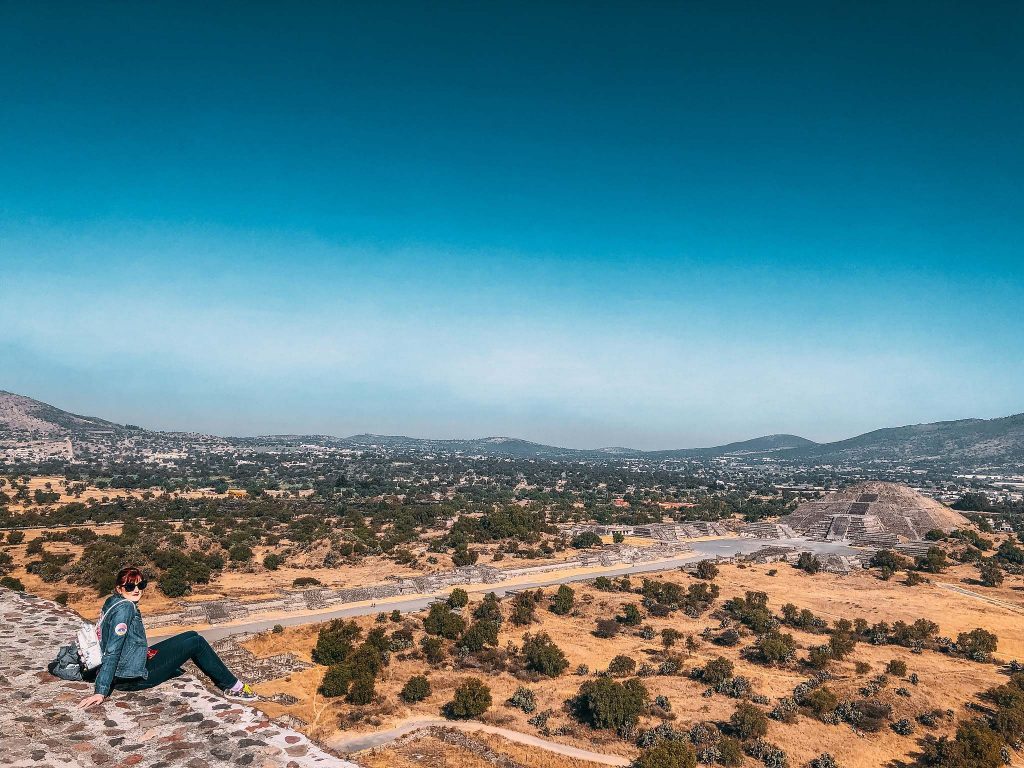
There are multiple ways to get to Teotihuacan. The most popular method is by guided tour. This was the option we chose and ended up booking a semi-private tour through Airbnb experience. You can also opt to take public transit or even schedule an Uber driver to take you to the site which is about 1 hour and 20 minutes outside the city depending on your location.

La Gruta
If you’re looking for a seat with a view, there is no other option for lunch other than ‘La Gruta’. This restaurant is located inside a prehistoric cave, just a few steps away from the Teotihuacan Pyramids. Here you will get the chance to taste delicious dishes that mix local ingredients with pre-Hispanic recipes. You also get to enjoy traditional Mexican folk dance shows while dining. Seats often book quickly, so reservations are recommended.
There are a few smaller museums around the Pyramid sites, but I would recommend spending more time exploring the actual pyramids themselves and the areas around them. It’s incredible how much you’re allowed to climb on and venture into, and there is always something new to discover for yourself.
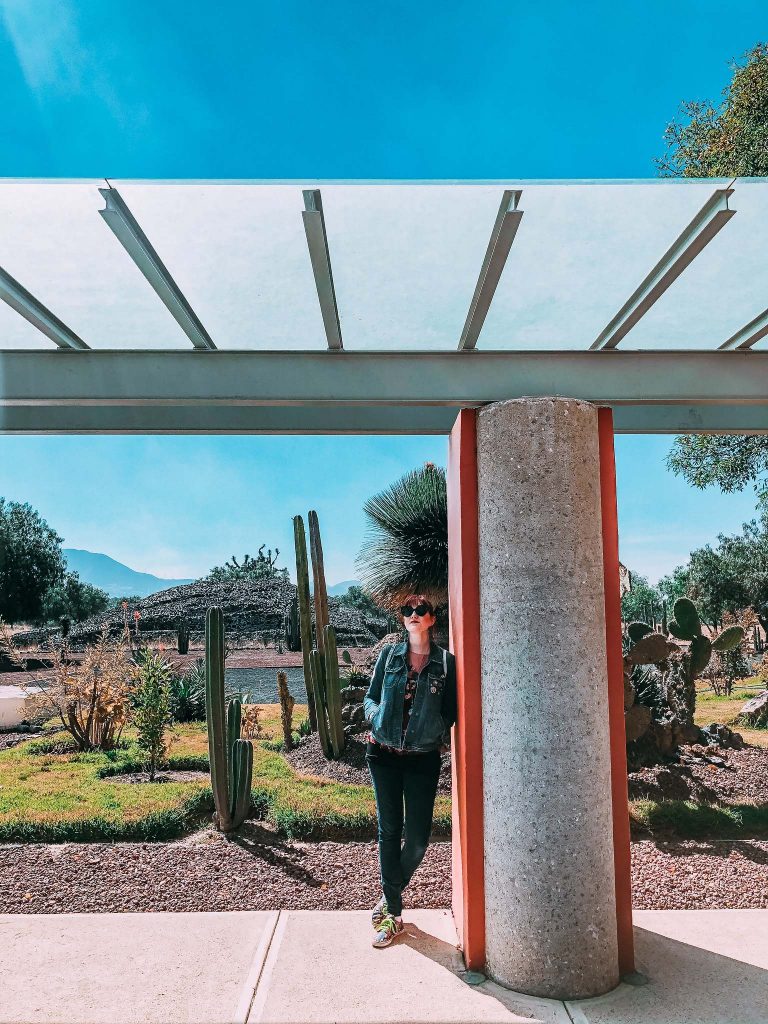
Day Six – Xochimilco
Xochimilco is the Venice of Mexico. It’s an enormous network of canals that spread across this southern district of Mexico City. Xochimilco means “Floating Gardens” as the Aztecs created chinampas which were artificial agricultural plots rich in minerals and there they would plant thousands of flower fields. Today, Xochimilco is UNESCO World Heritage Site as it preserves this Aztecs technology. The main pier I would advise boarding your boat from is located about 45 minutes outside the centre of town but is well, well worth the effort to get there. I have an entire guide on Xochimilco so if you want to know all the tips and tricks for visiting definitely check that out as this is just a brief overview!
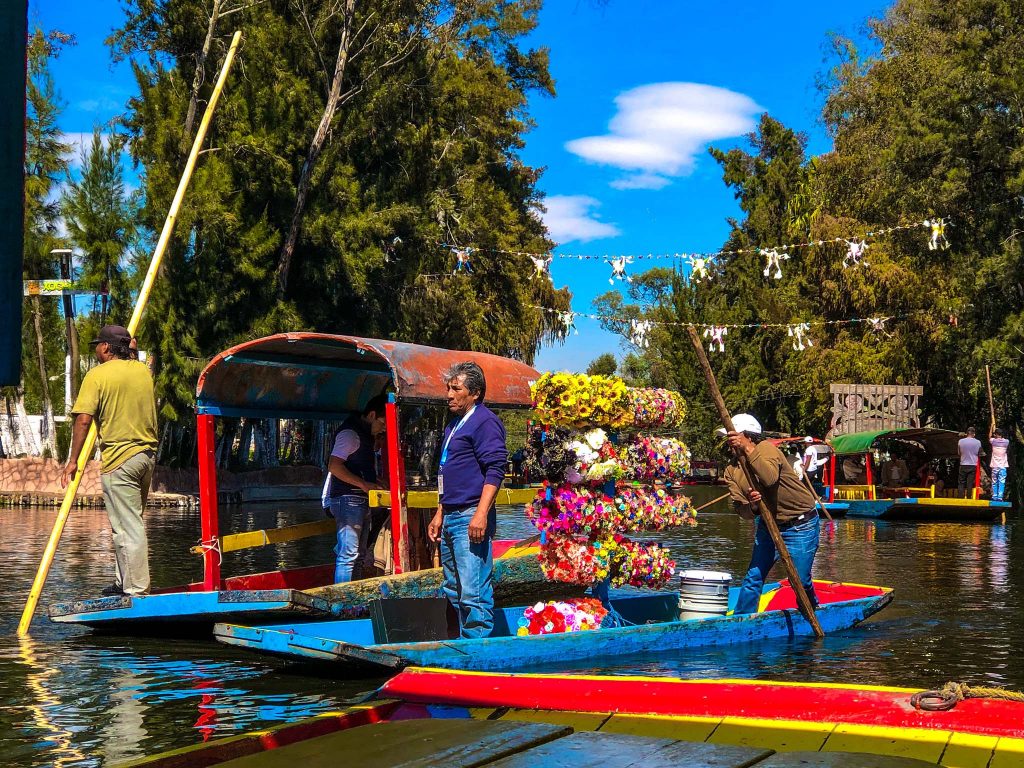
Mercado Xochimilco
You’re allowed to bring whatever food and drinks you want onto the boat but if you have time to stop, check out the Mercado Xochimilco before arriving at the pier. You can load up with fresh sweet and savoury treats to enjoy on your journey!
Embarcadero Nuevo Nativitas
Be sure to arrive at the ‘Embarcadero Nuevo Nativitas’. There are multiple embarcaderos, or ‘piers’, which service the canals but the Embarcadero Nuevo Nativitas is the official pier to catch your boat and where you’ll find the most honest pricing.
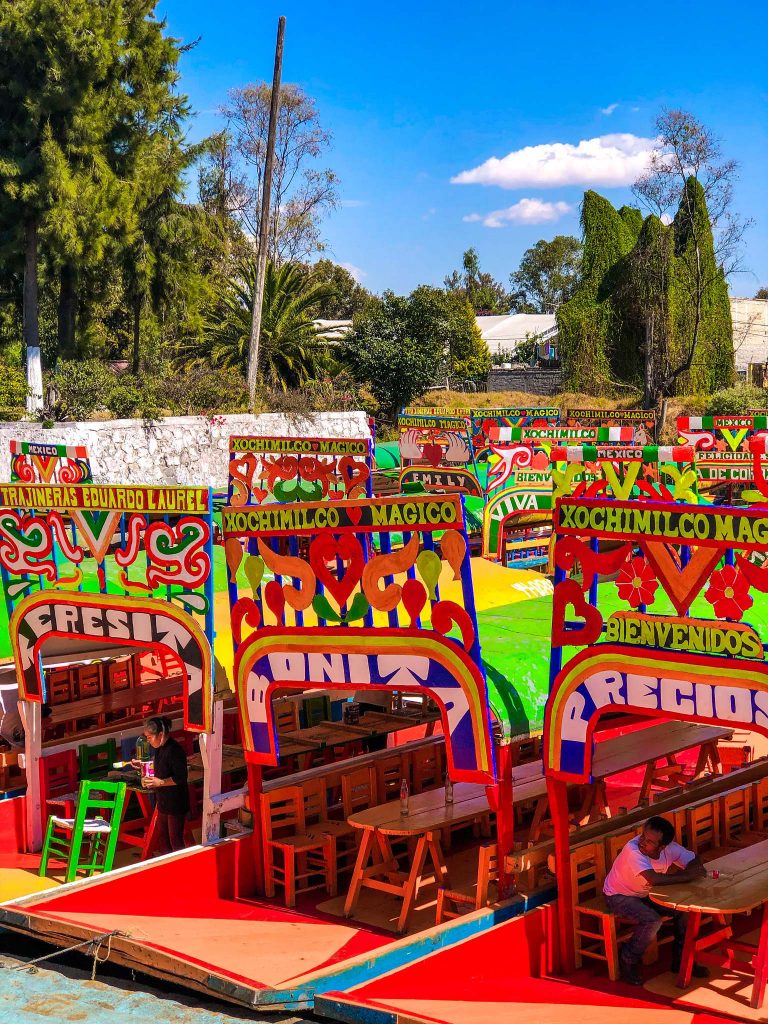
Trajineras
The boats which run up and down the river are called ‘Trajineras’. The maximum rate set by the city is 500 pesos per hour, per boat (not per person as some tricky boatmen might quote you). You can try and haggle your way down but unless you have a good grasp on Spanish haggling, you’ll find it pretty difficult to get the rides any cheaper than 400-450 pesos per hour. It’s up to you how long you want to be on the canals but I would honestly say I wish we’d gone out for longer! Plus, the longer you go, the better chance you’ll have of striking a deal!
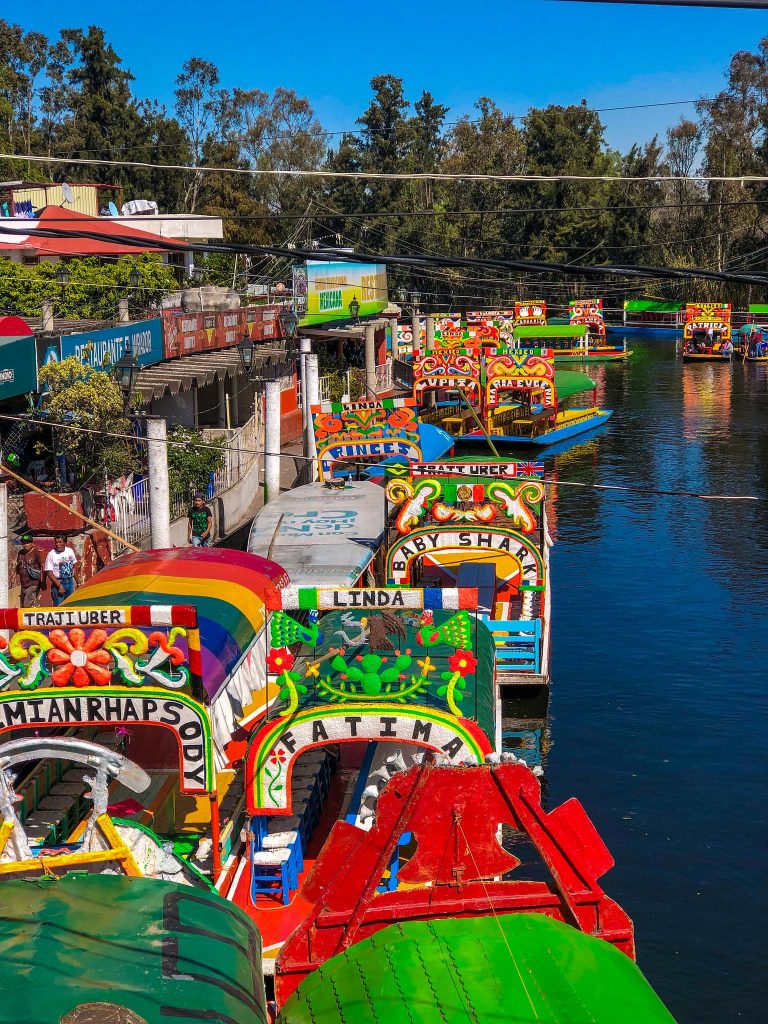
Food
One of the most enjoyable parts of the experience is the food. Food is available throughout the canals as you travel. Vendors with roasted corn, coconut water, fresh tacos, cold beer and spicy micheladas float up and down the canals. The prices are more than you’d pay in the market but you pay for the privilege of having them coming right to your boat!
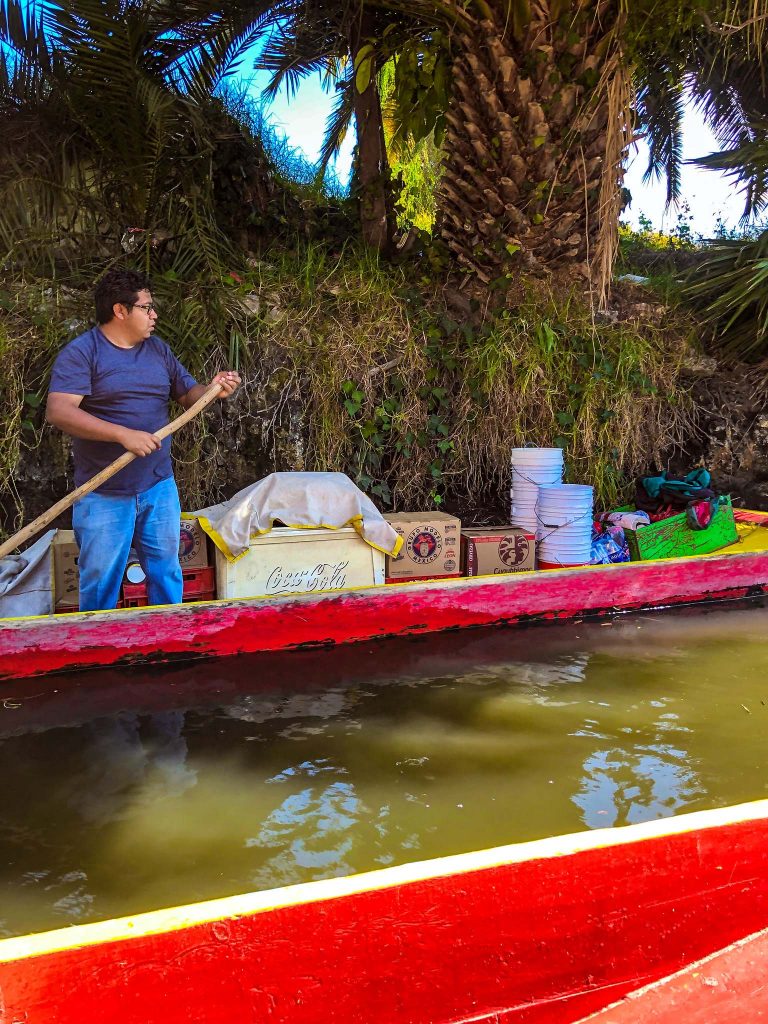
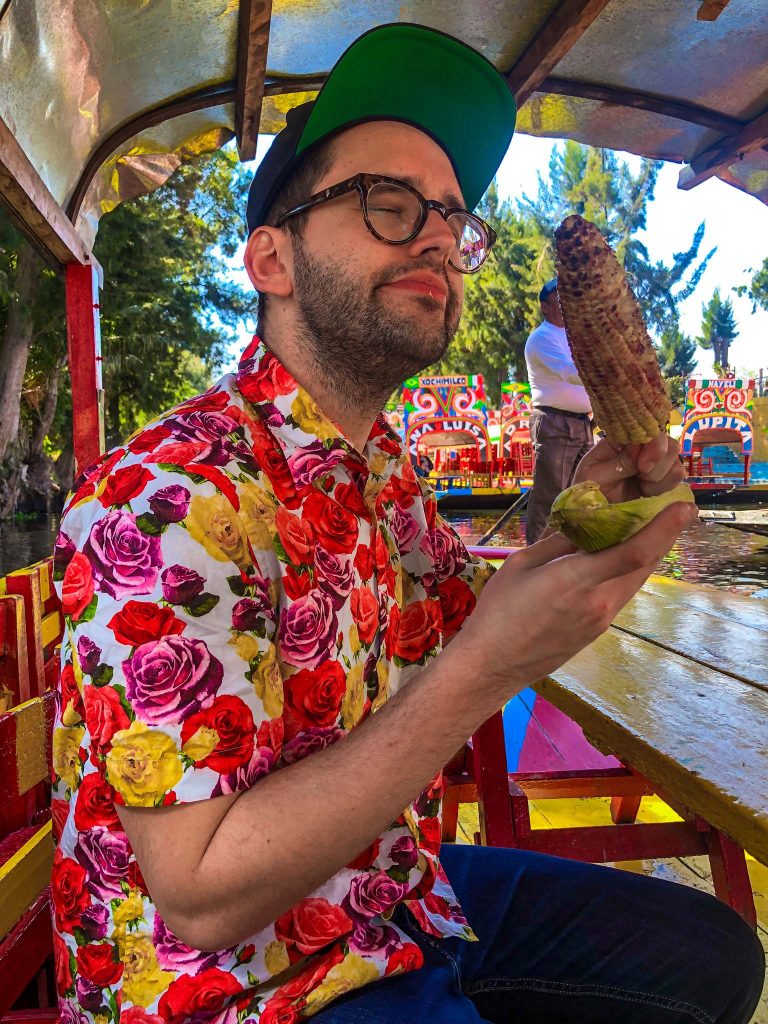
Entertainment along the Canal
As soon as you set off into the canals, the sound of musicians playing across the waters can immediately be heard. Mariachi bands floating on their own individual boats float down the river. As they pass you by they’ll offer to board your boat and play a song or two or really as many as you want!
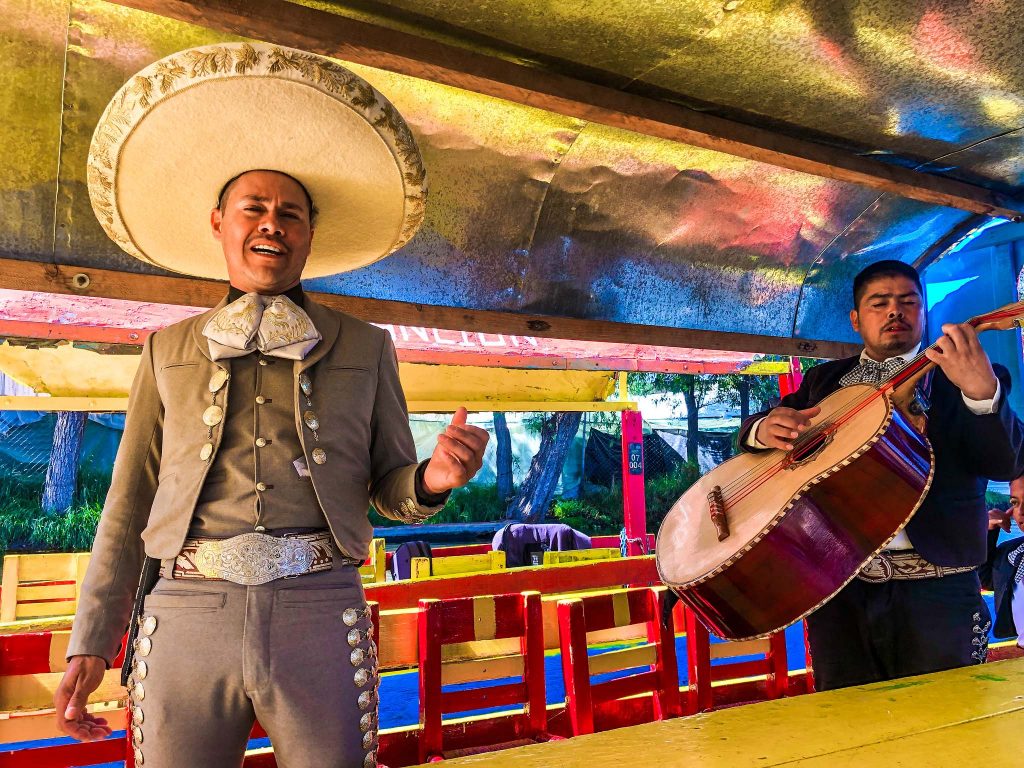
Songs cost about 150 pesos per number but are cheaper the more songs you want. In addition to the mariachi bands, you’ll also see various smaller boats with only 2 to 3 people playing the xylophones as they float down the canal.
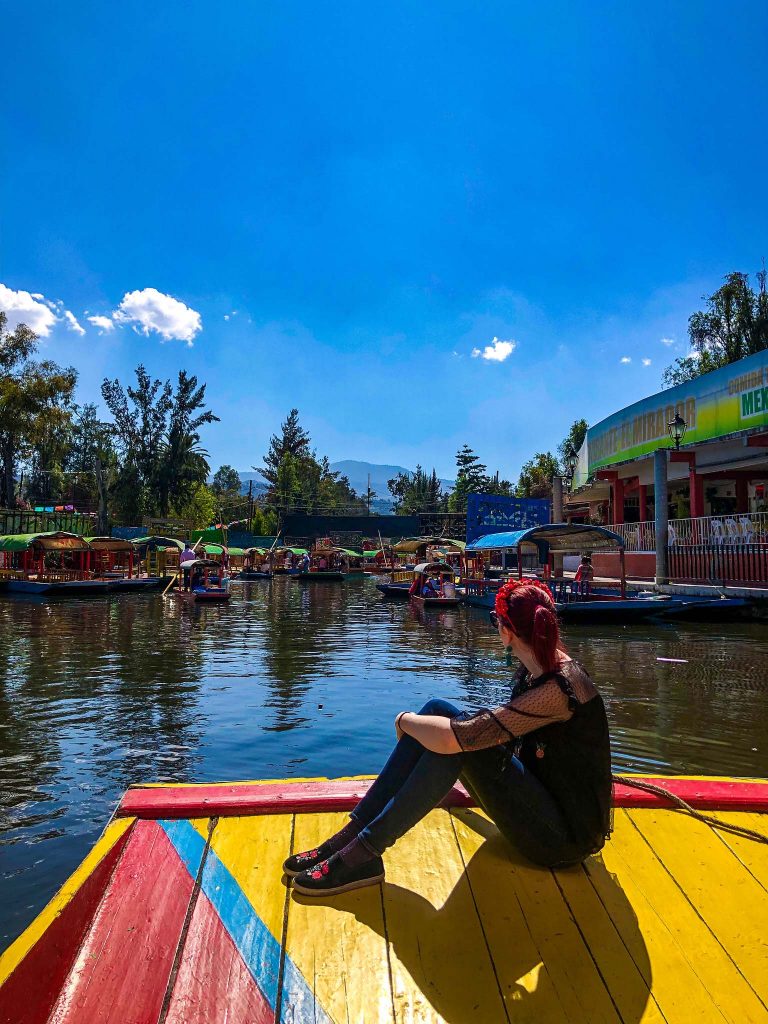
Day Seven – Back Home
Since it’s your last day, it’s best to take it easy. Most flights out of Mexico City require you to be at the airport at least 3 hours early. And you have to remember traffic to the airport can add in some travel time to that as well. So best not to plan too many activities. Instead of a big activity, I would head down to Lalo! for a delicious, laid-back brunch in the Roma Norte neighbourhood.
If you have any time left, I would recommend wandering through any park that’s close by. Parks in Mexico City are truly spectacular places. They have a certain kind of magic that you just want to soak up before leaving. Grab some street treats and take a seat on a bench to marvel at the light coming through the trees. Watch the smiling people milling about with their adorable dogs and get ready to miss everything you’ve come to love about this city.
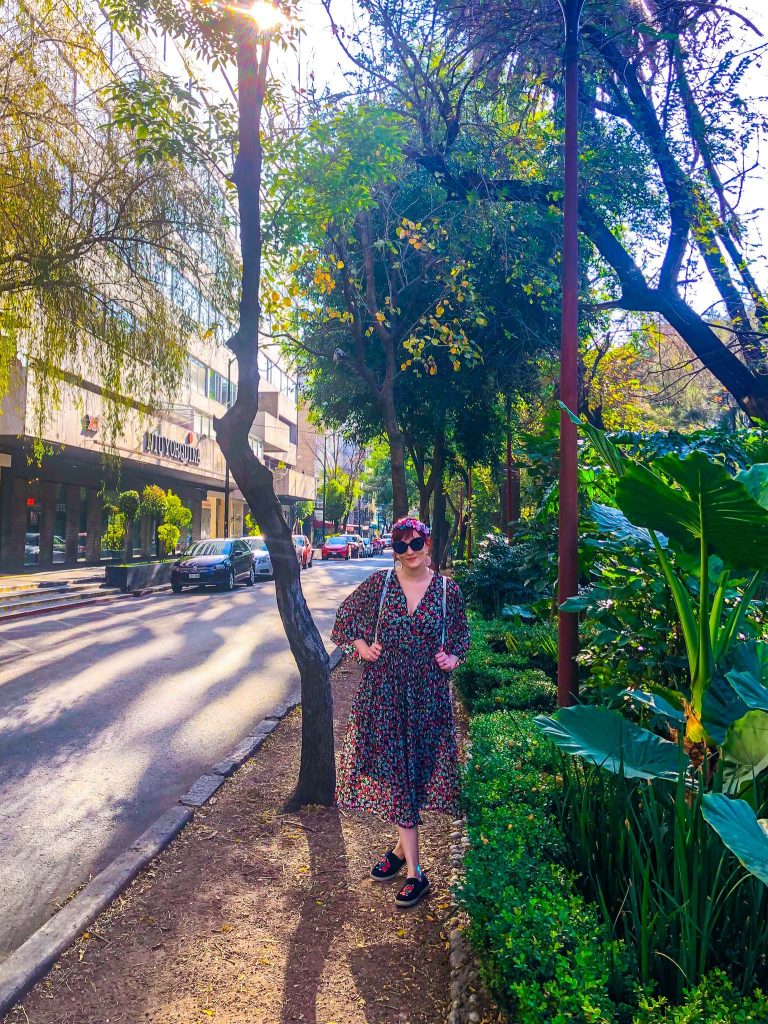
While seven days might not be nearly enough time to see everything there is to see in Mexico City, it certainly is a great start. And trust me, after one visit, you’ll be planning your next trip as soon as you return home!

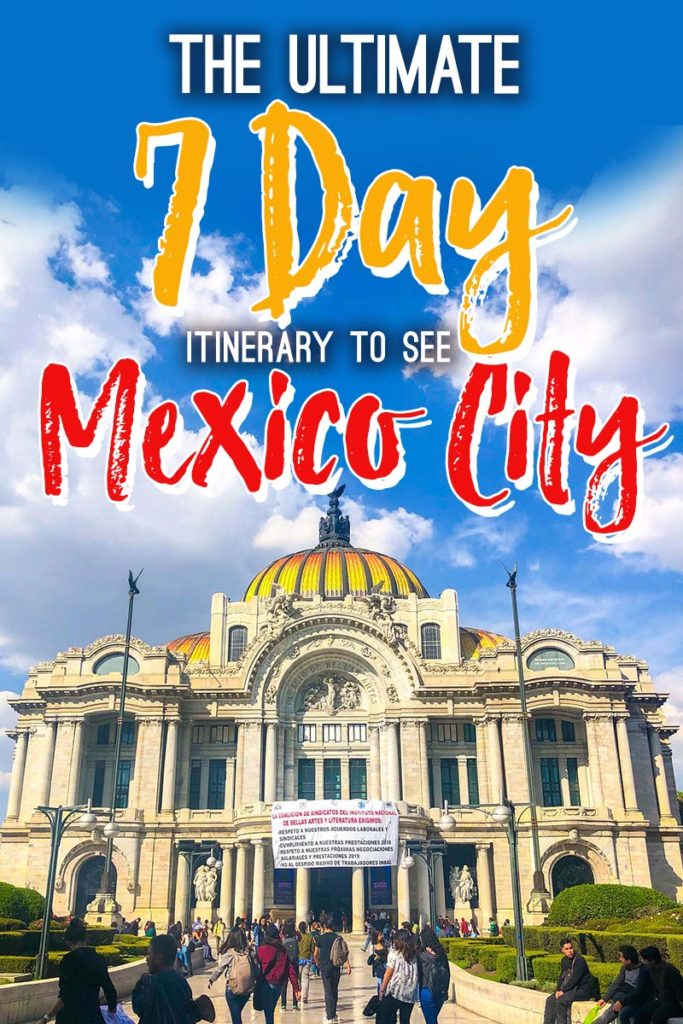
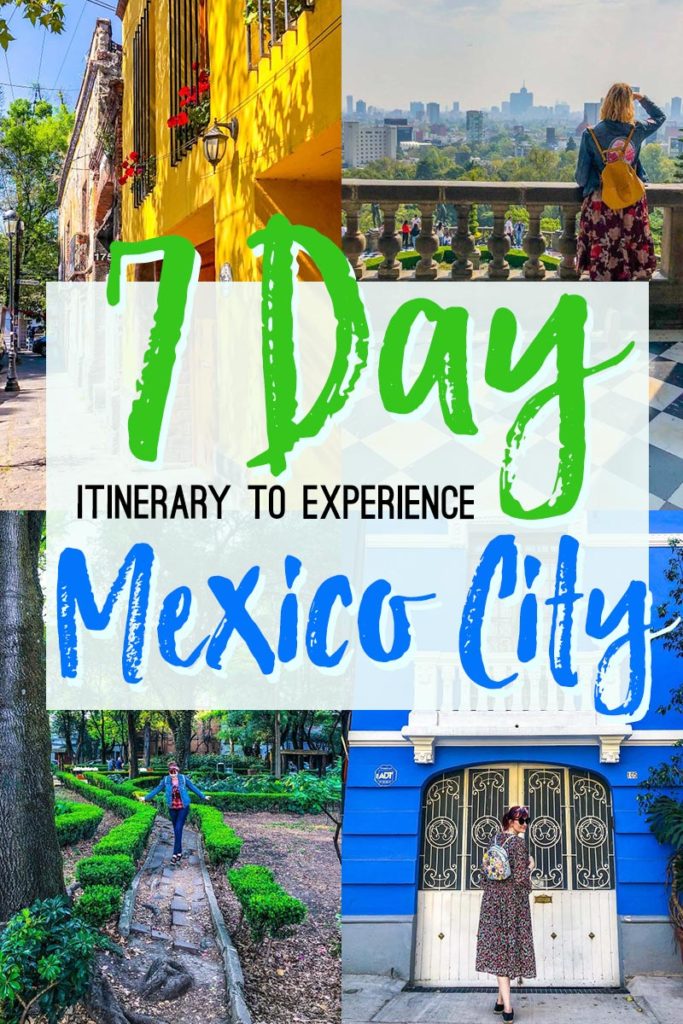

Leave a Comment
Pingback: 15 Destinations You NEED to Travel to in 2020 | The Creative Adventurer on January 14, 2020

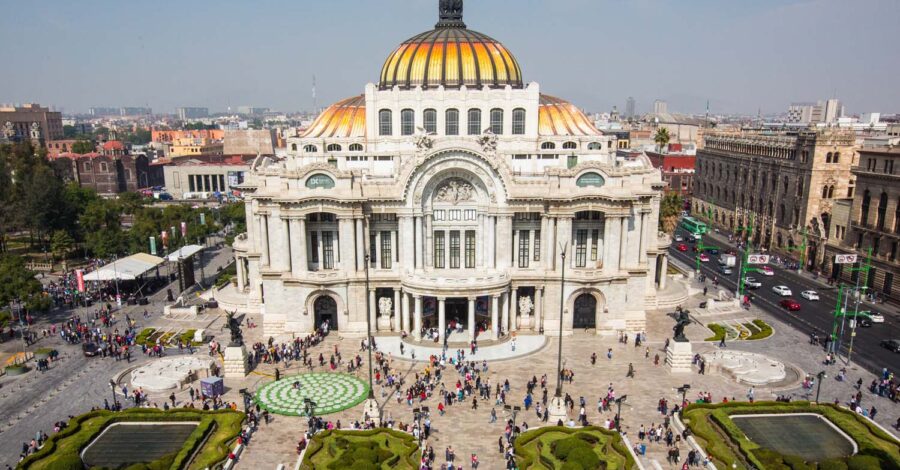
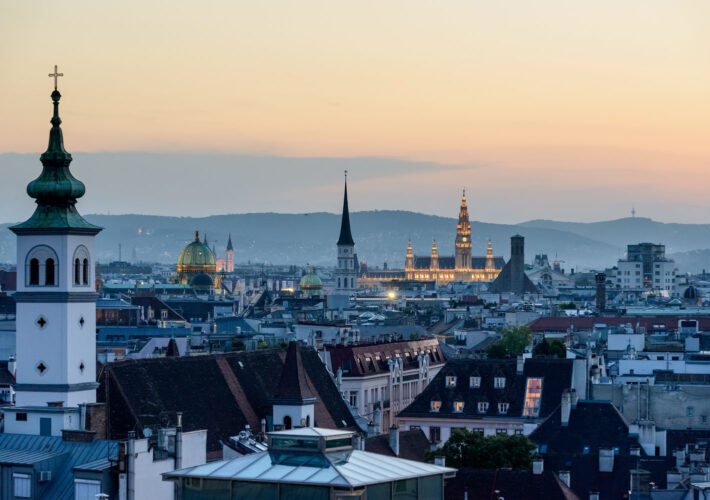
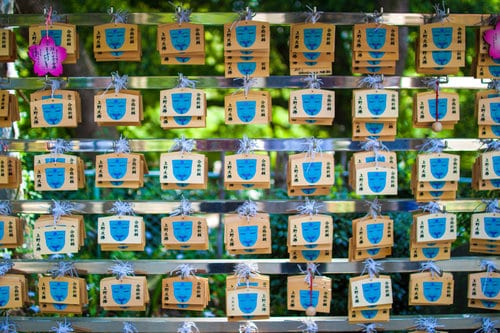
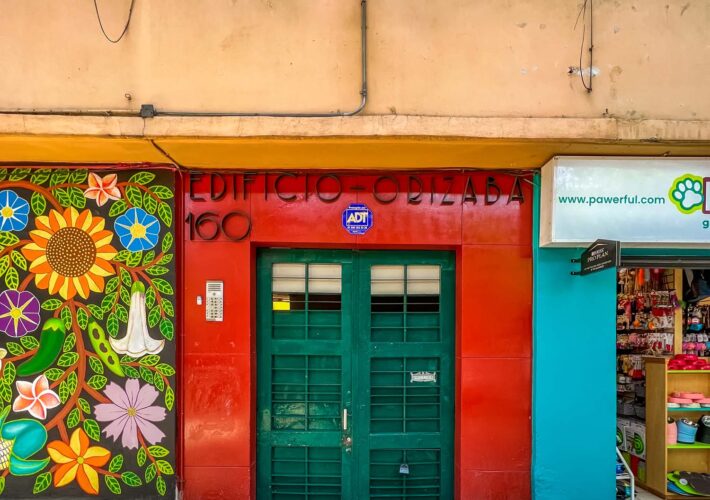
1 COMMENT